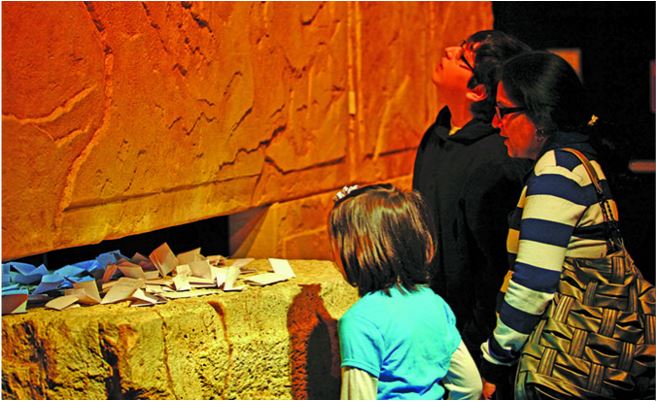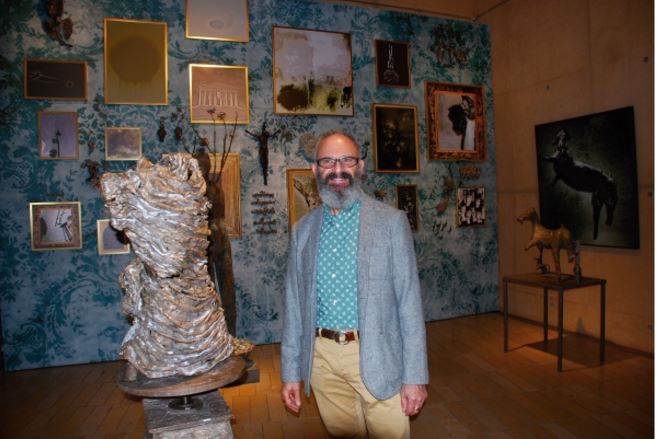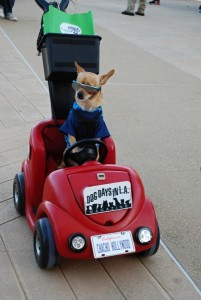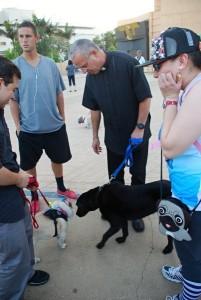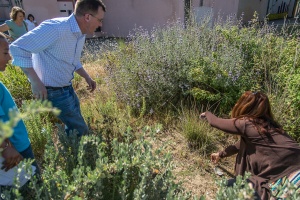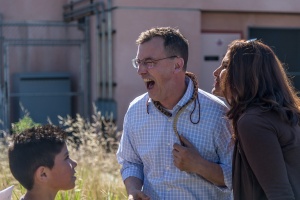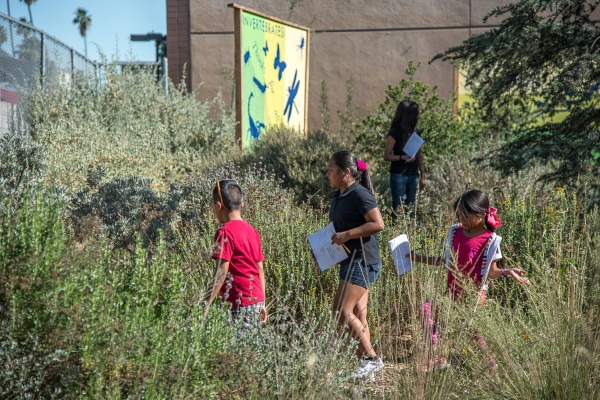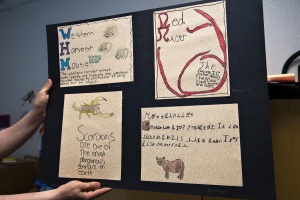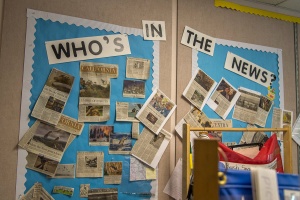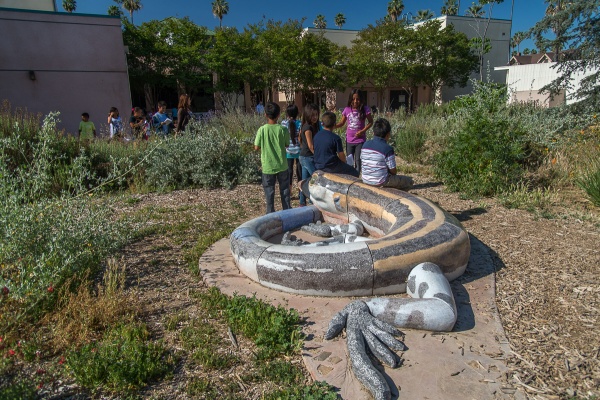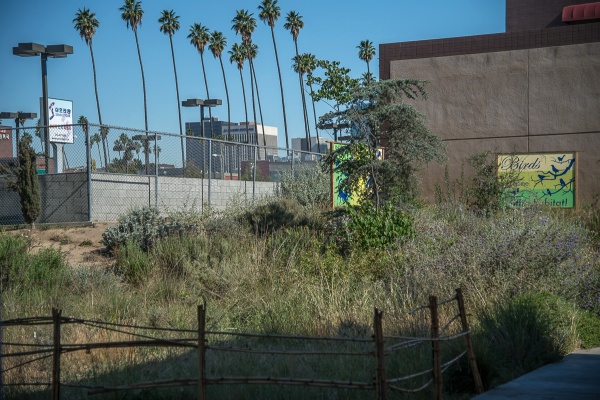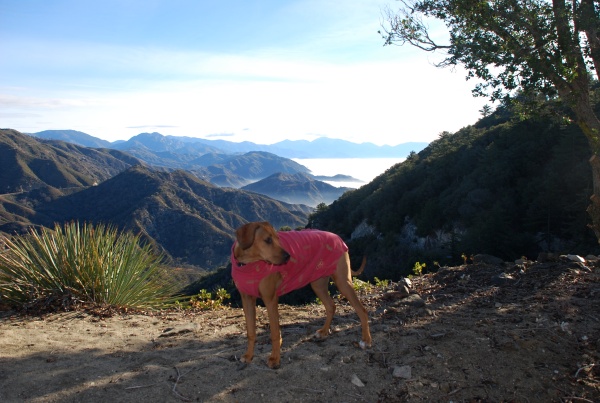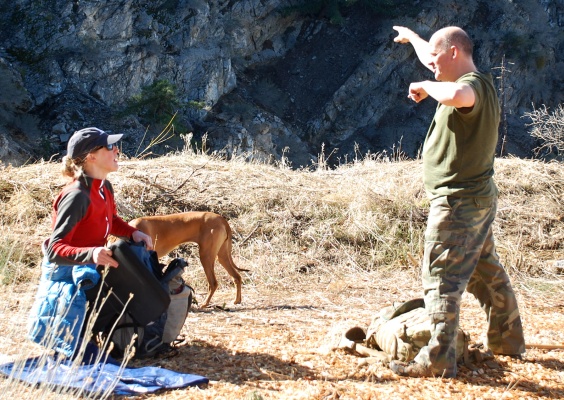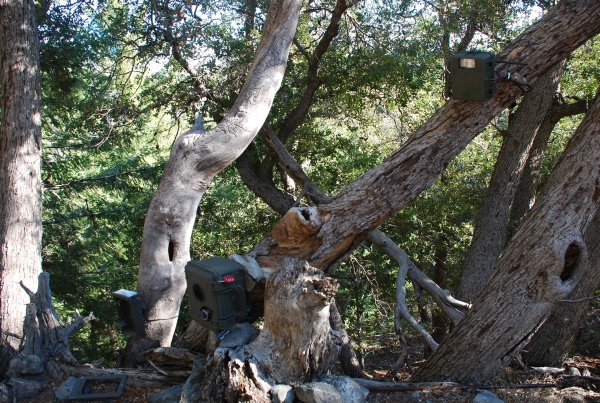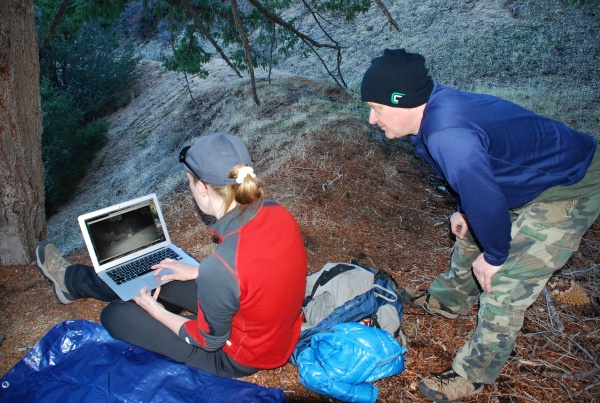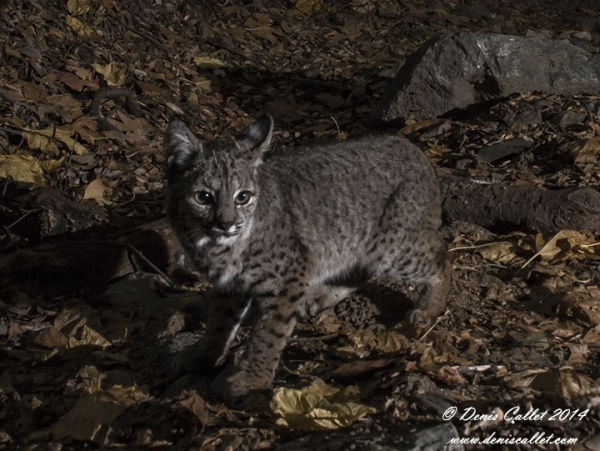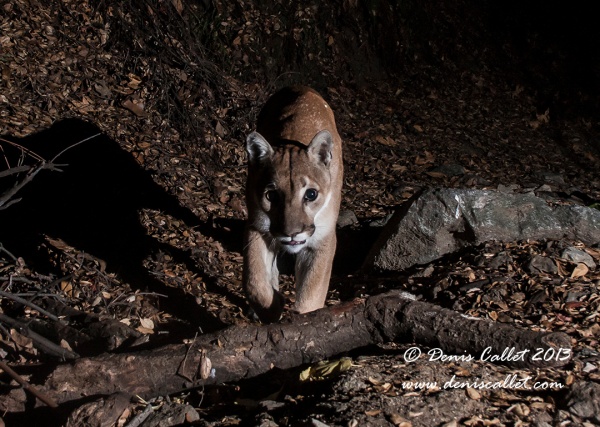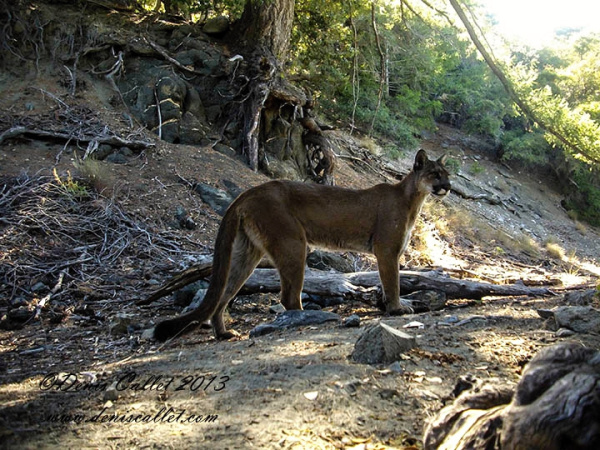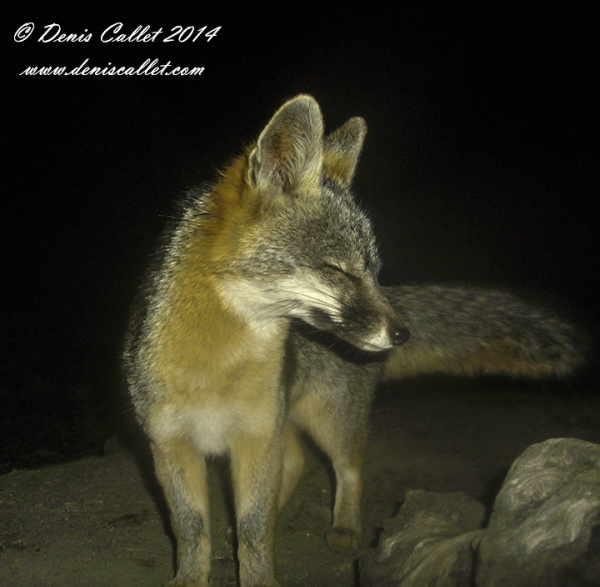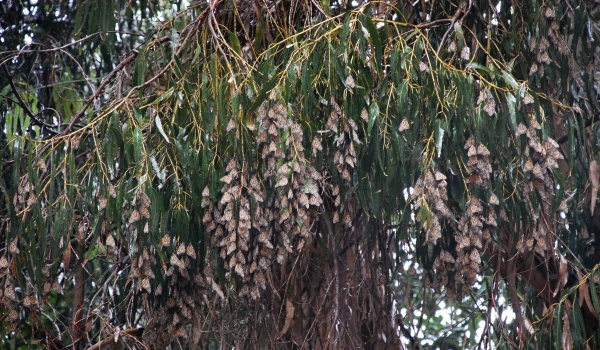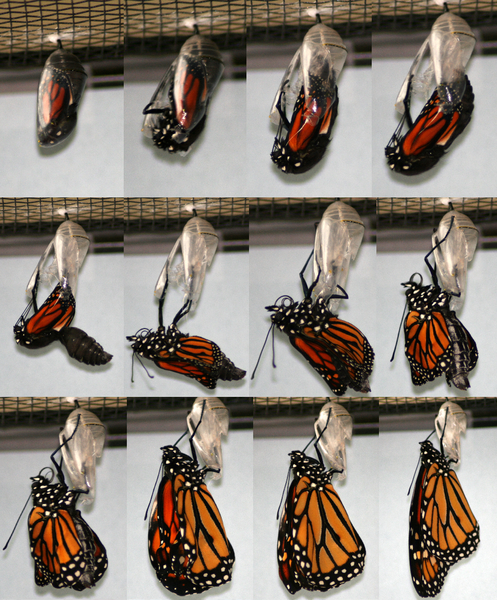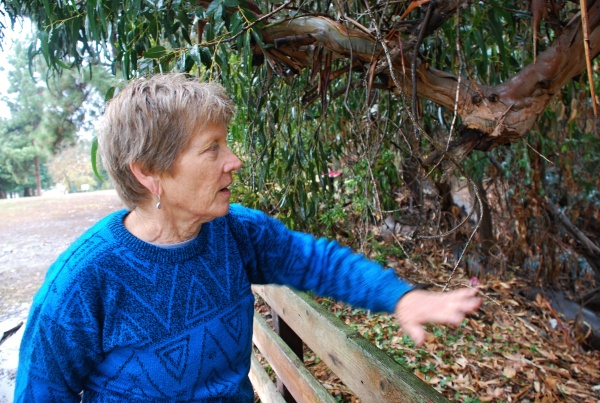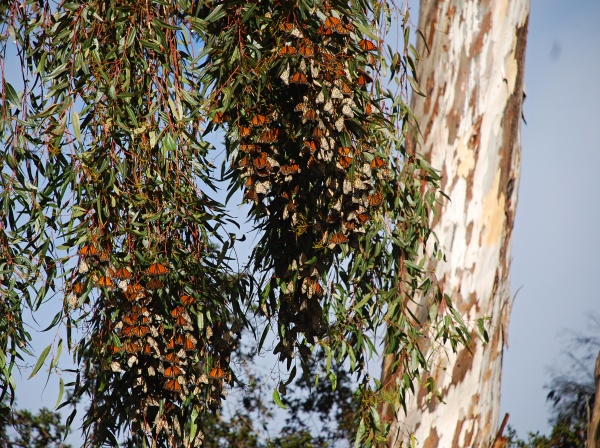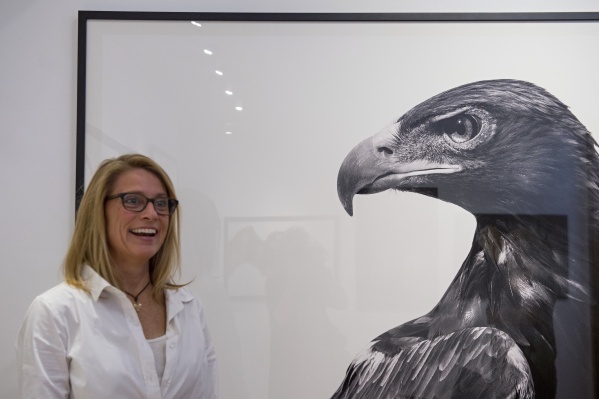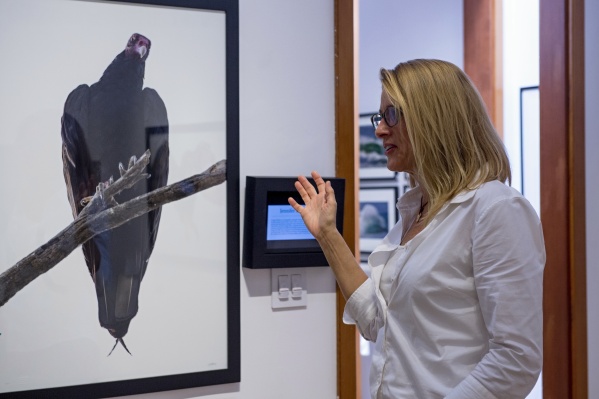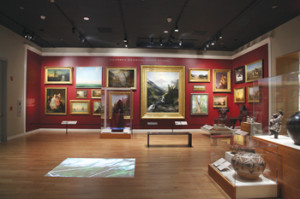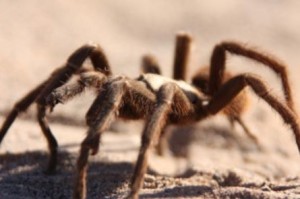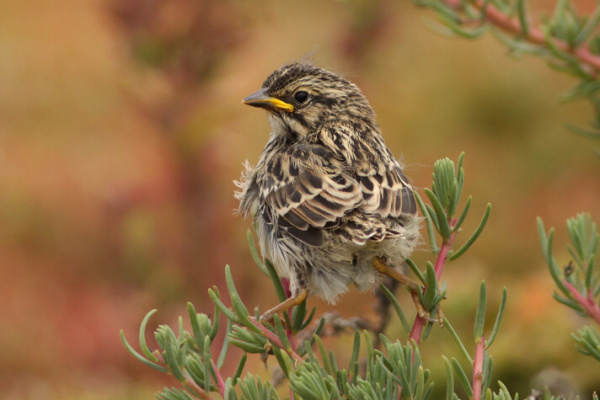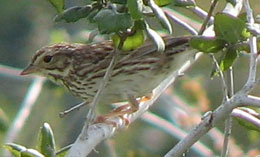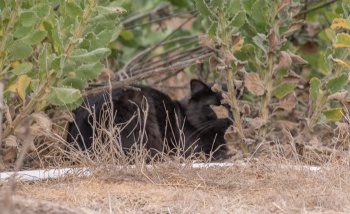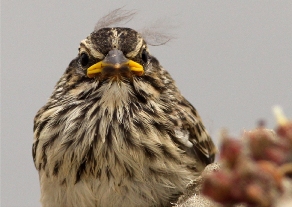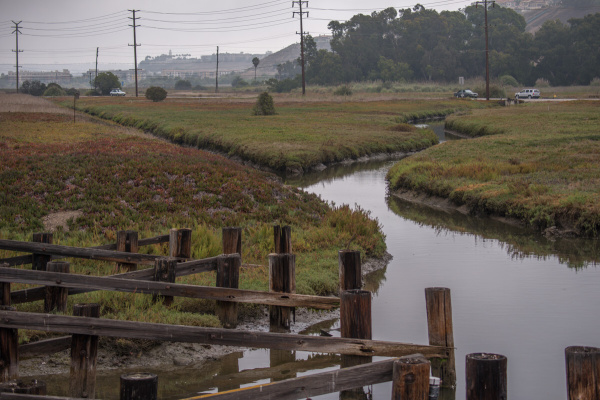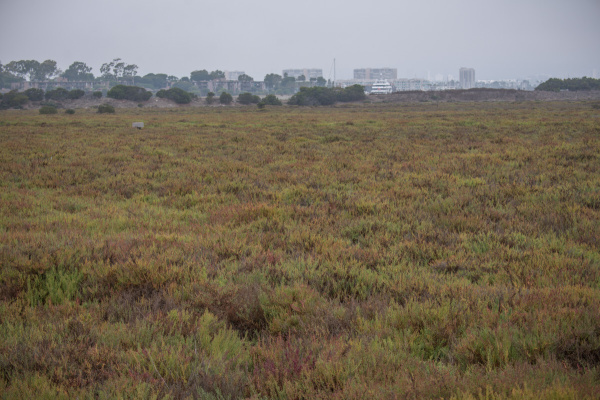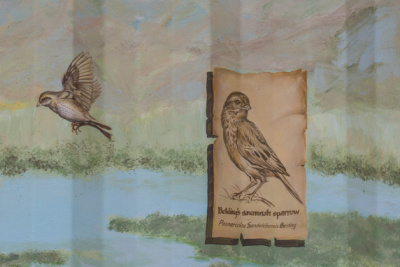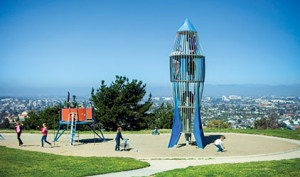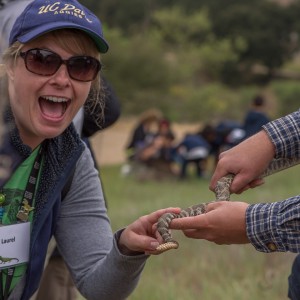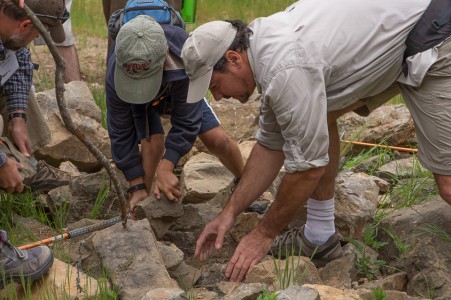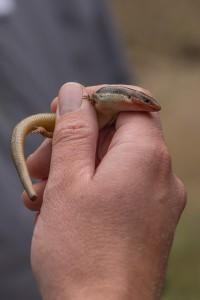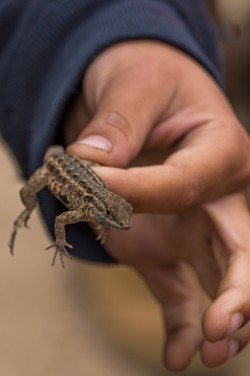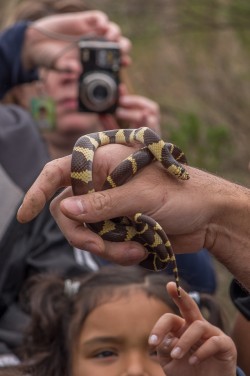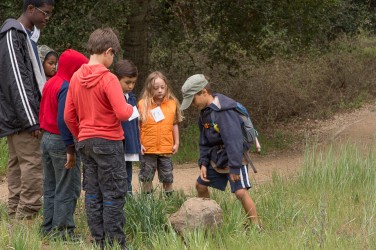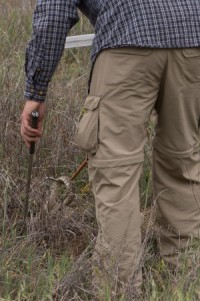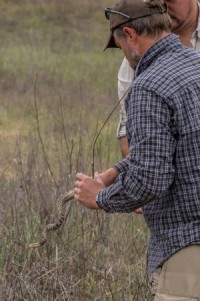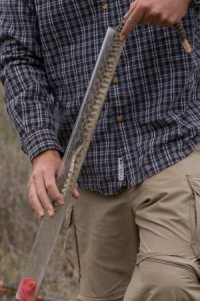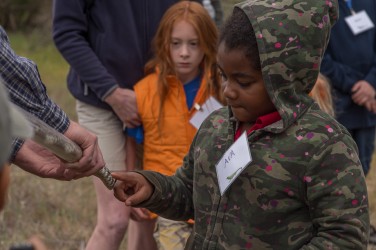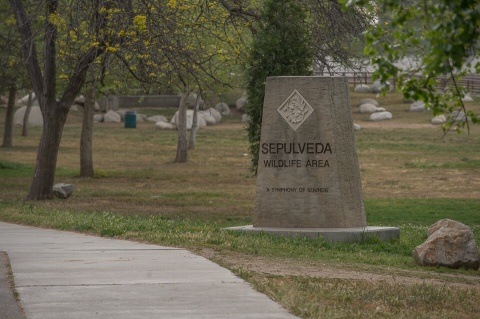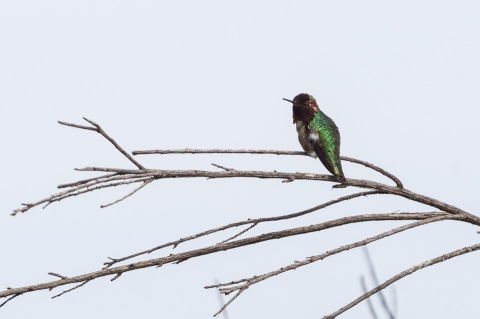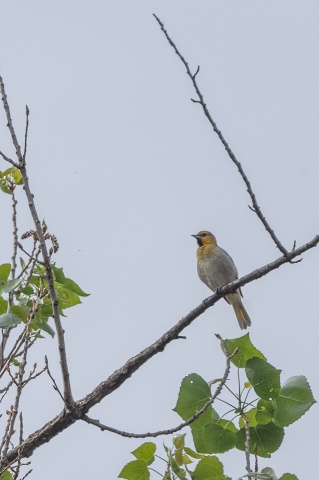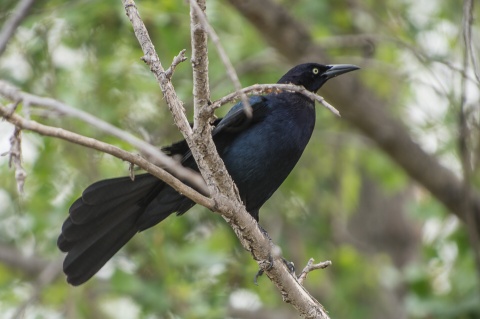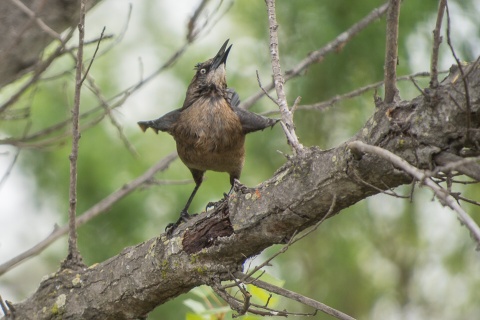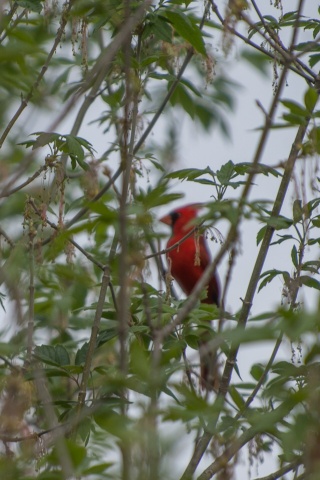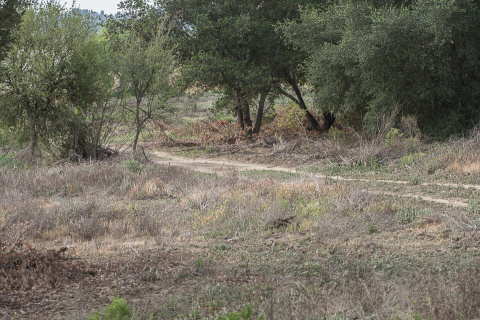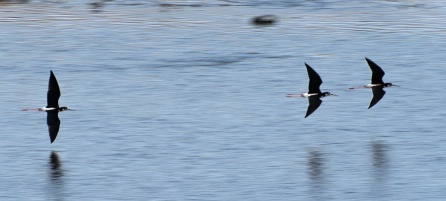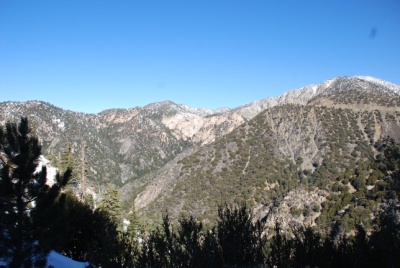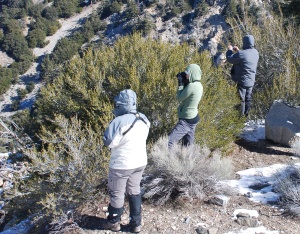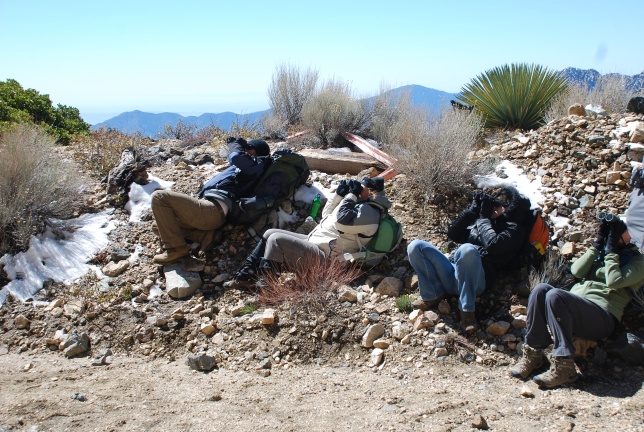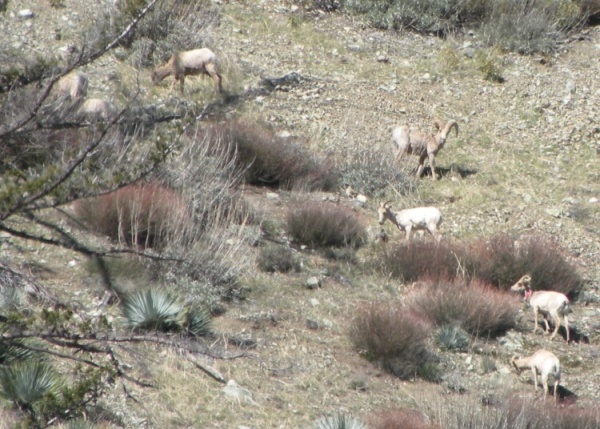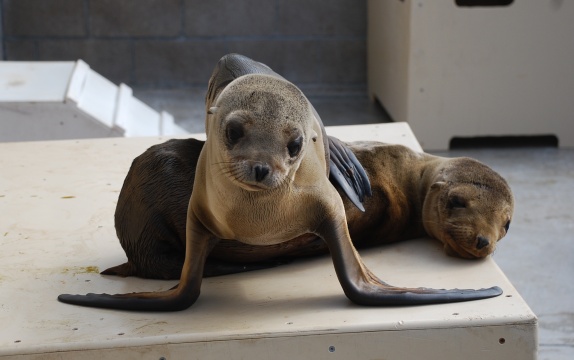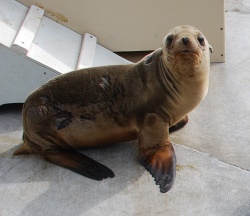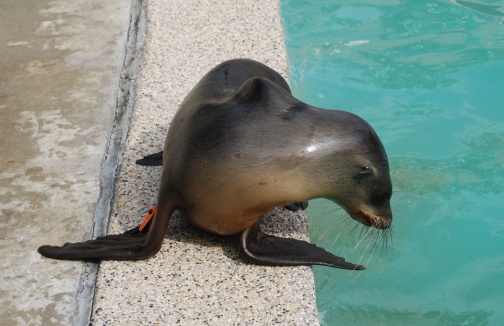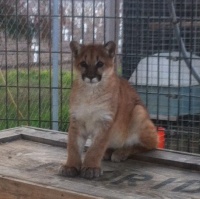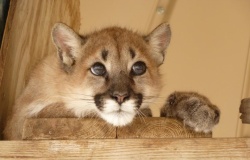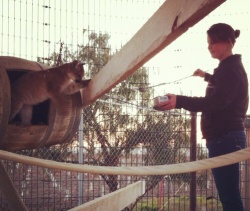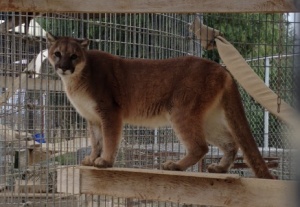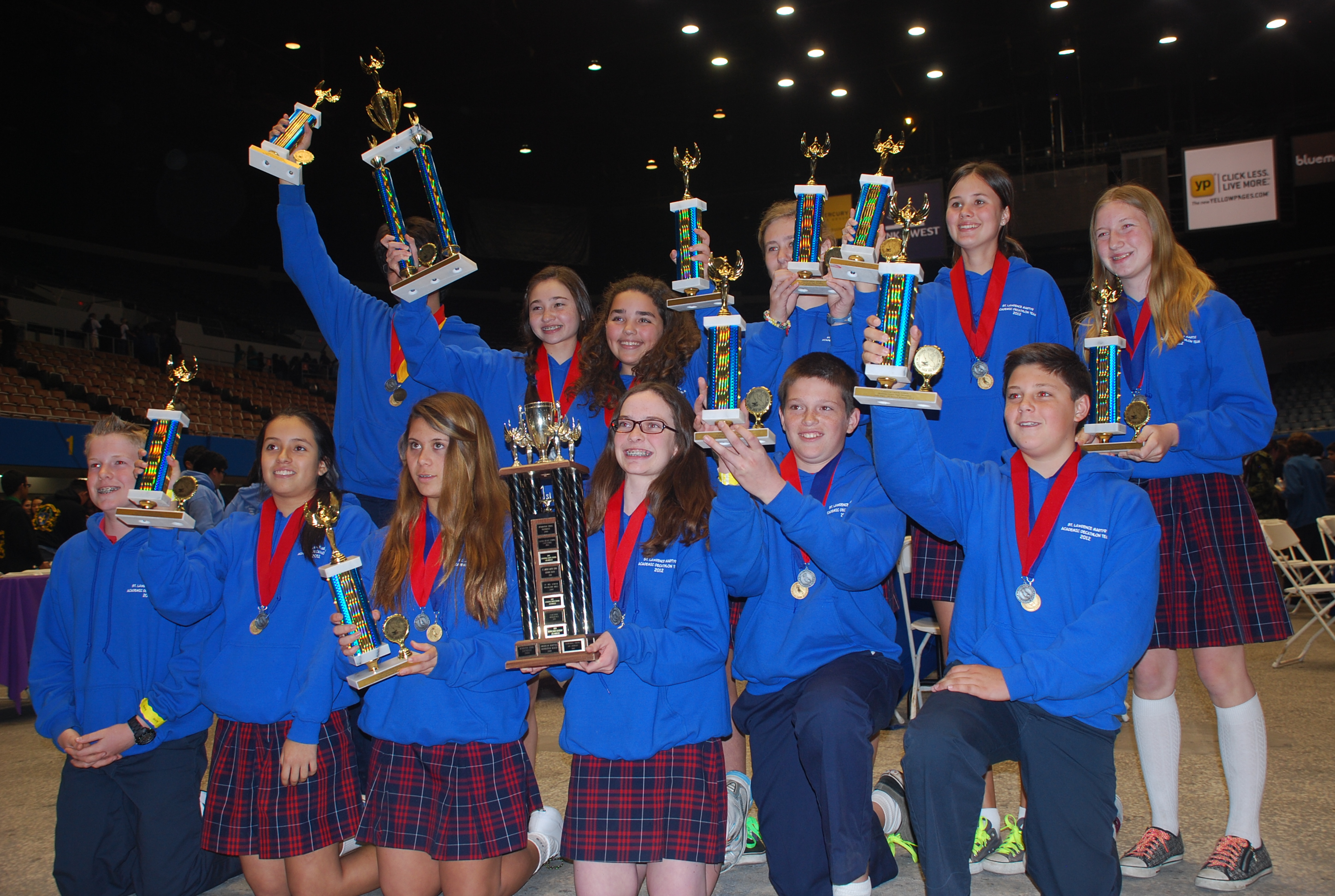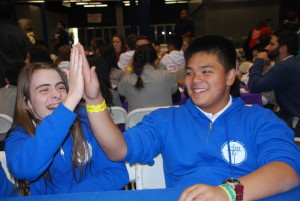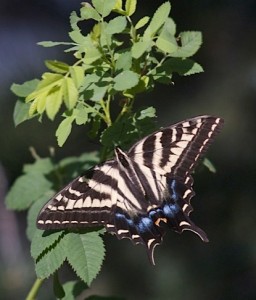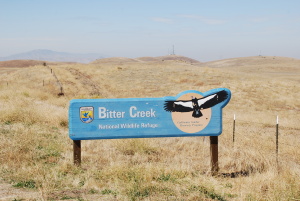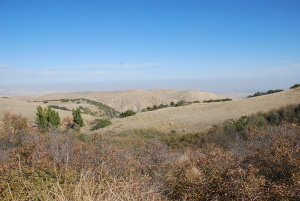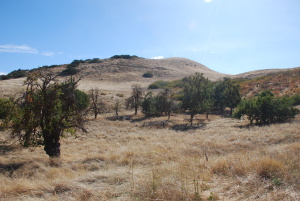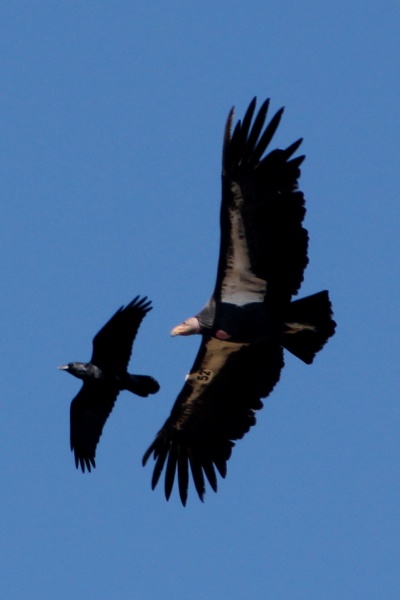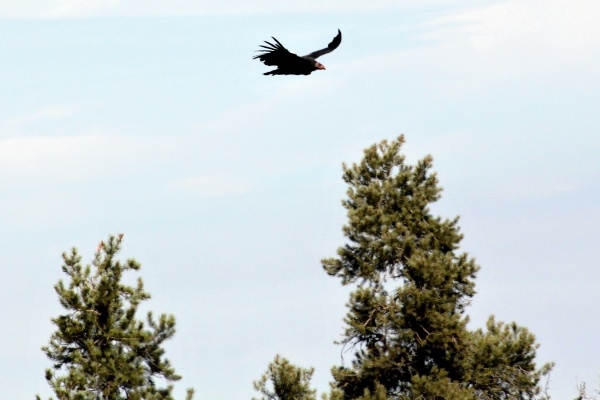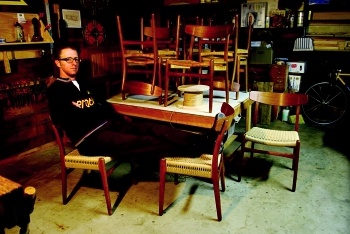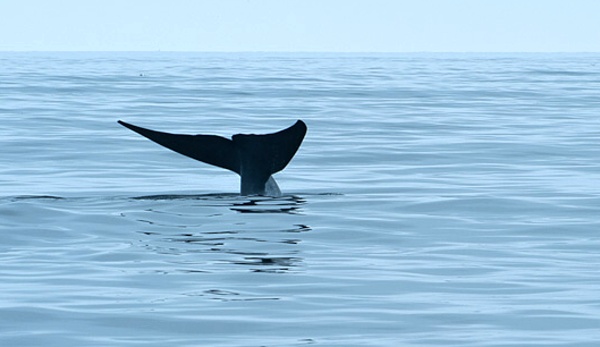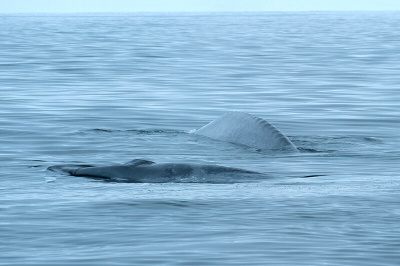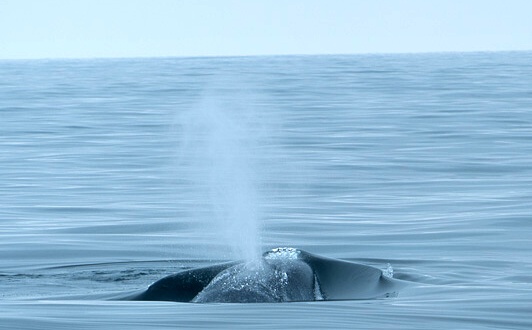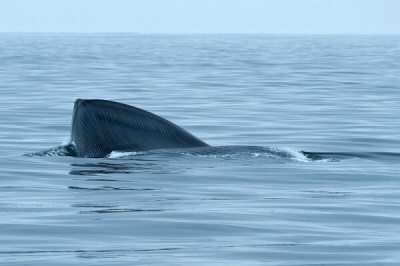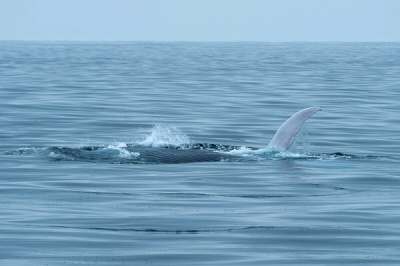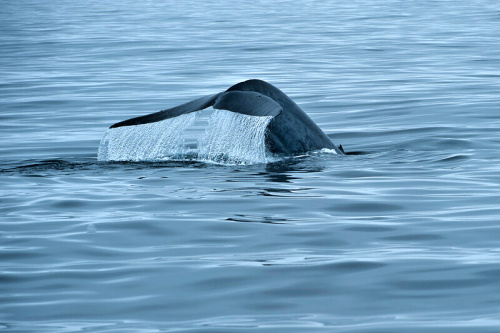June 2023
About Brenda Rees
Words, words, words! I love words!
I’m an experienced writer who knows her way around a thesaurus, can interview the toughest of subjects and has a knack of distilling complicated topics down to a compelling story told with just the right amount of wit and flair.
My published work has appeared in The Los Angeles Times, Westways Magazine, Arroyo Monthly, Pomona College Magazine, L.A. Parent Magazine, The Tidings Weekly, Pasadena Magazine as well as The EastsiderLA blog. For eight years, I have been a case study writer for ArtCenter College of Design’s Designmatters program. I’ve been editing The Griffith Observer, the newsletter of the nonprofit Friends of Griffith Park where I am also a board member, for five years.
Currently, I am working on a series of personal essays that will help me understand how, after years of personal and collective trouble and turmoil, I still wake up reasonably happy to be alive and cautiously optimistic about what could be coming up over the horizon. Stay tuned.
If you’d like to pitch me a story, reach out to me at brenda (at) brendarees (dot) com.
Other Outlet Posts
Selected Clips 2000 – present
AMERICANA MAGAZINE
Bottled Memories PDF
Americana, March 2017
The Race of Gentlemen PDF
Americana, Winter 2017
Ricardo Breceda: Man of Steel PDF
Americana, August 2016
PASADENA MAGAZINE
Surviving Cancer with Care PDF
City of Hope patients discover ongoing healing with a human touch.
Pasadena Magazine, June 2008
The Woman Behind the Business PDF
One of the restaurant industry’s few female execs, Peggy Cherng and her husband expanded a single Pasadena eatery into giant national food chain Panda Restaurant Group.
Pasadena Magazine, May 2008
PRESERVATION ONLINE
Fairy-Tale Ending PDF
A California Playground Gets a Second Chance
Preservation Online, March 30, 2007
THE EASTSIDER LA
For Love of the Arroyo: New exhibit celebrates the waterway’s rural and urban landscapes LINK
The Eastsider LA, May 18, 2017
Black mustard, the pretty boy of invasive weeds, is now blooming like crazy LINK
The Eastsider LA, April 18, 2017
Five questions for the new director of the Audubon Center at Debs Park LINK
The Eastsider LA, July 21, 2016
Bowling for bargains in Northeast L.A. LINK
The Eastsider LA, June 16, 2016
Five birds you probably will see on Bird LA Day LINK
The Eastsider LA, May 5, 2016
Living – safely – with the urban coyote LINK
The Eastsider LA, October 1, 2015
Elysian Valley kayaker leaves his disability on the shore LINK
The Eastsider LA, October 1, 2015
Mount Washington’s Fan Man restores refreshing reminders of the past LINK
The Eastsider LA, August 18, 2015
Occidental College Laboratory is for the Birds LINK
The Eastsider LA, April 30, 2015
THE TIDINGS / ANGELUS NEWS
Someday is Now: The Art of Corita Kent LINK
The Tidings, July 9, 2015
Making Special Education ‘Everyday Education’ PDF
The Tidings, Jan. 31, 2003
Grief and Lessons in Life at Ground Zero PDF
The Tidings, Nov. 23, 2001
Remembering Cardinal Karol, 25 Years Later PDF
The Tidings, Aug. 24, 2001
Kitty Felde: Sharing Stories on the Air PDF
The Tidings, June 22, 2001
Bald is Beautiful at Incarnation School PDF
The Tidings, June 8, 2001
Jumping for Diego at St. John Eudes PDF
The Tidings, Mar. 23, 2001
The Backpack Kid
The Tidings, April 23, 1999
THE QUARTERLY
Descanso Gardens: Wildflowers Paint Native Plant Garden PDF
Spring 2010
Descanso Gardens: Celebrating the Camellia PDF
Winter 2009
Descanso Gardens: Paths for All Ages From Asphalt Roads to Hiking
Trails PDF
Summer 2009
CALIFORNIA GARDENER
What to Put Between the Pavers PDF
California Gardener, May/June 2008
LA PARENT
How Green is Your Nest? PDF
Why — and how — parents are going organic in the baby’s room.
B.A.B.Y. Magazine
A Time for Tree Hugging PDF
A grassroots guide to going green in L.A. – and why we should all be doing it.
L.A. Parent Magazine, Cover Story, April 2007
Breastfeeding in Public Places: Raising Eyebrows and Cultural Issues
L.A. Parent, Cover Story, June 2003
MSNBC
Recreating the ‘60’s PDF
MSNBC / Pencil News, Oct. 29, 2002
Summer Stories…with a lot of Junk! PDF
MSNBC / Pencil News, July 18, 2002
Griffith Park: The Urban Oasis PDF
MSNBC / Pencil News, May 31, 2001
No Fluke! Summer Migration of Whale a Good Time PDF
MSNBC / Pencil News, Mar. 27, 2001
The Age of Chivalry Reigns Again PDF
MSNBC / Pencil News, Feb. 15, 20001
Colossal Fossil Coming to L.A. PDF
MSNBC / Pencil News, Nov. 16, 2000
The Doctor is Still In: Doctor Demento PDF
MSNBC / Pencil News, Oct. 4, 2000
Series Recreates Radio Shows PDF
MSNBC / Pencil News, Oct. 4, 2000
Arroyo Monthly Posts
Selected Clips 2007 – Present
- A Family Affair: The California Cactus Center nurtures the botanical wonders of cacti and succulents along with familial bonds (page 22), Arroyo Monthly, July 2019
- Go Glamping, Backyard Style: With a little (or a lot) of help, your summer party can be the talk of the town (page 15), Arroyo Monthly, July 2019
- A Crowded Family Tree: Blended families can complicated today’s family dynamics with multiple sets of grandparents vying for attention (page 10), Arroyo Monthly, April 2019
- When the Smoke Clears: Wildfires are changing California’s insurance industry (page 18), Arroyo Monthly, March 2019
- Back to Biomechanical Basics: The functional fitness workout method strengthens your ability to accomplish everyday tasks (page 27), Arroyo Monthly, January 2019
- Forging an East-West Pipeline: From its Pasadena offices, China’s Alibaba Pictures is quietly making incursions into Hollywood, (page 33) Arroyo Monthly, December 2018
- A New Blue View: Visitors can witness art conservation in action in Project Blue Boy (page 15), Arroyo Monthly, October 2018
- The Personal Touch: Longtime Pasadena philanthropists Bill and Judy Opel share fundraising tips and insights into the past, present and future of charitable giving (page 19), Arroyo Monthly, August 2018
- High-Tech Help for Seniors: New technologies aim to make the golden years healthier, more productive and meaningful (page 11), Arroyo Monthly, May 2018
- Tending the Perfect Lawn: The Rose Bowl’s dynamic landscaping duo talks turf (page 19), Arroyo Monthly, March 2018
- Vision Quest: Caltech is training computers to identify the exact flora and fauna they are “seeing” (page 14), Arroyo Monthly, November 2016
- Santa Anita Park is Going High Tech: The Arcadia racetrack ups the stakes with the latest technology (page 38), Arroyo Monthly, November 2016
- Galleries of Change: The Autry National Center celebrates its 25th anniversary with a thoughtful remodel of two galleries, Arroyo Monthly, October 2013
- Back to the Land: City folk reconnect to their roots at b&bs that offer farming experiences, Arroyo Monthly, June, 2013
- Walk This Way: Whether competitive or social, walking brings seniors health, wealth and companionship, Arroyo Monthly, April 2013
- A Lasting Impression: Architecture and community have been lifelong passions for Bob Kneisel, Bungalow Heaven’s longtime champion (page 11), Arroyo Monthly, June 2012
- Wild About Gardening: Wynn Wilson created a wildlife refuge in the colorful garden around her Altadena Home, Arroyo Monthly, March 2012
- Midcentury Marvelous: David Johnson of Sidecar Furniture takes us back to a time when furniture was in a delicious groove, Arroyo Monthly, Sept. 2011
- Theater for Rocket Scientists: Left brain meets right for fun at Caltech’s Theater Arts Program, Arroyo Monthly, October 2010
- A Tuition Math Tutorial: , Arroyo Monthly, September 2010
- A Dream Deferred: Architect Bertram Goodhue’s only LA residence is re-born in South Pasadena, Arroyo Monthly, April 2008
- On The Road Again:Side Street Projects unveils its new mobile offices, which are entirely self-sufficient and sustainable, Arroyo Monthly, March 2008
- Through a Glass Darkly: The race for the world’s biggest telescope is heating up in Pasadena. CalTech is one front in the quest, but there’s another global contender you may not know about. Arroyo Monthly, January 2008
- Living in the Future: Art Center College of Design presents an international exhibition “Architecture and Technology for Intellectual Living,” Arroyo Monthly, March 2007
ArtCenter College of Design Case Studies
Selected ArtCenter Case Studies 2014-Present
- DOT Magazine: Social Innovation Designers Pioneering New Career Paths
- Coaniquem: Safe Ninos Designing Innovative Interactive Environments for Pediatric Healing
- Nike Girl Effect Studio
- Sustainabie Ecosystem for the Future of Vans
- Center Theatre Group: Playtime
- Eco Retreat Lab: Costa Rica Environmental Study Aboard
- Emdria: Healing Soldier Project
- Illustrated Journalism Studio
- Aquarium of the Pacific: Blue Hope
- Natural Light International Competition
Westways Posts
Selected Clips 2004 – Present
- Forest Lawn Glendale Memorial Park, Westways Magazine, June 2016
- The Art of Light, Westways Magazine, October 2015
- Be a Biologist, Westways Magazine, October 2015
- Out & About, Westways Magazine, July/August 2014
- Critter Migration, Westways Magazine, October 2013
- Worlds of Whimsy, Westways Magazine, June 2013
- Art for the People (Cover Story), Westways Magazine, April 2004
Southern California Wild Posts
Selected SoCalWild Posts 2011- present
- P-22, Movie Star (May, 2017)
- Staring Down the Mysterious California Newt (April, 2017)
- Giants Among Us: SoCal’s Giant Sea Bass (January, 2017)
- Home on the Range with SoCal’s Tule Elk (August, 2016)
- March of the Tarantulas (August, 2016)
- Hunting Crayfish with Hot Dogs (January, 2016)
- A Tale of Two Squirrels (April, 2015)
- They Came From the Ground! (March, 2015)
- Sepulveda Basin’s South Reserve: Where the Birds ‘Were’ (April, 2015)
- Filling SoCal Skies: Mexican Free Tailed Bats (August, 2014)
- Camera Trapping Masters (February, 2014)
- Reptile Hunting in Malibu Creek (May, 2013)
- Burbank Mountain Lions Thriving in Paso (January, 2013)
- Record Number of California Sea Lions Need Help (February, 2013)
- Barn Owl Angel (December, 2011)
- Riding the Thermal High (October, 2011)
- Rare Native Tadpoles Hatch at L.A. Zoo (May, 2011)
A Tale of Two Squirrels
Alan Muchlinski looked out his window in the 1990s and knew something was wrong. There was a squirrel in his West Covina backyard that wasn’t supposed to live in Southern California. An Eastern fox squirrel – not the native Western gray – was eating from his apricot tree. The grays don’t like the taste of fruit, but the Easties are indeed a different story.
It’s two squirrels in SoCal. One local, one imported. One, a big fluffy-tailed specialist with a penchant for pine trees and tree nuts that used to rule the roost in SoCal. The other, a red-furred sleek generalist from the East Coast, a fast procreator with an appetite for everything. To call this a mismatch would be an understatement.
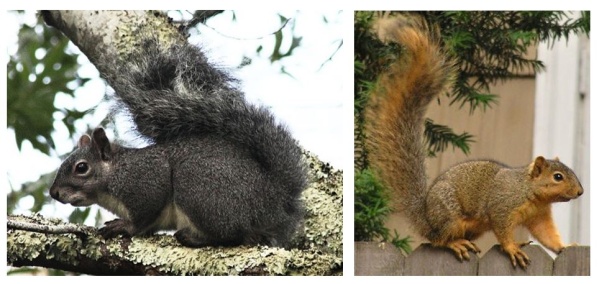
As a biological sciences professor at Cal State LA, Muchlinski took on the task of discovering how this non-native species was affecting SoCal’s resident Western gray, a critter that hasn’t been under the microscope much. It’s a squirrel, after all, a taken-for-granted species that doesn’t have the powerful draw of a mountain lion or big-horned sheep.
“So many people would say, ‘What’s the big deal? One species replacing another? What does it matter?’ But the reality is introduced species cause problems with the natives and affect the ecosystem,” he says. “We just don’t know what the complete consequences are.”
The frisky Easties found passage to Los Angeles around 1904 to the Veteran’s Hospital in West LA where they were “pets” to residents. At first, no one seemed to mind when a few escaped into the ‘wild’, but then damage to local fruit and nut trees became apparent and the pets quickly turned into pests.
Henry Huntington also put out the call to import Easties into his nascent San Marino Gardens for atmosphere flavor (unfortunately, they were DOA on the local train).
Through the years, Muchlinski has been a faculty advisor to many grad students wanting to uncover more details about Squirrels in Our Midst.
In 2004, graduate student Julie King, tracking Easties distribution patterns in SoCal, discovered many folks were trapping and dumping them in other locations thus exacerbating the bigger problem. Easties followed human development and slowly made their way along SoCal lowlands, setting up shop while grays in their pathway, quietly retreated into pocket populations.
Even with a few studies on the grays, it’s apparent their numbers are decreasing.
Today, Muchlinski is faculty advisor to another grad student, Chris DeMarco who has been immersed in the squirrel world for three years; his thesis project involves collecting and interpreting genetic samplings of gray populations. He’s targeted populations in the Santa Monica Mountains, Griffith Park and Rancho Santa Ana Botanical Gardens. Within those areas – especially Griffith Park – grays have become isolated into smaller subgroups.
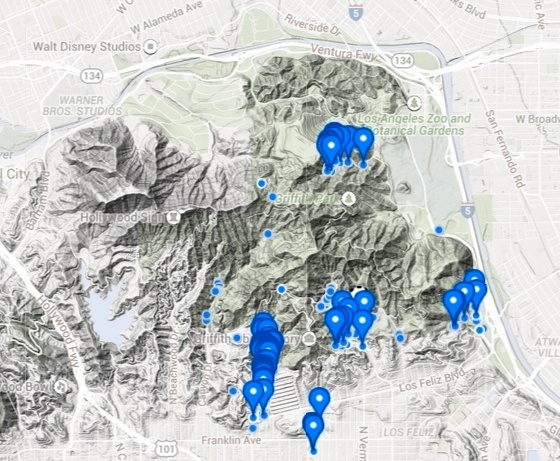
“Gray squirrels are also an indicator species of how well a natural oak/conifer habitat is doing,” says DeMarco walking through Griffith’s Ferndell. The fluffy mammal also plants trees (hiding/forgetting nuts and through their feces); they also eat a particular fungus that, when dispersed through their feces, allows oak and pine tree roots to better absorb water.
Ferndell is just one Griffith Park area on DeMarco’s radar. Grays have been found in Boy’s Camp, Vermont Canyon and the Roosevelt Golf Course. He enlists help from citizen scientists who record observations via I Naturalist to find squirrels for his studies.
DeMarco collects genetic material from strategically placed “hair tubes” that are stuffed with walnuts and other squirrel delights.
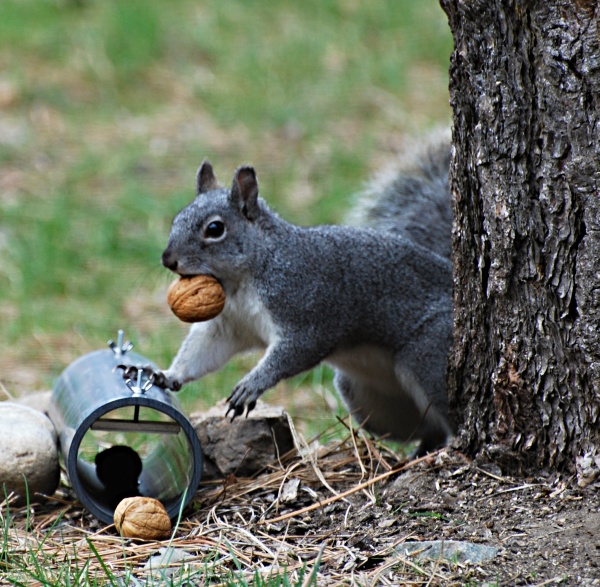
When the critter enters to enjoy an easy meal, some of its hair brushes up against sticky tape inside the tube and is left in the tube. These hair follicles contain DNA which DeMarco uses to chart lineage of the grays, estimating how genetically diverse these populations are and if there is any genetic flow between populations.
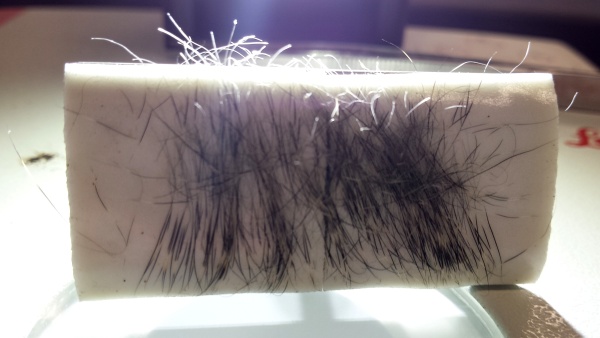
Comparing gray maternal genetic profiles in Griffith Park, DeMarco is discovering disturbing trends – basically, gray squirrels’ genetic makeup is similar because they are inbreeding. Even though squirrels are known for their acrobatics and wire walking abilities, the grays find it difficult to branch out beyond their original homes. Traffic and human development keep them stuck. Besides isolation, grays are up against other factors: poisons, roadkill, destructive fires and competition with the Easties.
“Studies have shown it’s possible for grays and Eastern fox squirrels to coexist,” says DeMarco explaining that in areas with a wide diversity of tree species – like Ferndell – there is a higher proportion of Western grays. “There could be a way to sustain these two species if there were more pine, walnuts and sycamore trees in the area, trees the grays like. Here in Ferndell, grays and Eastern fox squirrels seem to coexist for the most part.”
But the question is for how long? Muchlinski isn’t sure, but he does know that if the Easties move into SoCal’s forested areas – Big Bear, Mt. Wilson – that could be catastrophic for SoCal grays. “It helps if people understand that it’s not good to move non-native animals around,” he says.
All in all, Griffith Park is snapshot of SoCal squirrel-ness. “By seeing what is happening here, we can start to target and suggest ways to circumvent any potential extinctions of one of the sub populations,” says DeMarco. “If populations become so isolated and are in a dire downward spiral, it may mean special action.” Conservation possibilities: adding more gray-friendly trees, introducing grays from other areas into that population to beef up the gene pool, and create corridors for squirrels to scamper in and out of isolated habitats.
When his research wraps up next year, DeMarco will share it with local agencies like LA Park and Rec, National Park Service, etc. “Genetic studies have been done on the gray squirrel in Washington and Oregon but not here,” he says. “We, California, need to catch up.”
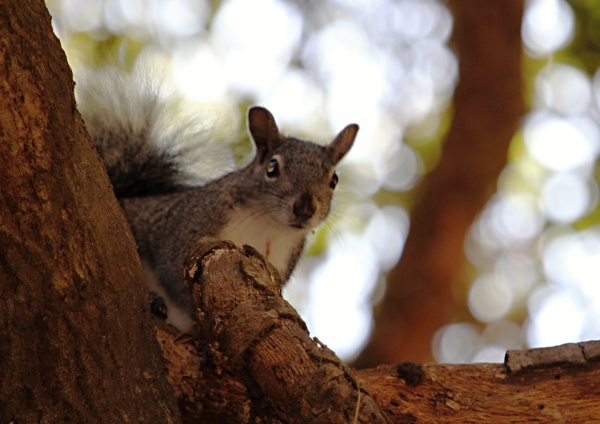
Greening the Ocean With Abalone
It’s a good thing that green abalone aren’t prone to sudden jerky movements – especially when you are trying to delicately affix a millimeter-size color coded circle on them using a tiny squirt of super glue. The intensity level rises when the goal is to tag 1,000 sea snail subjects in one day.
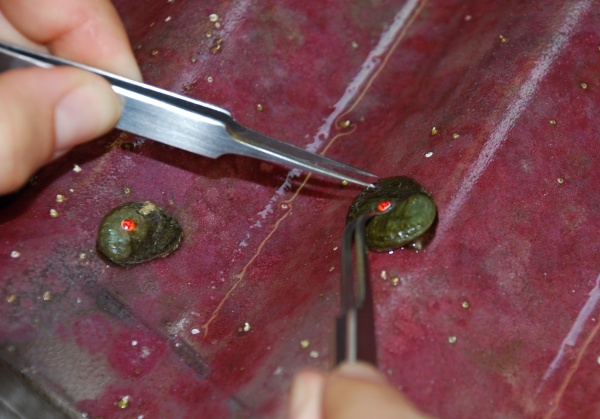
Many hands were doing that recently: working feverishly in a small shed at Redondo Beach’s SEA Lab facilities for this inaugural task; the project will attempt, for the first time, to outplant green abalone raised in captivity into the Southern California marine ecosystem.
Among the casual banter and the steady sound of filtered water running, folks were measuring and recording tagged abalone, organizing completed batches and retrieving new ones.
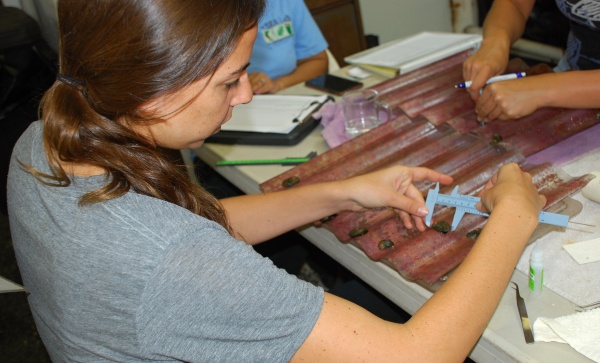
David Witting, a NOAA Restoration Center fish biologist, walked over to holding tanks and pulled out a wavy piece of plastic substrate where 3 and 4-year-old abalone were feasting on red algae, their preferred diet at this age. These youngsters – and hundreds of relatives – were raised at the SEA Lab specifically for this purpose.
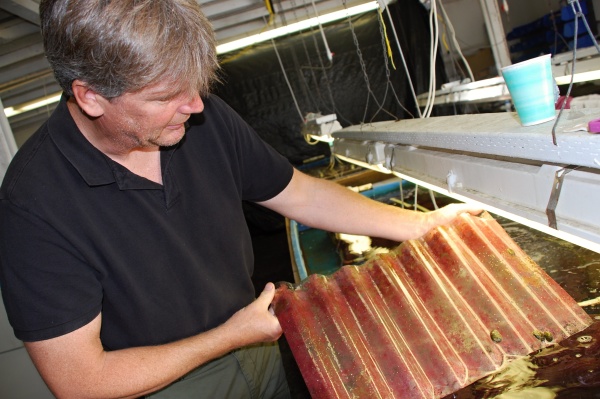
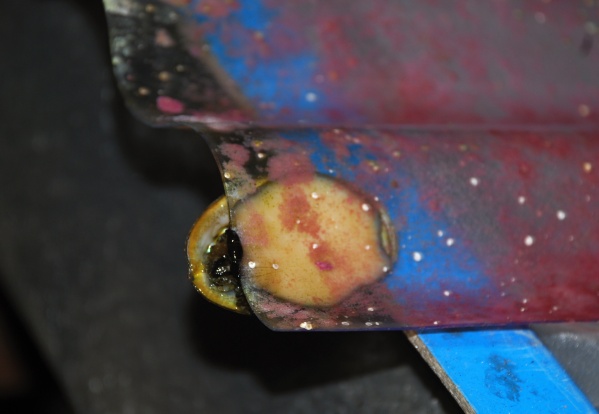
“If the weather cooperates, we are hoping to outplant all these abalone the last week of May,” he says eyeing the inches-long snails. “We’ve been working toward this particular day for some time now. It’s very exciting. There has been a lot of behind the scenes permitting, scheduling all manner of things that leads up to this day.”
It took a consortium of effort to ready these older juveniles for their new homes; the new residents will be placed in newly restored kelp forests off the Palos Verdes coast.
Joining Witting at the tagging table are representatives from the Montrose Settlement Restoration Program, The Bay Foundation and the L.A. Conservation Corps’ SEA Lab; the overall green abalone program partnership also involves the National Oceanic & Atmospheric Administration, the California Department of Fish and Wildlife, the Nature Conservancy, Vantuna Research Group, California Science Center, and Cabrillo Marine Aquarium.
Why all the attention on one kind of mollusk? It’s all about ecology, environment and economics.
For thousands of years, abalone flourished off SoCal coastlines; archeologists have discovered 12,000-year-old red abalone shells in the Channel Islands. The Chumash and other indigenous people used red abalone shells to make hunting tools, ornaments and other artifacts.
Abalone was also very tasty for European settlers and would become the source of a huge commercial fishery industry in Southern California for decades. It was also a darling of recreational collecting by divers. But over-harvesting in the 1970s, habitat loss and the debilitating Withering Syndrome disease decimated the general abalone population to today’s small communities of certain species.
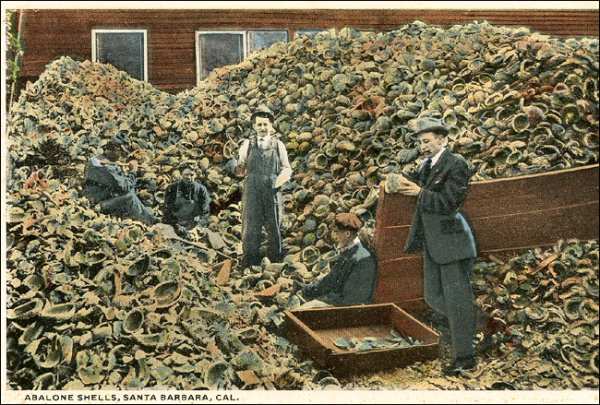
Currently black and white abalone are in danger of extinction while green abalone are listed as only critical. (Why all the color names? Just a species designation – for all its multi-colored iridescent qualities, abalone shells do have certain hues.)
Witting explains that methods done today to prop up the population of the green abalone could be the future template for restoring white and black species back into the wild. Sea snails that thrive in kelp-laden waters have a dual goal for both nature and man.
“Our hope is not only to restore these animals because they are an important part of the ecological community but they are also part of our socio-economical community as well,” explains Witting adding that “lots have been learned over the last 20 years on how to manage abalone fisheries and recreational take in a sustainable way.”
The tags on the outplanted abalone will allow biologists to identify and track their growth and survival rates. If all goes well, these critters will live 20 to 30 years, spawn numerous times, and repopulate their communities.
“Abalone need neighbors in order for their populations to survive and to successfully reproduce,” explains Witting. “They are broadcast spawners; both males and females shoot their gametes into the waters and they meet together in the water column. External fertilization.”
(In addition to captive spawning at the Sea LAB, biologists are doing wild spawning. Divers find wild abalone and bring them on the boat deck where they induce spawning and then return them to the wild. This method isn’t as taxing as the time-consuming and costly task of raising captive abalone.)
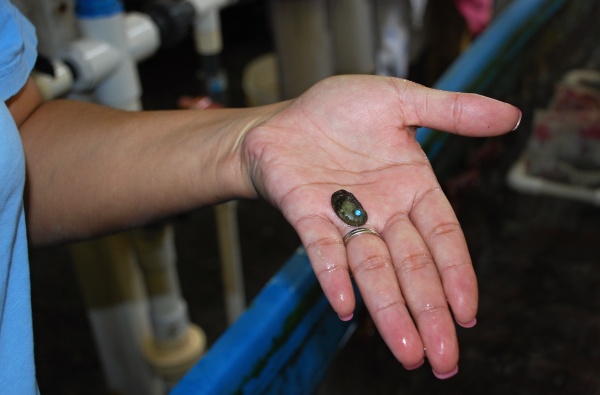
As they continued their delicate tasks, taggers discussed the next steps for these youngsters. They will be transferred into PVC houses where they will be acclimated; soon after, these temporary shelters will be put in the ocean waters. “We have to give them a couple of days to get used to the new environments that we are presenting to them,” says Witting.
“Each step could be a little traumatic. We don’t want to stress them. We want to make sure they are ready for this big move. There’s a lot riding on them making it through these first few steps.”
Or in the case of the sea snail called abalone, these first few gliding crawls…
Someday is Now, The Art of Corita Kent, The Tidings
Walking into the expansive space at the current exhibition, “Someday is Now: The Art of Corita Kent” at the Pasadena Museum of California Art feels as if you are entering a fresh new world of a present-day artist whose powerful images speak of big issues and spiritual intimacies.
How times have — and have not — changed.
The exhibition — on display until Nov. 1 — is the first full-scale retrospective that spans 30 years of work from Kent, an Immaculate Heart of Mary sister and artist/instructor at the Immaculate Heart of Mary College in Los Angeles from 1947-1968; she eventually left the religious order and kept practicing art until her death in 1986.
After showing in five other cities — including at the Andy Warhol Museum in Pittsburg — the traveling exhibition comes back to Los Angeles and features hundreds of images culled from the Corita Art Archives at the IMH campus as well as pieces from private individuals and museum collections. The exhibition also includes rarely shown photographs Kent used for teaching and documentary purposes.
In the past, some of Kent’s iconic prints and groundbreaking designs have been included in other larger art exhibitions, but this show is a walk through the artist’s life via her artwork. It’s all Corita Kent.
In the gallery, Kent’s early religious images, like those of the Madonna and Child, give way to bold brilliant colors with imagery and lettering fonts taken from advertising, newspapers and other formats which eventually yield to reflective watercolors of simple, quiet beauty.
Kent is probably best-known as a pop artist (such as her “Love” stamp design for the U.S. Postal Service) and/or a social activist in the 60s (which got her on the cover of Newsweek as “The Modern Nun,” much to her disdain), but her overall work reveals an intricate weaving of personal thoughts and musings on the nature of spirituality, faith and humanity.
“She reflects on what is going on around her in the world — like war, hunger, conflicts, civil rights — and other times, she’s reflecting on her own journey or those close to her, such as her students, family and friends,” says Ian Berry, exhibit co-curator and Dayton Director of the Frances Young Tang Teaching Museum and Art Gallery at Skidmore College in New York.
Berry is proud the exhibit features two of Kent’s full alphabets, the Circus Alphabet and Signal Code Alphabet, large-scaled multiple art pieces that explode with color and font, imagery and ideas. “Some letters are funny, some are serious,” he says. “These are really some of her master work.”
Indeed, Kent’s layered work invites viewers for a closer look. “You see the piece at a distance, big and bold, but then as you get close you discover more,” says co-curator Michael Duncan of the handwritten citations with quotes, passages and personal thoughts that are a hallmark of her work. “This is not two-second art, she engages viewers into her world.”
Duncan describes Kent’s love of the written word and how she drew from a wide variety of literature and poetry, inspired by creatives who, like her, saw the wonders, struggles and spirituality of life. One didn’t have to be Catholic or even Christian to appreciate her sensitivity and expressions of faith.
“Using the medium of printmaking was also revolutionary for the times,” points out Duncan; prints were usually considered second-class art, but in Kent’s hands, they became dignified and noteworthy. In addition, printmaking also appealed to Kent’s democratic sense that art is for the masses and images were meant to be spread around.
During the course of putting the exhibition together and following its travels, Duncan and Berry have met former students who have great memories of being under Kent’s tutelage, despite her grueling assignments.
Her “impossible assignment” required students to reproduce a simple object or create a collage 100-plus times. “She was trying to get the students to break down their pre-conceived notions of what that object meant and would tell them by the 65th try, they were just starting to see the thing,” says Duncan. “Corita wanted to take them to the next level of seeing.”
The overriding goal of this exhibition, explained Duncan and Berry, was to secure a spot in art history for Kent and to introduce her art to new generations.
Indeed, the world may be ready for more Kent. After the conclusion of this exhibition, Harvard Art Museum, in partnership with the Barbara Lee Family Foundation, will be staging “Corita Kent and the Language of Pop” in September 2015; that show will also be on display next year in Berkeley and San Antonio.
“So often, art critics dismiss art that is openly spiritual as well as works that infuse humor and a sense of playfulness,” says Duncan. Far from being a pop Pollyanna, Kent had a deep sense of wonder and joy for the world, even when her work reflected troubling and tragic aspects of humanity. “She embraced it all.”
A variety of educational programs are slated at the Pasadena Museum of California Art for “Someday is Now: The Art of Corita Kent” including a play reading about her life “Little Heart” at All Saints Church in Pasadena (July 18), curator’s walkthrough (July 19), children’s bookmaking workshop (July 25), family day art projects (Aug. 1) and more. Check the PMCA website for details.
Occidental College Laboratory is for the Birds – all 65,000 of Them, The Eastsider LA, April, 2015
EAGLE ROCK — Why would anyone want to spend Saturday (May 2) – the first-ever Bird LA Day – inside an Occidental College laboratory looking through cabinets containing 65,000 dead birds? Answer: Because it’s science and because it’s awesome.
The Moore Laboratory of Zoology at Occidental College is participating in the birding festivities on Bird LA Day with public tours of its massive collection of avian specimens that run the gamut from the Cuban bee hummingbird (the smallest bird in the world) to the impressively large golden eagle.
“What we do benefits conservation of these species because basically you can’t protect something [if] you don’t know if it exists,” said director and curator John McCormack.
The lab, with the largest single collection of Mexican birds in the world, attracts researchers from all over the globe. Biology and grad students use the cotton-stuffed birds to study genetic traits, biology, etc.; art students also use specimens as models for sketching and inspiration.
“One of the things about natural history collections is that they are used in ways that the original collector never could have anticipated,” McCormack said. “This bird,” he said referring to a toucan, “was collected in 1929 – several decades before DNA was even discovered – and now we are able to sequence this bird’s entire genome if we wanted to.”
The specimens are stored in wooden trays packed into 111 large gray cabinets that have been around since the 1950s. From one of those gray cabinets, McCormack pulls out a wooden tray to reveal a sparkling rainbow of hummingbird specimens. Here’s a sword-billed hummingbird, a giant hummingbird and, upon closer examination, a toothed hummingbird. “If you look under the microscope, it’s terrifying,” he says of the species that boasts a little hook and teeth.

The specimens, some of which are more than a century old, are all simply preserved with cotton inside, which makes the birds easier to handle and measure. “If you keep them temperate controlled, you can keep them this way for 100 year or more,” he says.
The Moore Lab specimens were originally acquired and donated to the college in 1950 by Robert T. Moore, Pasadena businessman, adventurer, poet and ornithologist who was fascinated by new bird species and subspecies.
Saturday’s Bird LA Day might be the last opportunity for the public to tour the lab and see the specimens in the vintage, wooden trays as the facility prepares for a renovation that could begin later this year
What draws visitors to snoop into the lives of a research biologist?
“First off, it’s the beauty of birds,” says McCormack. “But we try to teach them about the role of a natural history collection and the research we do here and why we have so many specimens and numbers of birds.”


Dead Sea Scrolls, The Tidings, March 2015
Overwhelming. Fascinating. Thrilling. The newly opened Dead Sea Scrolls exhibition conjures up many superlative adjectives — none of which can completely describe the historical, religious and spiritual importance you encounter when you step into the exhibit, now at the California Science Center in Downtown Los Angeles.
Mounted in cooperation with the Israel Antiquities Authority, the exhibition presents the largest Dead Sea Scrolls collection ever assembled outside of Israel; these are pieces from the actual scrolls and manuscripts written and hidden in caves 2,000 years ago and first discovered in 1947 by local goat herders.
On display are sections from 10 scrolls which shed light on the formative years of Judaism, Christianity and Islam. More than 600 ancient artifacts are also part of the exhibition that runs until Labor Day.
Letting such treasures out to the public from their safekeeping vault in Israel was no small feat, explains David Siegel, the Consul General of Israel. Choosing the right venue for the exhibition was critical.
“We had to make sure we have the right climate control, security and lighting,” he says, adding that the scrolls and pieces currently on display will rotate out after three months to ensure their integrity. “People who come today will have the chance to see a new display three months down the line.”
The journey to the scrolls for visitors begins with a short film and multimedia presentation that sets the historical stage. Once the lights come up and doors are opened, the feeling of stepping into the past is overpowering.
“Here we walk back in time,” concurs David Bibas, the Science Center’s curator of technology programs. He points to dates which have been illuminated on the floor and corresponds to the artifacts on display, such as coins, jewelry, pottery shards bearing royal seals and ancient sling-stones and arrowheads, some dating back 3,000 years.
A display of a typical four-room home in the Holy Land features the types of tools people used daily.
Elsewhere, other artifacts help illuminate the ancient culture: four-legged altars and small deity figurines represent a time when multiple gods were worshipped; ossuaries (burial bone boxes); and numerous jugs, some “mass produced” for royals or the wealthy, as well as others created for commoners that would hold grains, water and other foodstuffs.
“Look here,” says Bibas as he moves to a terracotta bath tub complete with a hued seat. “It’s a 3,000-year-old Jacuzzi.”
Visitors enter the darkened inner room with a hushed reverence. Surrounding the scrolls are wall display cases which contain even more artifacts: a peek of a Greek-influenced mosaic tile, a glimpse of a Holy Land kitchen and a close-up view of ancient miniature leather phylacteries or tefillin (cases which contain biblical passages and are bound to the head and arm during Jewish morning prayers).
There is also extensive information about the significance of Knirbet Qumran, a community on the northern shores of the Dead Sea where the scrolls were uncovered.
Presented in a circular arrangement, the scrolls are the exhibit’s centerpiece.
Pieces and fragments are gently illuminated and visitors often get extremely close to the texts, their noses nearly touching the protective glass.
In addition to parts of the Old Testament, this exhibit features non-biblical books (like the Book of Giants), liturgical texts and other manuscripts, including a ketubah, a Jewish marriage contract.
Bibas points out the selections from Psalms; that book made up the greatest number of scrolls found in the Dead Sea Scroll caves. This case holds perhaps the oldest of all Psalm scrolls discovered and one with as many as nine different psalms preserved.
Here visitors can see Psalm 71:1-11, which begins: “In you, Lord, I have taken refuge; let me never be put to shame. In your righteousness, rescue me and deliver me; turn your ear to me and save me.”
The lettering appears fresh and strong; anyone who reads Hebrew can make out words and phrases, says Siegel. “It’s the same characters we know today.”
The reverential spirit continues when visitors encounter the three-ton stone from Jerusalem’s Wailing Wall. Paper is available nearby and visitors of all ages write, fold and place prayers into crevices near the stone in quiet contemplation.
Written prayers will be gathered and sent to Israel to be buried with the others rountinely collected at the Wailing Wall in Jerusalem. Nearby, a television monitor presents a live feed from the wall, furthering the connection to the Holy Land.
“Overall, this is an emotionally moving exhibition,” says Siegel, who adds that he hopes Christian, Jewish and Muslim religious leaders encourage their congregations to visit.
“The Holy Land is beloved by three major religions that share much of the same Holy Scripture that is on display here. This exhibition has the power for uniting us, reminding us of what we have in common.”
Vessels and Channels, The Tidings, January 2015
“A sacrifice for the good of humanity is a story that happens in every culture,” explains Toparovsky, whose artwork celebrates the breadth of the human condition — the difficult, the painful, the sublime and the wondrous.
After he was satisfied with the rock pile configuration, Toparovsky exited the exhibition space and pointed out that his Prometheus has the legs of a raptor. “Think about it,” he challenged. “If you are having your liver eaten out every day, you would need to embrace your enemy in order to survive.”
That spiritual imagery and more fuels the current exhibition of complex mixed-media, sculpture, photography and digital imaging that spans three unique-shaped spaces in the cathedral. The theme draws upon ancient stories, mythology, historical references and contemporary narratives to convey the depths of the human experience and its transcendent connections.
Toparovsky, an internationally acclaimed artist, is no stranger to the cathedral — he designed and created the life-size bronze crucifix that adorns the altar, a beloved image for visitors and parishioners.
At first blush, it may seem ironic that Toparovsky, who considers himself an observant, if non-practicing Jew, was selected to design the crucifix (his first liturgical commission). But his artistic recognition and sensitivity to spiritual aspects made him the perfect artist to create Christ on the cross, an experience that he recalled was “overwhelming, magical, wonderful and exhausting.”
“With that commission, came a great responsibility,” he said. “Once that was installed, it never felt like it belonged to me anymore. I mean, how could it? It’s not the same. It’s invested with the energy of the world. It’s now an icon for so many.”
Indeed, Toparovsky is often approached and thanked for his work when he is at the cathedral. “They will come up and throw their arms around me, wanting pictures and kissing me and looking so delighted,” he said. “But it’s not me, it’s not who I am that they are responding to. I am just a conduit. A conduit for courage and the vulnerable.”
For this current exhibition, Toparovsky created unique spaces for cathedral-goers to meditate on, consider and ponder. In this first chapel (located at the end of the cathedral’s main entrance), you will find a high, hedge-like structure with leaping creatures popping out of it. Peer into a small window and see a garden of bronze plant life, a shimmering light and … a mysterious elevator door.
A secret garden? A metaphor for life’s barriers? The journey between earth and heaven? All of the above and more, said Toparovsky.
Turn the corner and discover the second art room that Toparovsky refers to as a lararium, the ancient Roman custom of creating a sacred place near the front door where offerings and prayers could be made. Here works of art on paper and sculpture fill up a vibrant blue lacy wall with other artwork — evoking modern and ancient sensibilities — positioned throughout for spiritual speculation.
The bronze torso may seem familiar — it’s St. Sebastian, an early church martyr who is often depicted leaning against a tree, dying from multiple arrows shot into his body. In this instance, St. Sebastian’s body is also melding into the tree to signify his connection to Christ on the cross.
“I wanted to portray him with as much beauty and dignity I could imagine,” says Toparvosky about the saint who did not die from the arrows, but who was ultimately beaten to death.
“I wanted this exhibition to celebrate the breadth of the human condition,” sums up Toparovsky. “To be able to accept that things in life are hard and still carry on. That there are sacrifices to make in order to get that the place where things are wonderful — and to have that personal connection to the sublime.”
Best Whale Watching Season Ever?, SoCalWild, December 2014
It’s being heralded as the “Best Whale Watching Season Ever” in Southern California, but what exactly does that mean? Abundant whales? Different species of whales swimming about? Whales coming into closer contact with human observers? Baleen and toothed whales performing their own version of West Side Story?
There are many ways to consider what makes a season spectacular.
“For me it’s all about the diversity of whales that we can find at any given moment in the waters off of Los Angeles,” says Kera Mathes, marine biologist for the Long Beach Aquarium of the Pacificwho was accompanying a recent whale watching excursion out of Long Beach.
“We’ve had lot of gray whales, fin whale sightings, numerous orcas, the latest being Dec. 26. There was a pod of five fin whales observed a few days ago. We’ve even seen humpback whales and there even was word of a pilot whale in San Diego recently,” she says. “You never know what you are going to see in the waters this time of year.”
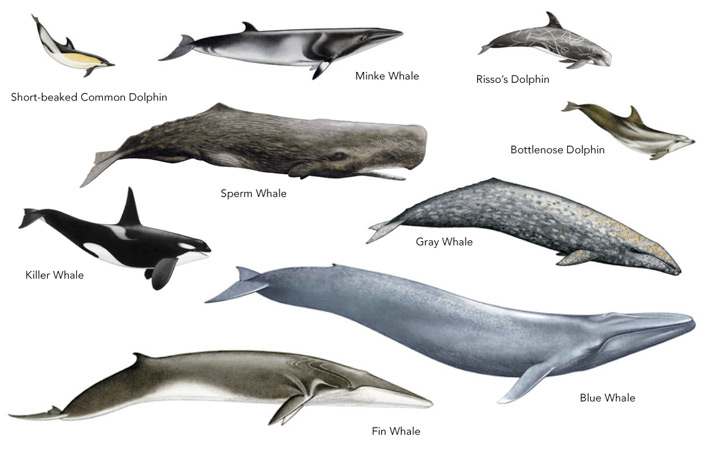
Indeed, rare whale sightings are becoming, well, not quite so rare these days. Over the past few months, folks have also seen sperm whales and even false killer whales. “There is a lot of food here that may be bringing those rare species into our waters,” says Mathes about the bounty of krill, sardines and anchovies not to mention sea lions which orcas enjoy.
Mathes contends that researchers, however, may also label a season remarkable by the sheer number of whales they are studying. Case in point: the gray whales.
Alisa Schulman-Janiger who coordinates that annual Gray Whales Census/Behavior Project for the American Cetacean Society, Los Angeles, has been regularly posting the phenomenal numbers of gray whales spotted at Pt. Vicente Interpretive Center by trained on-shore volunteers. To date, 385 grays – that includes moms and babies – have been counted going southbound to Baja in the month of December. That number has broken all records since the census began in 1984.
** Gray Whale Update: As of Jan, 3, 2014 the count is 432 southbound (including 9 calves), and 1 northbound, still ahead of last season’s count of 407 southbound (including 3 calves) and 4 northbound. **
On this particular whale excursion, two individual grays were spotted. One whale had a craggy notch near her fluke indicating she was a victim/survivor of an entanglement which carved out a deep chunk of her flesh. Photos taken from the whale watching boat were sent to researchers – including Schulman-Janiger who later identified the whale as the same one she photographed in 2009. Those current photos will be sent to watchers in Baja Mexico in order to track that whale’s path and behavior.
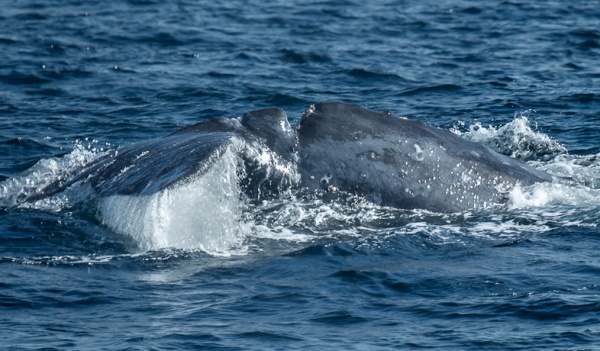
Mathes says the aquarium partners with various researchers, supplying them with “opportunistic data” about specific whale species. Photos are vital components – researchers match flukes (as individual to whales as thumbprints to humans) to follow a specific whale, like this wounded one.
The craggy notch wound, however, didn’t seem to stop this particular whale; she was swimming at a good pace, blowing, diving and deep diving for krill and other goodies from the SoCal buffet line.
While Schulman-Janiger is keen on seeing huge numbers of gray whales, she also shares Mathes delight in witnessing the diversity of marine mammals in the area. In fact, her gray whale census volunteers routinely records marine mammals they observe and has counted more than 20 species of marine mammals in their census along with the migrating cetaceans. “This is the most amazing season due to both the sheer diversity of rare species encounter AND the current record high gray whale counts,” she sums up. “An outstanding whale watching season is not just the occasional rarely sighted species, but being able to see a good number of whales and a variety of species and behaviors on a regular basis.”
Booming numbers of whales, species none withstanding, means a happy public and business, says Captain Dan Salas of Harbor Breeze Cruises who has been bringing folks out to the waters since the 1990s. “Having good whale numbers means you have a good chance of seeing something to make that trip worth your while,” he says. “So far, it’s been a fantastic season.”
Record whale numbers of any kind (“this year we have seen more humpbacks than we have ever seen in our 15 years of whale watching boats”) means an exciting experience for Salas’ guests, many who maybe making the trek for the first time.
Salas credits fishing and shipping regulations as making SoCal coastlines more inviting for fish and marine mammals. “I started out 30 years as fisherman and I’ve never seen this kind of life here back then,” he says. When shipping lanes were moved a year and a half ago to accommodate the whales’ migratory paths, “our whale watching numbers went through the roof.”
While newbie whale watchers should experience some kind of cetacean action this winter season, it’s best to keep expectations appropriate. You may think you will see numerous sights like this:
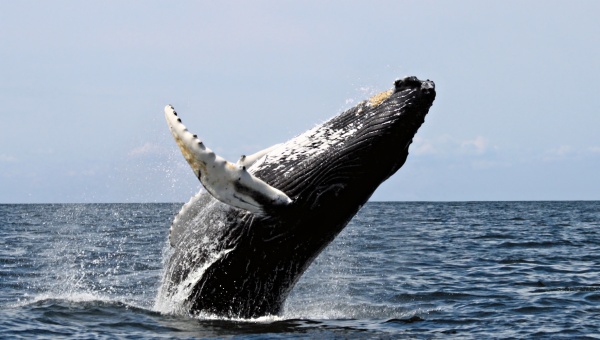
But you actually may see this (which is still cool, but not as dramatic).
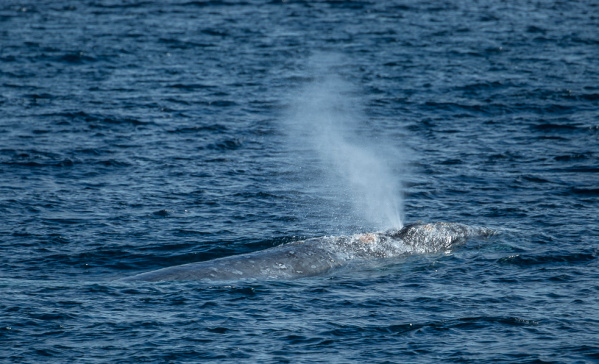
Be advised, too that whale watching is often more whale WAITING. When the captain hollers “Thar she blows,” be prepared for the paparazzi of camera clicks as the whale briefly slides up and out of the water.
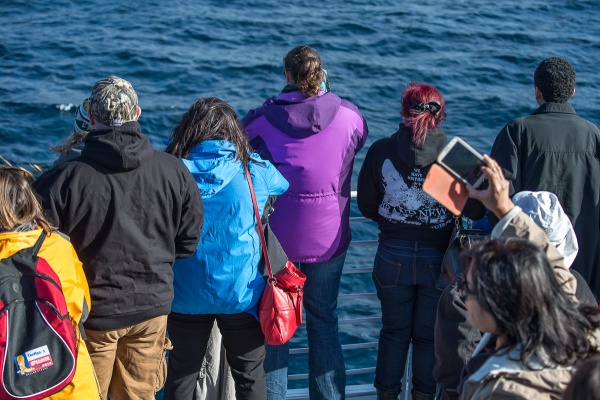
Thank goodness for dolphins (which are small whales) that can be counted on for stealing the show on any whale watching excursion. Bounding up and out of the water with spectacular spiraling leaps and spins, these marine mammals certainly embody the joy and freedom of the ocean.
On the flip side, many whale watch trips include the traditional drive-by the buoy covered with snoozing sea lions. While dolphins show off their acrobatic side, the sea lions (equally energetic in the water) are content to display their relaxed, groovy and mellow personalities, giving humans a small taste of multifaceted life in the wild Pacific Ocean.
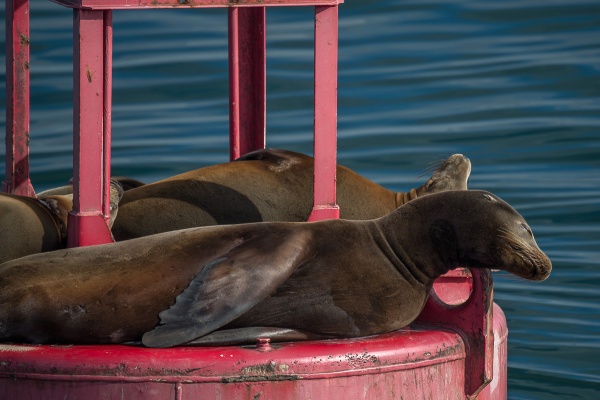
Critter Corridors in the Classroom, SoCalWild, December 2014
RARING TO GO — Students try to contain their enthusiasm.
Wiggling, fidgeting and anxious. The sixth grade class at Sun Valley Magnet Middle School were painfully waiting their turn to step to the front of the class. They tried to contain their nervous energy and nearly lost the battle. Busting at the seams? An understatement.
One by one, groups of three and four came forward in front of fellow classmates and students from neighboring classes. The Science Dudes, The Animal Finders, the Bobcats and more. Each group had a presentation that, while similar in topic, reflected different facts, personal narratives, and elaborate Powerpoint flourishes.
“Urban sprawl affects our indigenous animals,” presented one student while an image of a bobcat on a tree flashed on the board.
Later, another group came up, and showed a photo of three young cougars. “Three baby mountain lions were killed on the 126 freeway,” described the student. “The solution is we need to stop the road kill.”
“Wildlife corridors are needed for animals to move from one habitat to another,” declared another student about the proposed passageway over Liberty Canyon on the 101 freeway. “The importance of biodiversity is to keep our ecosystems stable.”
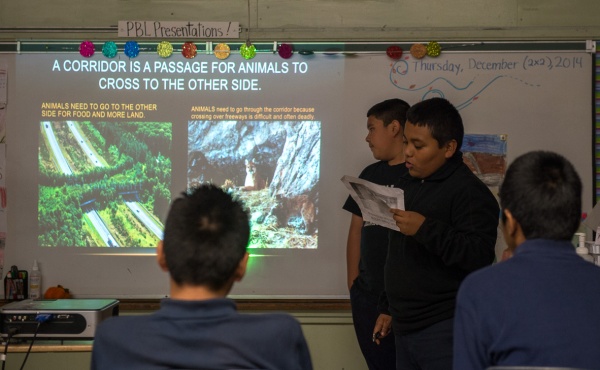
Most presentations were electronic but one group, the Thunder, created a handmade model of what a proposed wildlife corridor would look like. Plenty of cardboard, construction paper, milk cartons and glue were put into the model that depicted a green bridge spanning a concrete freeway with buildings off to the side.
“Animals need to move around to expand their territory and find a mate,” stated one Thunder member. “These bridges need to look natural and blend into their surroundings so animals will use them. They need California native plants like coyote bush and California lilac.”
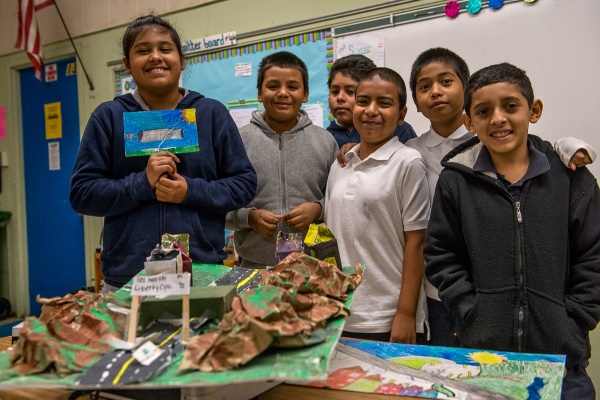
Using a real-world example of the current wildlife corridor fits in well with the Project Based Learning (PBL) that’s the norm at this Environmental Studies Through Arts Academy magnet school.
The Wildlife Corridor lesson was more than two months in the making and involved vocabulary words, research on the internet, interviews, a trip to the Natural History Museum and, perhaps the most inspiring aspect, a tour of Liberty Canyon with Anne Dittmer, CSUN professor who is intensely interested in the proposed corridor.
Students learned first-hand about the problem and solutions, said teacher Joceyln Medina who first heard about the plight of habitat-boxed mountain lions and bobcats two years ago when Professor Dittmer was her instructor. “The issue was just perfect for the type of learning we advocate here in the classroom,” she said. “Active, real world and participatory.”
“We actually walked the same route that the mountain lions would have to take to get from the north side of the freeway to the south side, and I think that got their attention,” said Dittman. “It was just an ordeal for them to get across without getting squished. Cars, and noise, and all suddenly got more real. I had hoped that the walk would impart just how scary the whole experience could be for larger predators…and how much we needed a real corridor in the area.”
In addition to touring Liberty Canyon, Professor Dittmer brought the youngsters to explore nearby Malibu Creek to understand the landscape – which is home to many critters that could potentially use the corridor.
After the presentations, students – now a bit more relaxed – were eager to share their knowledge and discuss their experiences related to the project. Many still had the image of Liberty Canyon in their heads. “There were just mountains there.” “How long will it take to build the corridor?” “I wish they could just dig a hole for the animals to move around.” “I saw lots of little holes in the ground. I think it was the under-squirrels.” “What does the P stand for in P-22?”

Students knew the sad story of seeing dead animals on the street – raccoons, squirrels, even birds. Many advocated in their presentations that adults (including parents) should drive cautiously when they know that wildlife is around. Still, even with careful human eyes, that doesn’t mean a critter won’t take a chance at crossing.
The students were shocked to learn that often young mountain lion cubs in the Santa Monica Mountains have been killed by their father in the juggle for territorial dominance. “That’s just wrong.” “Why?” “Sick.”
Yes, the ways of nature can be hard to grasp, but this fact sealed for the student’s the pressing need to establish the corridor.
“We just need to share what we have with the animals,” said one very wise sixth grader. “We should just do it. Now.”
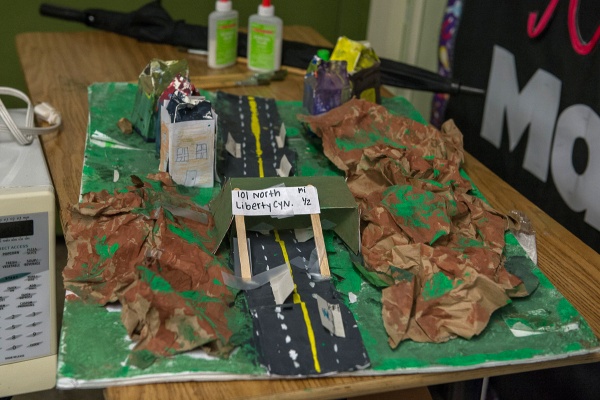
— Story by Brenda Rees, photos by Martha Benedict
A Forest of Possibilities, SoCalWild, November 2014
Finally. A SoCal forest that’s been lying in ruins since the 1950s is getting proper attention and love.
Not a trees-on-land forest; this SoCal oceanic giant kelp forest off the Palos Verdes Peninsula coastline represents seaweed at its finest and is a testament to the power of nature to rebound after devastating decimation.
It’s estimated that this PV Peninsula forest has declined 75 percent in the past 100 years — but things are about to change thanks to a five year program headed up by The Bay Foundation (TBF).
Thanks to a hodgepodge partnership of trained volunteers, nonprofit organizations and fishermen associations along with federal and state agencies, the Palos Verdes kelp forest is once again thriving and beckoning local wildlife. At last count, more than 700 wildlife species including fish, crabs, sea birds, arthropods, sea lions and more, depend on the flowing undulating fronds of this ocean plant – and divers are now seeing many of these critters (such as the kelp bass, garibaldi, California sheephead, California spiny lobster and the two-spot octopus) returning.

“Rich, fat and happy,” is how Tom Ford, Executive Director of TBF describes the giant kelp plants that have taken root and sprung upward 30 feet to the surface. Ford explains that because the kelp has grown so quickly (the plant can grow about 2 feet a day), much of the new kelp has spread across the top of the water thick and strong enough to support hungry egrets walking searching for a slippery snack.

And guess what? It’s only been less than a year that this remarkable transformation has taken place, proving that nature doesn’t need complicated programs or intricate procedures to replenish what was lost. Often, the right jump start gives nature all it needs.
At one time, kelp so thick and tall was the norm in Southern California and provided many a marine critter home, food and more, but the post WWII building boom brought pollution, urban and storm water runoff, non-conservationist construction practices and sediment unceremoniously dumped into the ocean.
The kelp choked and wildlife left, except for scrappy sea urchins. With no kelp, the urchin’s natural predators – spiny lobsters, California sheephead and sea otters – disappeared leaving the urchins to multiply like crazy creating barrens which crowded out most other sea life.
Launched in July 2013, the restoration project brought 35 scientifically-trained SCUBA divers to cull down the urchins to a manageable number. Nearly 2 million purple sea urchins were removed from two coves: Underwater Arch and Honeymoon Cove. All in all, this 12 of acres have seen a dramatic kelp explosion with hundreds of plants stretching 25 feet or more. Urchin barrens, no more! This is pretty dramatic footage:
The resilience of the kelp helped the divers who didn’t need that extra step of planting plugs and starting the kelp from scratch. The kelp was just waiting for room which allowed it to spring up.
Project partners include: California Sea Urchin Harvesters, Vantuna Research Group, National Oceanic and Atmospheric Administration (NOAA), Department of Fish and Wildlife (DFW), Southern California Marine Institute, Los Angeles Waterkeeper, California Science Center, and TBF.
This is only the beginning. Only 12 of the 150 acres were part of this initial project and work will continue for the next four years to complete the transformation. Along the way, scientists and researchers will monitor the kelp growth and the return of wildlife.
Ford says that the Santa Barbara and Anacapa Islands are next in line for local kelp restoration but that researchers in British Columbia, Japan, Iceland and France are keenly watching the SoCal progress and will apply the same methods to their own kelp restoration projects.
“What we do here can affect ecologies around the world,” says Ford. “When you change a foot at a time on the ocean floor, you can recreate what was lost. And we are seeing that here in a wonderfully dramatic way.”
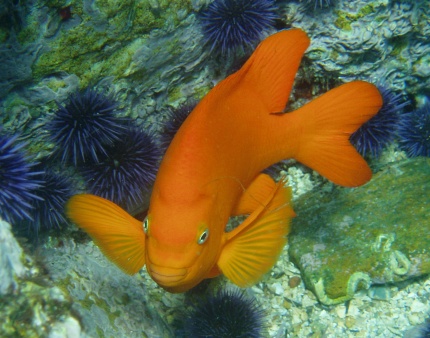
Less Poison in the Parks; More Owls in the Sky?, SoCalWild, October 2014
The recent news that one type of dangerous poison has been discontinued in Los Angeles parks and open spaces was welcomed by Alison Simard of Citizens For Los Angeles Wildlife (CLAW), an environmental group that would like to see all toxic rodenticides (aka rat poison) eliminated completely from city boundaries.
But, she conceded, this news is a great first step in obtaining that dream.
“Wildlife is the barometer of the health of our environment,” said Simard after the recent special Arts, Parks, Health, Aging and Recreation (APHAR) committee meeting called by the Los Angeles City Council in response to increasing evidence that Los Angeles wildlife have been regularly poisoned from anti-coagulant (blood thinning) rodenticides.
The catalyst for the motion came earlier this year when beloved Griffith park resident cougar, P-22, was found sick from mange as a direct result of eating prey that had ingested anticoagulant rodenticide.
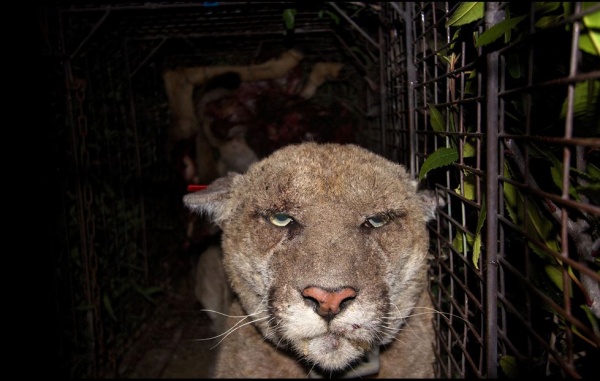
Representatives from the LA Department of Recreation and Park reported to the APHAR committee that they were voluntarily phasing out the use of second generation rodenticides in all 420 parks and wilderness areas in LA – an announcement that brought hushed cheers from Simard and friends.
“We have completely removed second generation rodenticides from all of our facilities as a policy decision in response to the motion brought forth and in review of our integrated pest management program,” said Laura Bauernfeind, Grounds Maintenance Supervisor Director of Facilities.
Bauernfeind explained her department still wants first generation rodenticides in its arsenal against the peskier pests – mainly ground squirrels – that multiply and cause a ruckus in rec centers and may carry infectious diseases like the plague and the hantavirus. It’s for health reasons, she argued.
Bauernfeind continued that her department is considering alternative non-toxic methods to “avoid the use of rodenticides” with rat zapper boxes discussed as a possible method. This ingenious little Box of Death uses high voltage to ‘humanely’ kill pests that enter it. No poison. Quick zap. Limp rat. Easy disposal. Still, her department would have address concerns about killing and removing what is technically a wild animal within city boundaries. More to come on that…

Finally, Baurenfield said first generation poisons are being used in about 15 locations, about 3 percent of the total available park and open land spaces in Los Angeles but didn’t list specifics sites.
(Confused about first and second generation rodenticide? Here’s the nutshell: first generation have chemicals with shorter half-lives and require higher concentrations and critters have to consume them over consecutive days to reach a lethal dose. About a 5 on the Kill Scale. They are less toxic than second generation which are applied in low doses and are deadly after just one ingestion. About a 10 on the Kill Scale.)

Simard said that this small victory for CLAW – her group was the one that originally brought the concern to Councilman Paul Koretz who enthusiastically backed it in the committee along with Councilmen Mitch O’Farrell and Tom LaBonge – will propel her group to now work more to educate citizens about the dangers of using rat poison.
After all, what good does it do if parks and wilderness areas are poison-free but homeowners continue to use rodenticides? First generation rodenticides are still available over the counter. Second gens were banned this year for sale to the public, however, professionals can still use that double deadly poison anywhere if they are paid to do so.
In addition to raising awareness and passing up rodenticides, Simard says her group is going to educate homeowners to consider other natural ways of handling pest by introducing and encouraging owls to take up residence. A single pair of barn owls can consume over 2,000 rodents a year – and they do so without chemicals or traps. Just keep their food clean and, in theory, owls can take care of the problem.
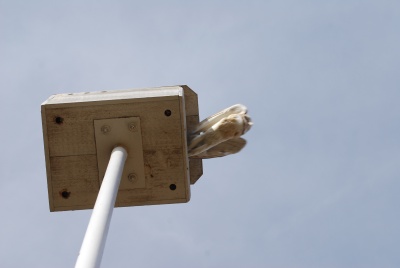
Councilmember Koretz asked Bauernfeind about installing owl boxes in Griffith Park, but she explained it was too problematic given the hillsides and terrain. Here, Simard disagrees and hopes that through grassroots organizing, reaching out to service groups and energizing residents, one day parks and wilderness areas in Los Angeles will boast minimal mice, rats and ground squirrels populations, kept in check by a natural and chemical-free way.
“Barn owl boxes are a positive way to address this problem,” she said adding that the cost is small compared to chemicals and traps. “You’ll be hearing more about this soon.”
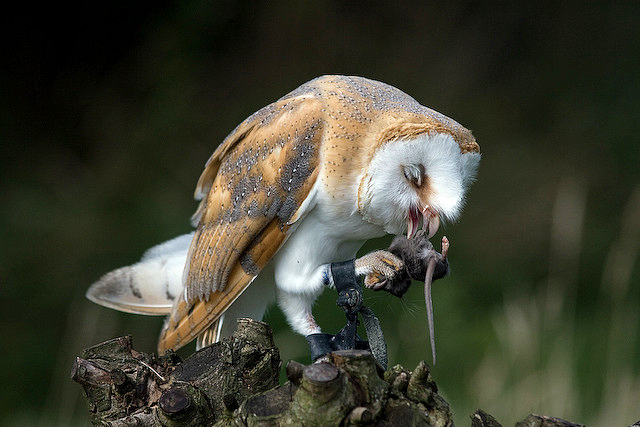
Spectacular Rubens, The Tidings, October 2014
Breathtaking, inspiring and artistically engaging, “Spectacular Rubens: the Triumph of the Eucharist,” a new exhibition at the J. Paul Getty Museum, features the work of master artist Peter Paul Rubens told in both elaborate oil sketches and monumental original tapestries woven in the early 1620s for a Franciscan convent in Spain.
It’s the largest number of works for the Eucharist series assembled in more than half a century and the first time these tapestries have traveled to the United States.
“This is Rubens on a grand scale that we don’t get to see often enough,” said Getty curator Anne Woollett, who worked with the Museo Nacional del Prado, Madrid, Spain, in association with the Museum of Fine Arts, Houston and in collaboration with the Patrimonio Nacional to mount this exhibition. “The complex iconography will grab you by the soul and we hope visitors will revel in the spirituality, joy and exuberance of Ruben’s unbridled creativity.”
Visitors who pass under the large photo realist images of the convent doors to enter the gallery will probably gasp with awe upon seeing the large tapestries, some as big as 16 feet high and 25 feet wide. The scope, content and skilled command of the tapestries harkens to a time when art was intricately linked to royalty and the bold presentation of deep, intimate, spiritual ideas.
This exhibit features four of the 20 tapestries that were originally commissioned to Rubens by the Spanish governor-general of the Netherlands, the Infanta Isabel Clara Eugenia. The interconnected the tapestries were intended to be hung in the Monasterio de las Descalza Reals (Convent of the Barefoot Royals) which was located near the royal palace.
The Infanta had a profound sense of religious obligation, and along with her husband, Cardinal-Archduke Albert of Austria, the two established a solid Catholic state after decades of conflict.
When her husband died, the Infanta exchanged her court dress for a Poor Clare nun’s habit (shown in paintings at the exhibit) but continued to wage military and diplomatic campaigns to secure peace. Rubens was probably called upon to broker behind-the-scenes deals and arrangements because of his ambassadorial nature and status as court painter, explained Woollett. “Patron and painter both shared a passionate and almost militant view of Catholicism.”
The commissioning of these tapestries was viewed as a way to convince the masses of the power of the Catholic Church against the perceived heresies of the day (often depicted as Calvin and Luther).
For more than 400 years, these tapestries (one on top of another) decorated the two-storied convent church on Good Friday and the Octave of Corpus Christi as well as other special circumstances. (Art scholars don’t know the specific designation of where the tapestries were hung.) It’s suggested the tapestries may also have been hung outside of the building for other select occasions.
A Closer Look
Overall, the tapestries are illusions within illusions. Powerful figures and small angels unfurl the tapestries amidst a backdrop of architectural details like stonework and garlanded columns.
Good versus evil is the main subtext for theological virtues told with images from the Old Testament, the life of Jesus and other Christian symbols. “These are bigger than liturgical statements,” said Woollett. “They were meant to celebrate the nature of the love of God.”
The wool and silk tapestries, each weighing about 200 pounds, are displayed alongside six of Ruben’s original oil sketches which weavers used to create the final artwork. These modelli have been recently conserved with a grant from the Getty Foundation through its Panel Paintings Initiative.
The modellis, Wollett pointed out, are “mirror backward images” because weavers needed to work from right to left on their looms as they “read” the sketch design. Even though he knew weavers would have to “recreate” his art in a different media, Rubens “showed no concessions when it came to complex scenes,” said Wollett referring to large expanses of skin, intricate illusions and demanding compositions.
Weavers with specialized talent — faces, architecture, etc. — were called upon to construct specific elements, making the tapestries a many-handed creation. They, along with Rubens, did receive artistic credit for the final product.
Fishing the L.A. River – No Joke, SoCalWild, September 2014
Rosi Dagit was pleased. The environmental scientist was at the banks of the Los Angeles River near North Atwater Park in Atwater Village waiting for anglers to bring over their catches in large orange buckets. “This is the best citizen scientist program,” she said adding that often she’s the one wading in rivers and streams catching critters for surveys and research. “I have it easy today!”
Indeed, Dagit and her cadre were tasked with weighing, measuring and cataloging the fish that were caught as part of the first ever Friends of the Los Angeles River (FoLAR) “Off tha’ Hook” fishing derby.
The catch and release event took place on September 6 which was designated as one of the “free” fishing days (aka no license needed and therefore open to all) from California Fish and Wildlife the entity that governs fishing on the river.
FoLAR organizers say that the derby strengthens the vision that the river is a living, breathing entity worthy of recreation, wildlife viewing and, yes, fishing. Members of the Los Angeles Rod and Reed Club were on hand to show off their fly casting prowess– some actually hiked up the waders and make it an immersive experience.
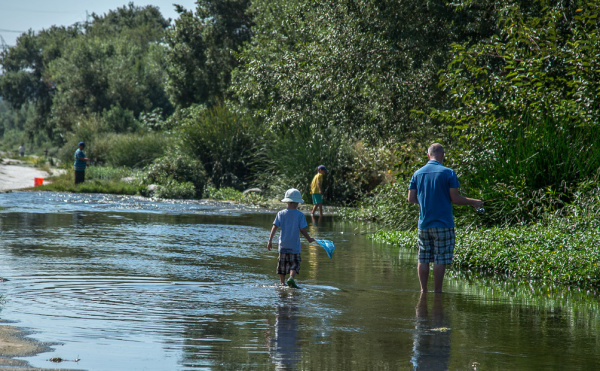
There was an official contest (most fish caught, biggest catch) but that was just an excuse for fishing folk to be out in the picture perfect postcard early morning. Anglers casted off amidst the lush river surroundings with horseback riders on the Griffith Park hills in the background. Birds swooped over the water – Canada geese, mallards, black-necked stilts along with assorted shorebirds and immature egrets.
Deep in the river bank, you could hardly tell you were in one of the world’s largest cities.
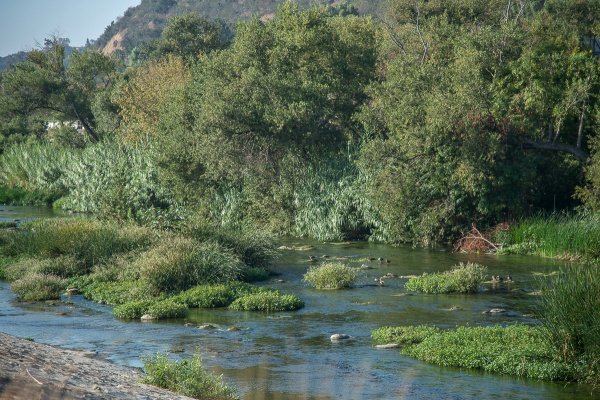
Helping Dagit compiling the data was Sabrina Drill, Natural Resources Advisor for UC Cooperative Extensive who worked on the FoLAR 2008 fish study in the L.A. River. That study was eight days long and involved four locations. The fish most seen from that study? Mosquitofish, tilapia and green sunfish.
“Of course our methods for catching fish were different today,” she says describing how using a drag net yields different fish than using a rod and reel. Its bottom feeders vs fly catchers.
That was evident by the fish caught at this derby – one large carp and the rest were large-mouth bass, albeit on the small size.

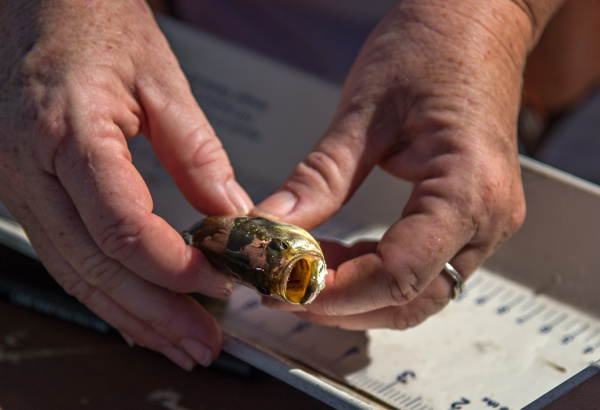
“That was the first data that we have on the fish life in the Los Angeles River,” chimed in Dagit about the 2008 study. “How lame is that? The river is right here. We have to pay attention to what we have in our own backyards.” (Note: another fishing derby is planned for Oct. 4 in the LA River near Long Beach.)
Dagit spends a lot of energy patrolling the coastal streams for the steelhead trout; that fish used to be found in the Los Angeles River along with arroyo chub, stickleback and maybe even speckled dace.

Both Dagit and Drill are enthusiastic but realistic about seeing a bounty of fish return to the L.A. River. Right now, there are too many physical barriers (not to mention dam gates) that would prevent the ocean–swimming trout to make its way up freshwater streams for spawning. Still, that didn’t stop folks from sporting t-shirts that declared, “Fishing for carp, waiting for steelhead” in anticipation of the return of that historic trout.
On that day, one could imagine heading down to a river that could be alive with flapping fins and rainbow scales. Stay tuned. Stranger things have happened.

— By Brenda Rees, photos by Martha Benedict
Filling SoCal Skies, SoCalWild, August 2014
One after another, cars arrive as if on cue. They pull over on the shoulder of this two-lane highway near an endless orange tree grove here in Valle Vista on the outskirts of Hemet in Riverside County.

Old couples, parents of small children and families with grown kids sheepishly exit their cars, wander to the chain-link fence at the Bautista Creek flood control channel (aka Bat Bridge) and eye the soon-to-be setting sun. “Have you been here before?” “Nope, it’s my first time.” “How about you?” “I have always meant to come out here and now I’m finally doing it.”
“I saw it last week when I was crossing another bridge and I didn’t know what it was. It scared me at first,” says one young woman who came with her older parents. “I did a little research and found out about them. That’s how I’m here tonight – to really see them.”
“They” are bats, Mexican free-tailed bats to be exact. Underneath this small bridge probably tens of thousands of the flying mammals are getting ready for their nights’ forage of insects, drawn to the sweet smell of orange.

Home to the largest bat colonies in the area, this nightly bat swarm is one of Southern California’s amazing natural wonders.
Valle Vista’s bats haven’t achieved the notoriety of Austin, Texas’ Congress Avenue Bridge (those too are Mexican free-tailers), and maybe that’s a good thing. The easy good-natured camaraderie of fellow bat watchers (some bring folding chairs and snacks), the unmarked location, the agricultural small-town road – all make sharing anticipation with fellow strangers a goose-pimple experience.

The bats are only in town for the summer which makes their appearance this evening all the more extraordinary. They are migratory critters, arriving in SoCal in late May/June to mate and to raise their offspring. In fact, the bridge is a maternity ward with mothers and pups; females only have one baby per season and those youngsters are ready to fly 4-5 weeks after birth. Males are off in bachelor colonies nearby, and many theorize they hang out in local caves (better known as bat man caves?)
When the fall cold hits (usually late September/October), all bats return to their Mexican caves and dream again of the Californian insects come the following summer.
“They’ve been recorded there since the 1990s,” says Dan Taylor, a bat biologist from Bat Conservation International who adds that it’s not just this bridge, but two others that the free-tailers use for their summer vacation. All in all, it’s estimated that more than 20,000 bats are part of this extraordinary colony.
The Valle Vista location is perfect bat real estate: near a bountiful food source (i.e. insects lured to the orange trees in this almost endless grove) and the underside of the bridge has little crevices which, according to Taylor, “keep them safe from predators. The concrete collects the heat during the day and it expands and warms them. This is one time where we humans have built a good habitat for wildlife, all unintentionally of course.”
Walking over to the bridge before the big show, two things are apparent: a steady din of bats chirping/buzzing to each other (“Wake up!” “Five more minutes!” “No! Now!”), along with the overpowering smell of bat guano on the cement floor below.
“That smell is like fertilizer with a kick of fruit punch!” remarks one bat waiter.
By now, more folks have arrived, many armed with cameras and cell phones. The sun reaches the golden line in the horizon at the far west end of the San Jacinto Valley and the first bat (a scout?) flitters out to test the air.

“Just watch,” says a seasoned bat watcher. “When it starts, it doesn’t stop. They keep coming out for minutes.”
Finally, the flag is dropped and the bat signal is given. Tiny flappers zig and zig out from the bridge into a swirling living cloud high above the orchard. They can fly 20-30 miles per hour and reach heights of up to 10,000 feet. “These guys are the jet fighters of the bat world,” sums up Taylor.
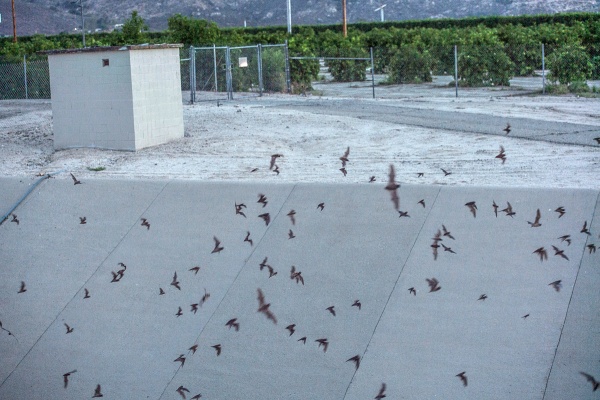
A low cheer comes up from the watchers who “ooh” and “ahh” the spectacle like a fireworks show. Kids jockey for position at the chain link fence and wish that “one would come closer and slow down. Oh, I think they are cute.” A very young toddler tells the flying bats, “Bye bye!”
There is no talk of bats sucking blood, getting tangled in hair or being rabid. In fact, most bat watchers are grateful for bats keeping the insect population at bay. “They can hang out at my house anytime!” someone says. “I hope they don’t use pesticides in this orchard.” “They don’t need to, they have the bats.”
The parade continues with more bats emerging into the coming darkness. Instead of a loud flapping, these bats are quiet fliers, hitting the air with a velocity that’s purposeful and powerful.
Finally after less than 10 minutes, the last of the flappers leave the bridge empty for the night. Traveling up to 100 sq. miles in a single night, these bats will consume their weight in insects and then return to this bridge to digest, huddle and sleep.
Happy bat watchers pack up their chairs and head back to their cars. “That was something wasn’t it?” “Oh, I’m so glad I saw this.” “We are coming again for sure.”
Summed up in one word: Bat-tastic.
The Fairview Avenue Bat Bridge is located east of Hemet in Valle Vista between Mayberry and Stetson Avenues and South of Highway 74.
— Story by Brenda Rees, photos by Martha Benedict

Mountain Yellow-Legged Frogs in Water-Less World, SoCalWild, August 2014
You don’t have to be a biologist to assume that California’s epic drought is affecting water-loving critters. Frogs and amphibians lazing and splashing around mountain streams and pools are harder to find these days – especially for those endangered ones like the rare mountain yellow-legs frogs which are on both state and federal lists.
A recent survey of mountain yellow-leggers revealed that, yes, indeed these hoppers were showing signs of stress because of the dry conditions up in the San Jacinto Mountains, near Palm Springs. Researchers were checking the frogs which were originally hatched at the San Diego Zoo Institute for Conservation Research and the Los Angeles Zoo. “The drought is adding an additional challenge to their survival, but we are still finding a significant number of frogs that are healthy and growing,” says Frank Santana, a research coordinator for the Institute.
Of the 300 tadpoles that were released, researchers believe about 25 percent continue to survive.
“Every frog counts,” confirms Ian Recchio, curator of reptiles and amphibians at the Los Angeles Zoo that has participated in the program to repopulate the mountain yellow-legged frog for the last five years. Other partners in the recovery program include: the U.S. Forest Service, U.S. Geological Survey, California Department of Fish and Wildlife, and U.S. Fish and Wildlife Service.
Once plentiful, the yellow-hued hoppers now number about 200 in the San Gabriel, San Bernardino and San Jacinto Mountains. The natural habitat destruction, the introduction of the hungry “Eat Anything” bullfrog and the drought is causing a “perfect storm of problems for the yellow-legged frog,” he says.
There is talk to expand the program to other locations in the Southland, continues Recchio. “We are looking at areas of the Los Angeles Forest and the San Gabriel Mountains for new populations to add to our breeding programs,” he says. Currently a small BioScience Facility at the LA Zoo has been raising tadpoles and froglets for the past five years. (It’s off limits to guests and visitors.)
No doubt amphibian biologists will be doing their own version of a rain dance for a wet winter in SoCal. But Recchio points out that if zoos “hadn’t stepped in with these programs about 10 years ago, there might not be any frogs at all in the mountains. We have to keep moving forward.”
Out & About, Westways Magazine, July/August 2014
Opening Scene
Friendship Ring
When it’s ringing, the Korean Bell of Friendship in San Pedro’s Angels Gate Park can move people to tears. Even when silent, the majestic 17-ton bell and its intricately designed pavilion overlooking the Pacific Ocean invoke nobility and splendor. Both are shining brighter these days, following a restoration that was completed last January. In 1976, South Korea gifted the bell to the United States to honor the U.S. bicentennial and veterans of the Korean War. Over time, the bell suffered the effects of rust, salt spray, roosting birds, and graffiti and for years did not ring. Last year, Chai Dong-hey, a South Korean protégé of one of the project’s original bell masters, Kim Chul-ho, oversaw the restoration, which included hand-chiseling out some of the damage as well as subjecting the bell to an elaborate tuning process. Hear the bell ring on the Fourth of July and on Korean Liberation Day (August 15) and revel in the ancient sound that signifies friendship and a celebration of cultures. Entrance to Angels Gate Park is free. (310) 548-7705. —Brenda Rees
Theme Park News
Make Way for Wizards
Fire up the broomsticks, Muggles. The Wizarding World of Harry Potter expands this summer with a straight-out-of-the-movies experience that’s so big it spans two Florida theme parks.
Universal Orlando turned its former Jaws attraction into a fully actualized wizards’ London, The Wizarding World of Harry Potter: Diagon Alley, which opens this summer. The Wizarding World of Harry Potter: Hogsmeade, Universal’s original Harry Potter attraction, is located in the separate but adjacent Universal’s Islands of Adventure (a dual-park pass is required). To get from Diagon Alley to Hogsmeade, you begin as Harry did: at King’s Cross Station, where you run through a brick wall (no joke) to enter Platform 9¾. Muggles then board a full-scale Hogwarts Express, complete with authentic steam and whistle.
During the seven-minute train ride through the British countryside, watch for Hagrid on his motorbike, the Weasley twins on brooms, and Buckbeak the hippogriff. The return trip to King’s Cross presents different scenes.
In the new attraction, visitors pass through another brick wall to explore the themed shops in Diagon Alley and its dark-side counterpart, Knockturn Alley. See how wands choose their wizards at Ollivanders, pick out novelty items at the three-story-tall Weasleys’ Wizard Wheezes, and browse among the Death Eater masks and skulls at Borgin and Burkes. At Gringotts Bank, a high-speed thrill ride whisks riders through jaw-dropping passageways deep inside the goblins’ vaults.
Restaurants in the new attraction add to the fun: The Leaky Cauldron serves fish and chips, while Florean Fortescue’s Ice-Cream Parlour scoops unusual flavors, including a strawberry-and–peanut-butter mixture. (407) 363-8000. —B.R.
“Dogs of All Faiths” at the Cathedral, The Tidings, July 2014
Franciscan Sister Christine Bowman was handing out two types of medals to dog owners at Dog Day Afternoon July 9 at the Cathedral of Our Lady of the Angels.
“They are getting St. Francis of Assisi, of course, but they are also getting St. Anthony,” said the director of cathedral relations. “Because we know how easy it is for some dogs to get lost.”
Luckily, there were no lost dogs at this year’s “sniff and mingle” annual event that drew about 1,000 dogs and 1,300 owners, most who live in downtown Los Angeles. Guests on two and four legs were invited to hang out on the Cathedral Plaza on this warm summer evening for visiting, music and a light meal (Dodger dogs were on the menu as well as doggie treat samples.
Hosted by the Cathedral and the Downtown Center Business Improvement District (DCBID), the event has become a beloved date for many downtown residents. “I have been to almost all of them and I look forward to this every year,” said Cathedral parishioner Jean Gonsoulin who brought her dog Cowboy. “I am Catholic and I lovethat the Cathedral does this. The courtyard comes alive!”
Many dogs — and some owners — were dressed up in costumes, including a “Flying Nun” pomeranian (a la Sally Field), a tuxedo-clad terrier, and a sunglasses-wearing chihuahua “driving” a car.
Elsewhere, a big Irish wolfhound towered over a dwarf chihuahua, bassett hounds rolled in the grassy shade, and bulldogs snorted and panted in and out of their owner’s legs.
“We have two-and-a-half acres of plaza and tonight we are sharing it with our canine companions that give us so much,” explained Msgr. Kevin Kostelnik, Cathedral pastor, who was introducing his dog Joaquin to the crowds. Msgr. Kostelnik credits Hal Bastian of the DCBID (and his dog Scooter) as partners in creating the canine-centric event.
“That first year we probably had 50 dogs,” he said. “Now look at it. We like to say that ‘dogs of all faiths’ are welcomed here, but we also mean their owners, too. We are a cathedral of the people.”
Among the adoption booths and vendor and resource tables, the Cathedral was represented by Sister Bowman who, in addition to handing out saint medals and blessing dogs and people, also reached out to the community to Catholics and non-Catholics alike. “We have been signing folks up to be parishioners,” she said.
This was Sister Bowman’s second Dog Day Afternoon. “Seeing all the different shapes and sizes and kinds of dogs reminds us of how unique each of us is to God,” she said as poodles, dachshunds and mixed breeds frolicked nearby.
“Dogs also are a reflection of God’s unconditional love for us,” she added. “We have a lot to learn from them.”
(All photos by Brenda Rees)
Birders Among the Books, SoCalWild, May 2014
Raising Birders – and More – at Leo Politi
The students were breathless. “Mr. Rumble! We saw something in the bush! Come quickly!” Bradley Rumble, principal at Leo Politi School near downtown Los Angeles was intrigued and followed the fourth graders out of the outdoor shady area into their once concrete-and-Bermuda-grass-plot-now-turned-native-plant-and-wildlife-habitat.
After all, there *could* be a critter out there. It’s not unusual in this 5,000 sq. ft. plot for students to encounter wildlife among the bladder pods, salt bush, buckwheat and coastal oaks. It’s been four years since the garden celebrated its “Plant Day” and the old saying “If you plant it, they will come” has rung true here in this urban neighborhood.
Notable birds like the Western meadowlark, Cooper’s hawks and yellow rumped warblers have been seen here along with the regulars: Little Leo (an Allen’s hummingbird that pays homage to the school moniker), carpenter bees, monarch butterflies and American kestrels. A while ago, students –and adults – thought they spied a slithering alligator lizard but that wasn’t completely verified.
So when the students dragged Rumble along the dirt paths that swirl and up around a large patch of sage, all eyes were on the *thing* that was crunching leaves and moving ever-so-slowly. Rumble bent down and the kids were whispering in excited anticipation. And then…
SKREE-FLOP! The rubber snake leapt out and made everyone – but especially Rumble – holler. Shrieks of laughter erupted and Rumble good-naturedly embraced the prank. “Oh, you guys are good! That is a classic!” he told them as students grinned ear to ear. Fourth grade teacher Linda Dowell explained that this joke had been planned for a long time. “Welcome to our school!” she exclaimed.
Indeed, the culture at Leo Politi is inviting on many levels – it’s a school that many adults probably wish they could have attended back in their day. This outdoor habitat, used practically every day by students of all ages and their teachers, is the connector that fuels much of the education query…but that’s just the beginning.
After the excitement of the joke wore off, the students are back to their booklets, making observations, writing and drawing pictures of their favorite plants and checking the micro-habits (carefully placed rock piles) and bee house for new residents.
Later, students may spend time in the Audubon Classroom where cross curriculum studies connect art, poetry, current events to science, nature and local wildlife. Second graders are learning such vocabulary words as: limited exposure, carcass, toxic element and extinction. Older students study the history of scientific drawings that include cave drawings, illuminated manuscripts and the bathysphere. Here, studying the intricacies and diversity of the natural world isn’t just for youngsters – it’s a serious endeavor that takes its cue from the learning laboratory growing in their own back yard.
At the school, science scores have gone from 9 % proficient, 0 % advanced in 2009 to a healthy average of 47 % proficient/advanced. In 2005, 11 students were identified as gifted; in May 2013, 95 were in the gifted program, more than 10 percent of the school.
“What we have here is pride of ownership for these students right on their campus,” says Rumble. “They have gained specialized knowledge of the natural world…and once they realize they can be experts in one thing, they can then see themselves as experts in others ways.”
Third grader Francisco is one such expert. Clutching his own notebook and a copy of Sibley’s Guide to Birds, he’s practically memorized the pages and taxonomy of area birds, not to mention how bird species differ. On a recent field trip, he and Rumble discussed the difference between the Western and Eastern meadowlarks. “In Arizona I saw a painted bunting and I want to travel and see birds,” he explains. “I like spending most of my time out here.”
It did take a village to create this outdoor habitat. L.A. Audubon worked with the school to receive aSchoolyard Habitat Restoration Program grant through the U.S. Fish & Wildlife Service. They also received a grant from Toyota’s Together Green program. Restoration ecologist Margot Griswold and the students at Dorsey High School were on board to help students/faculty study soil samples and determine the school’s ecological location in the LA watershed (coastal sage scrubland) along with prepping the soil and final planting. Parental involvement was instrumental.
“Native plants are a lot of work to establish,” says Griswold who regularly visits the school to see what’s growing – and that’s not just the plants, but the students also. “We are starting to see the links between providing students these kinds of learning opportunities to higher education,” she says explaining how a recent Politi grad has now enrolled at Dorsey High and joined the Eco Club.
Griswold is quick to point out that not every student who graduates will want to pursue a career in sciences, but that “giving them this kind of exposure will provide them with not just an appreciation of nature but will allow them to be open to the world around them.”
Griswold is part of the LAUSD Instructional Schoolyards Task Force that will next month offer recommendations on how schools can create outdoor learning centers, much in the vein of what goes on at Leo Politi. Maybe one day school habitat gardens will be a normal part of every school’s campus, just like swing sets and lunch tables.
Currently, 400 out of 800 schools in the Los Angeles Unified School District has some kind of green space, be it a vegetable plot, garden or boxed planting area. Chief Facilities Executive Mark Hovatter is excited about the way schools are incorporating gardens in Los Angeles but says that many of these habitats are dependent on certain volunteers. “The problem comes when those volunteers move on, and then the garden disappears,” he says. A new program Sustainable Environment Enhancement Development for Schools (SEEDS) kicking off this June aims to provide schools with resources as well as partnerships to keep green spaces going.
Overall, Rumble shares his vision for Los Angeles schools that, given the success at Leo Politi, doesn’t seem that far-fetched. “Why couldn’t all the schools in Los Angeles become an urban flyway for migrating birds?” he wonders. “Every school in every neighborhood. That would really be remarkable. We could all be connected with the birds.”
– Brenda Rees, editor
Coyote Lady Turns 101 Years Old, The Eastsider LA, March 2014
The Coyote Lady’s glamorous side | Brenda Rees
5 Questions For Glassell Park’s 101-year-old “Coyote Lady”
By Brenda Rees
For decades, Lila Brooks spoke on behalf of the wild urban coyote, a critter that was easily trapped and killed in Southern California from early settlers through the 1980s. Known affectionately as the “Coyote Lady,” this tough and scrappy Hungarian native recently celebrated her 101st birthday. Brooks may be a little fuzzy around the edges, but when you start talking wildlife with her in her Glassell Park residence, she is sharp as a tack.
It’s hard to get Brooks – a former hotel executive – off topic: she is as passionate about keeping wildlife wild today as she was in the 1970s when she advocated for L.A. City Hall to outlaw coyote trapping with steel-leg traps and to ban the public from feeding wildlife. Her California Wildlife Defenders was one of the first wildlife advocacy groups in the area.
“Coyotes are important to our ecosystem and Lila’s work was important to help support L.A. County’s natural resources,” says Tony Bell, spokesperson for Supervisor Michael Antonovich who publicly commended Brooks years ago. (Note: Being 101 years old has its perks. You are allowed to talk about what you love for hours and you also can deny reporters from taking your photograph.)
When did you first realize that wild animals were important to you? I think I knew all my life. We lived in Budapest, Hungary. I was born there. I was born loving animals. I have been vegetarian all my life.
How did you know that coyotes needed your help? Coyotes have been vilified for so long. A coyote was accused of killing Kelly Keen, a three-year-old in Glendale in 1981, but I think that coyote did not kill that child. In a frenzy, they slaughtered 55 innocent coyotes. It was never proven that the coyote killed that child. I got death threats for speaking out. [Note: The official cause of Kelly Keen’s death is listed a broken neck and blood loss as a result of a coyote attack. A controversial subject of the times, Keen’s death brought the issue of responsibly living with urban wildlife to the forefront, including the then routine practice of the public feeding wildlife. )
What do you want people to know about wildlife in Los Angeles? Leave them alone! Let them be unmolested. Let them be wild. Do not feed them and do not kill them. Coyotes have been here since the Pleistocene epoch, three and half million years ago. And then they come and tell me, ‘Oh, there was a coyote in my back yard,” and I tell them, ‘No, you were in the coyote’s back yard.’
Wild animals are essential for the food chain and the balance of nature. Coyotes are beneficial, they devour rats, carrion, diseased ground squirrels, the vector of the plague.
I was at a backyard barbecue at a house in Bel Air. The owner had a fast food station and she was feeding about 60 coyotes. Every night, they came to feast on chicken backs and chicken necks! See, the people create the problem. Let them stay wild in the hills. They don’t belong in backyards.
I had to fight for that. It took me years to get that into law. Now, it’s all over the United States. (L.A. City originally turned down an ordinance against public feeding of wildlife, but adopted it later, joining with Beverly Hills, Burbank, Glendale, South Pasadena and Pasadena.)
How did you get your message out to the public in the age of the non-existent Internet? I had lots of demonstrations. I would set up my paraphernalia in front of the zoo, shopping malls, wherever. I sold coyotes t-shirts and passed around my literature. (Brooks had a full-sized stuff coyote dramatically poised as dead in a steel-leg trap which she placed on top of a shopping cart draped with a black cloth. She often brought this display to schools and other organizations for educational purposes.)
In 1972, I came up with non-lethal alternatives to trappings and wrote about them. My publications had dos and don’ts for homeowners. It was the first one ever. So many people were accusing animals of wrong behavior, but I exonerated the coyotes and told people they needed to see things differently. (Brooks’s California Wildlife Defenders created and distributed thousands of brochures about the coyote. L.A. County Agriculture Commission Weights/Measures office has adopted much of her “Coping With the Urban Coyote” in their current website: http://acwm.co.la.ca.us/scripts/coyo.htm)
Did you ever see coyotes in the wild? At night I used to go up into the hills above Glendale with my tape recorder to get the coyotes’ song and I could never get it. (After playing a YouTube video of coyotes howling on a smart phone, Lila has tears in her eyes. “This is beautiful,” she says, kisses her finger and touches the coyotes on the screen. “This is how they are meant to be.”)

Coyote brochures from Brooks’ Glassell Park home | Brenda Rees

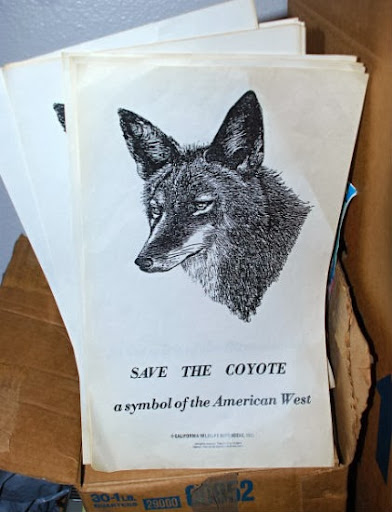
“Save The Coyote” posters in Brooks’ home | Brenda Rees
Have Camera, Will Snap, SoCalWild, February 2014
Camera Trapping Masters
“Science doesn’t belong only to the people who go to school for it, today, it’s available for everyone to become a citizen scientist,” says Denis Callet, a Montrose-based photographer, as he hikes up a secluded trail in the Los Angeles Forest.
It’s bright and early on a Saturday morning and Callet is joined by fellow outdoor enthusiastic, Johanna Turner who has been recording trail cam images of SoCal mountain lions, bobcats and other local critters since 2007. Turner’s well behaved dog Ripley joins the duo who connected about two years ago through their fierce love of local wildlife.
Callet and Turner wouldn’t have met in their normal 9-5 world; he works retail and she’s in the entertainment business. But together they are slowly transforming the science of the trail camera – now a must for any outdoor research biologist – into a template for art.
Today, the two are hiking to check their four cameras hidden in the forest; they also have cameras in remote local areas. Sure, they have the standard Bushnell cameras that collect video images, but these camera trappers are anxious to see is what Callet’s homemade DSLRs – which yield high quality color images – have clicked in the past two weeks.
Callet and Turner each carry big backpacks full of equipment, hardware, batteries, cords, zip-ties, duct tape and more. Turner also carries her laptop so the two can check on how the cameras are positioned, if the lighting, sensors and triggers are working, etc. etc.
It’s hard to gauge what’s the main topic of conversation on the trail – the refinements they are going to make to the camera and camera set-up or the wildlife that surrounds them.
Big ticket cameras are “not in our budget; we’re not using top of the line stuff,” says Turner about camera trapping that was original marketed toward hunters and landowners. But Callet’s prowess with photographic equipment and his MacGyver-like ability to jerry-rig pieces and parts (“eBay is a very, very, very good thing,” he says) is yielding fantastic results.
“He’s so picky about the images, things that I think are wonderful, but he wants them perfect,” says Turner about Callet’s perfectionistic streak.
These remote animal portraits are difficult to come by. Remember, it took National Geographic photographer Steve Winter a year and a half to get that now famous shot of Griffith’s Parks P-22 with the Hollywood Sign in the background.
“And that cat had a collar so they knew where he goes and his regular paths,” chimes in Callet in his thick French accent. (He came to SoCal 27 years ago.) “Winter also had a team who would go out and check the cameras,” adds Turner. “It’s just us doing this.”
Indeed, Turner has been camera trapping for a long time. On her popular CougarMagic blog, Turner shares images taken with her remote cameras that she’s set up all around SoCal wild areas. These days, she’s posting more frequently on CougarMagic’s Facebook page. Years ago, she posted images of a collar mountain lion – P-12 – in the Santa Monica Mountains that caught the attention of National Park Service ranger Jeff Sikich. That photo revealed a broken radio collar which helped Sikch understand why he was having trouble tracking the big cat.
“Citizen scientists can provide some real important data for us,” he says adding that, “There are not that many people out there doing this. Cameras can get stolen or damaged. It’s hard work. But Johanna has such a passion and is so dedicated to it. She’s been able to cover areas of the mountains that I haven’t been to.”
Equally enthusiastic about wildlife behind a camera, Callet admired Turner’s popular Cougarmagic blog/YouTube Channel for years. He finally sent her an email about collaboration and encouraged her to check out his personal blog of nature photos, many taken in the Hahamonga Watershed Park, the Arroyo Seco and surrounding terrain. Dramatic photos of ospreys, great horned owls and videos of red shoulder hawks feeding their young. “I knew he was for real and serious,” she explains. “He has the eye and passion for this.”
After a 45 minute hike from the parked car, the pair finally reaches the first cameras that are secured tightly in Pelican boxes and fastened with strong ties.
“Look at this…112 videos. That’s a lot!” remarks Calett as Turner takes out her laptop to pop in the SD card. It’s a lot like Christmas as the two scroll through images of squirrels, squirrels and even more squirrels, some cavorting in a recent snow storm. Will it be a disappointment? “It’s never a disappointment when you are out in nature,” says Callet emphatically. “Even when we don’t get anything, we can learn how to set it up better.”
Turner chides him: “I have seen you disappointed! Right when the sensor missed by a second. You get frustrated then.”
“Well…yes, that’s true…” reluctantly admits Callet with a sheepish grin.
Near the end of the SD card, the duo strikes gold. “Yes!” exclaims Turner, fist in the air and emotion leaking from her eye. It’s King Arthur, a big mountain lion that Turner has camera captured in the area over the past three years. She carefully observes the cat’s walk, how he stops to smell the scent (Obsession by Calvin Klein) and then wanders out of view. It’s like seeing an old friend, she explains. Jackpot, three times over.
After replacing batteries, repositioning lights and triggers, the duo checks the other cameras. Once again, squirrels and foxes are racking up valuable photo space (“It’s like the show should be called, ‘Fox and Friends,’” jokes Callet), but an image of two foxes playing in the snow is noteworthy.
Clicking through the SD faster, Turner suddenly stops. It’s images of a mama bear and cub – in one image they are rolling in the snow. “Do you think it’s the little guy from last year?” she wonders. “Mama looks great! Very healthy. Oh, it’s so good to see her.”
All in all, it’s been a good morning camera trapping for Callet and Turner. Over the years, they’ve spent thousands of dollars, countless hours hiking back and forth from remote locations, often coming back only with bad batteries, empty shots and unusable images.
But the times that skill, expertise and luck all clicks together to produce Olympic gold images make up for any frustration or disappointment. Hands down.
“This is more than a hobby, it’s about conservation because these guys need all the help they can get,” says Turner. “Camera trapping is like a religion,” agrees Callet. “You just have to believe.”
– Brenda Rees, Editor
Below are just some of the images that Callet (along with Turner’s help) have produced. We advocate that any sane photographic gallery sign them up for an exhibition…stat!!
Finding Flutterers in Ventura, SoCalWild, November 2013
Counting Monarchs in the Rain
The rain was fierce, pouring down in steady sheets on this cold morning in Ventura. What kind of day is this to count butterflies, I wondered as I pulled into a small neighborhood park to meet Donna Grubisic, a volunteer with the Vista-based Monarch Program. Fat drops fell on our heads as we shook hands underneath our umbrellas and walked passed playground equipment to a fence overlooking a grove of eucalyptus trees.
“Do you see ‘em?” she asked pointing to a low hanging branch.
“Uh…”
“Right there.”
OOOOHhhh…that low hanging branch was not covered with leaves…but rather was filled with butterflies, monarchs with dull under-sided folded wings. Huddled together motionless, the clump of monarchs were finding strength, protection and warmth in numbers.
An average monarch weighs about 500 milligrams and large raindrops have a mass of 70 milligrams or more. Michael Raupp, professor of entomology at the University of Maryland compares raindrops splashing on monarchs to humans “being pelted by water balloons with twice the mass of bowling balls.” Ouch.
Grubisic demonstrated how she counts this particular butterfly grouping – she uses both 2D and 3D estimates then adds for those hidden flappers that are inside of the monarch mass. “It’s about 750-800 butterflies,” she says about this particular clump. “Give or take.”
This location is one of seven that Grubisic has overseen for this year’s annual Western Monarch Thanksgiving Count which has been around since 1997. Taking its cue from Audubon’s Christmas Bird Count and the North American Butterfly Association’s Fourth of July Butterfly Count, the monarch tally is a way for citizen scientists to measure the health of the country’s most beloved winged insect that overwinters in the (usually) warm climates of SoCal and Baja. (Not today!)
The count starts in late November since that’s traditionally when most monarchs in the West convene along Pacific coastlines in individual trees or in huge groves. There are about 200 sites in California but only 100 are counted (not enough volunteers. Contact the Western Monarch Thanksgiving Countto learn how you can help). Monarchs typically hang out in our turf until early spring when they mate, lay eggs and then…die. Only 3 percent of the monarchs eggs will make it to butterfly-hood and they will carry on the age-old migration pattern.
Grubisic counts at locations in Ventura, Carpentaria and Summerland and her numbers will be added to the ongoing tally sponsored by the Xerces Society in Oregon. (The official numbers from this count will be released in early spring.) She’ll not only count, but make notes about roosting trees, eroding habitats, any new development in the area and other new butterfly behavior.
In addition to counting butterflies, Grubisic is a docent at Ellwood Butterfly Grove in Goleta, where, among the sprawling eucalyptus trees, she welcomes visitors, answers questions and learn about butterflies in the ecosystem.
So far, the count at Ellwood has been down, she says. “It was 17,000 last year and as of about [mid-November] only 2,000” she explains. Monarch Program intern Charis van der Heide at Ellwood concurs in an email saying that “this year is shaping up to be very intriguing.” While the monarch numbers are indeed low for Ellwood (last year there was a peak of 40,000 in December), up further north folks are seeing record numbers at Pismo Beach Monarch Grove. More than 34,000 were counted very early in the season.
“The butterflies seem to be shaking things up this year,” van der Heide concludes. “It will be really interesting to see what the numbers look like throughout California.” Climate change theories anyone?
Overall, should California count its blessings when it comes to the western monarchs? A recent article by Jim Robbins in The New York Times “The Year the Monarch Didn’t Appear” describes the incredibly low numbers of monarchs that made it to Michoacan, Mexico this year. As of mid-November, only 3 million had arrived at their wintering home – last year it was 60 million and even that was a pretty low historical number.
Grubisic notes that her counting areas have either yielded more, less or the same numbers of flutters. “Maybe they are roosting in other areas we just don’t know about,” she offers as we tour another one of her locations. The rain is letting up and it’s easier to see the hanging clumps of butterflies high above. They look so vulnerable, clinging to one another, braving the wet and cold, waiting for the sun and spring flowers.
Every year, more of their habitat is destroyed along with their beloved milkweed, the only plant they will lay their eggs on. According to the Loose Leaf blog of the American Forest Association, “the world’s monarch butterflies now fit into an area smaller than four football fields.” It’s the smallest space in 20 years.
With a background in ornamental horticulture, Grubisic became interested in butterflies when her kids were little. As a family, they raised caterpillars, watching the transformation and later tagging the flappers to see how far they would travel. Slowly, Grubisic added nectar flowers into her garden which today, she says, is overflowing with ceanothus, lantana, star dusters and of course, dozens of varieties of milkweed.
When you plant milkweed for the butterflies, she says, expect to find sticks in the spring from all those hungry caterpillars. “People who want pretty gardens need to know that if they plant milkweed,” she says. “But the plant comes back.” (See where to purchase milkweed in SoCal.)
After touring Grubisic’s sites, we are back at the first location. As if on cue, the sun comes out and the butterflies start moving, stretching and even leaving their clusters. A man and his dog come to the playground and he stops to watch the monarchs. He tells us that as a kid his class would visit this spot regularly during the migration and he remembers one year the trees “were orange. So many butterflies. You couldn’t even see the trees.”
Bold Birds, SoCalWild, November, 2013
Captured with serious, bold and unflinching poses, the new exhibit “Nature LA: Birds of Prey” running into Jan. 5, 2014 at the G2 Gallery in Venice showcases Southland feathered flappers from the lens of Culver City-based photographer Jennifer MaHarry. These are the not the happy chirpers helping Cinderella that you’d see in a typical Disney movie; no these are raptors, serious and unflinching, thoughtful and daunting, birds that make you instantly realize how close genetically they are to their dinosaur ancestors.
Red tailed hawk eyeing the scenery – photograph by Jennifer MaHarry
MaHarry is best known for her poignant and intimate images of wild horses; she’s a long-time advocate against the government sanctioned roundups of wild mustangs and burros, events which, she says, allows for many organizations to buy these magnificent creatures and profit from their slaughter.
MaHarry’s current exhibition, however, features the beauty and power of local birds of prey; and it all came together by missed opportunities, an afternoon of 100+ temperatures, and perched turkey vultures eyeing her in the Arizona wilderness.
Earlier in the year, MaHarry had made arrangements to photograph a wild horse and burro roundup in Nevada; but unlike other times where she was allowed in to snap and capture images, BLM officials there denied all photographers from the event. “Everyone was hopping mad,” she recalls wondering how she could salvage this trip with some images. (MaHarry’s day job is a graphic designer working in the motion picture marketing arena.) She knew of a natural horse habitat in Arizona and thought, ‘Maybe I can find some,’” and booked a quick flight there.
So MaHarry was in the starkness of Arizona on an incredible hot afternoon. She didn’t find as many horses as she had hoped; but she was the object of interest from a group of turkey vultures that watched her from high above a rocky perch. “I watched them for a long time,” she says. “I saw how curious and social there were with each other and when I came back and read up on vultures. I was fascinated with them.”
MaHarry took that fascination to a broader scope and decided that if she couldn’t photograph horses, maybe another critter was calling to her camera. She contacted officials at local wildlife rescues – theOjai Raptor Center and the California Wildlife Center – to see if she could photograph any birds of prey there. For months, she visited the centers to snap rehabilitated birds, many that would soon be released back to the wild.
Setting up a simple giant scrim as a backdrop, MaHarry found personalities of each of the birds of prey she photographed. The kestrel was skittish, the great horned owl was intimidating (“I read his talons, when clenched, exhibits 4,000 pounds per square inch of bone-crushing power”) and the screech owls were overwhelming adorable (“I had to keep hands in the photo so you could see how small they really are.”)
MaHarry’s golden eagle — Photograph by Martha Benedict
Cute-factor aside, these birds of prey impressed MaHarry with their wild and powerful nature. “I wanted to capture a soulful look from them, something that expressed who they are, these beings completely covered with the most beautiful feathers. No fighter pilot can achieve the natural agility and speed these birds possess without blacking out from the extreme G forces that the birds are able to endure.”
Among the portraits of local raptors – red tailed hawk, merlin, barn owl, short eared owl and more – at the exhibit, MaHarry’s image of the Arizona turkey vulture hangs as a testimony to her photographic journey.
MaHarry and the vulture that started her avian quest – photograph by Martha Benedict
Also, a raven is present, and while not necessarily a bird of prey, a bird that MaHarry wanted to include because of its intense intelligence.
What is this raven thinking? – photograph by Jennifer MaHarry
MaHarry says she will continue to photograph wild horses and be a voice against their destruction, but this side road down the path of local raptors was a welcomed diversion. “I’d love people to realize that not all birds are cute little songbirds,” she says. “The world these birds live in is fierce. They are fighting every day for their survival. They are amazing creatures, worthy of our awe.”
– Brenda Rees, editor
Great Horned Owl in a pensive moment – photograph by Jennifer MaHarry
‘Saints and Martyrs’ at the Getty, The Tidings, Sept. 2013

Saint Jerome Extracting a Thorn from a Lion’s Paw, cutting from Master of the Murano Gradual, northern Italy, about 1425-50
Calm St. Jerome extracting a thorn from the paw of a lion; the miraculous intervention that delayed St. Catherine of Alexandria’s execution by the torturous wheel; the gratefulness of everyday life as witnessed by St. Hedwig — these are just a few of the stories that make up the current exhibition “Miracles and Martyrs: Saints in the Middle Ages” at the J. Paul Getty Museum.
Now on display through March 2, 2014, the exhibition features artwork that adorns pages of private prayer books, devotional tracts and even biographies.These images help us better understand how people in medieval times viewed the world around them — and how their connection with saints helped lay the foundation of their faith, says Elizabeth Morrison, senior curator of manuscripts at the Getty who along with Melanie Sympson, staged this exhibition.
When visiting the exhibition, Morrison says, try not to see the saint stories not so much as “historical recounts of actual events,” but rather as lessons on how to live and appreciate life. “They were role models,” she says about the holy men and women who presented images of goodness, piety, sacrifice and even a willingness to suffer torture and death. “These personal stories were meant to resonate with your own life.”
Through the years, devotions and attention to certain saints have waxed and waned. Interest in some saints can be cultural and societal, says Morrison, who points to the example of St. Appolonia who was martyred by having her teeth extracted, and was a very popular devotion for people with teeth problems.
The mediaeval faithful “would ask her intercession because, well, she of all people would understand the pain,” Morrison explains. But with the rise of dentistry, the devotion to St. Appolonia declined.
Still, there are those saints whose stories span centuries. In the exhibit, the rich image of composed St. Jerome tending to the wild lion reinforces the ideal that saints had special connections with not only the spiritual but also the temporal world.
That peaceful composure is also found with St. Catherine of Alexandria who confounded the pagan philosophers of the day with her teachings of Christianity but was still sentenced to death via the “wheel” only to have that miraculously destroyed. But that didn’t save Catherine’s life. She was eventually beheaded, a quicker death than the painful torture of the tortuous wheel instrument.
Morrison points out all the symbolism that is associated with this image: Catherine keeps her finger in place in a book signifying her great intelligence, the dog at the bottom is a sign of loyalty, the anchor and lilies in the right border may be emblems of her family, other border images of a seahorse and pelican are enduring religious symbols. These short images — Twitter for the Middle Ages? — were included so the viewer could take in the whole meaning with just a glance, explains Morrison.
In addition to the horrific images of martyrdom on display (including St. Sebastian whose death by numerous arrows has captured the attention throughout centuries of retelling), the exhibition features saints celebrating the simple joys of everyday life. Morrison presents a large biography of St. Hedwig which was commissioned by her descendants years after she was canonized.
After a life as a mother, wife and noblewoman, St. Hedwig — along with her husband — decided to join in a communal life with fellow religious leading a chaste life doing good deeds. “She was a very down-to-earth woman whom you could easily relate to,” she says of St. Hedwig’s small acts of daily devotion.
On the page are images of Hedwig honoring the life in the convent but showing her thanks to the stairs, the choir loft and even the hand towels. “Her humility is what we see as a model of devotion,” says Morrison adding that her image was particularly inspirational since many other female saints were either virgins or martyrs. “She was a role model to mediaeval women leading regular lives to perform small acts of devotion every day.”
“Miracles and Martyrs: Saints in the Middle Ages” will feature new images rotating at various times through the exhibition. Upcoming events related to the exhibition include:
—A panel on “Why Do We Need Saints?” (Oct. 30, 7 p.m.), presented by Zocalo Public Square, discussing saint devotion, how popular and regional movements have created saints, and what saints have offered to those who love them.
—Gallery talks led by curator Elizabeth Morrison (Nov. 19, Jan. 14 and Feb. 11, 2:30 p.m.).
“Miracles and Martyrs” runs concurrently with “Canterbury and St. Albans: Treasures from Church and Cloister,” on view through Feb. 2, 2014 at the Getty Center. This exhibition showcases 12th-century stained glass from Canterbury Cathedral, plus an extraordinary manuscript made in the same period at St. Albans Abbey that features a section focused on the holy individuals associated with each of these two English institutions: St. Thomas Becket of Canterbury and Christina of Markyate at St. Albans.
“Miracles and Martyrs: Saints in the Middle Ages” will be featured through March 2, 2014 at the Getty Center, 1200 Getty Center Dr., Brentwood. Information: (310) 440-7330 orgettymuseum@getty.edu.
Galleries of Change, Arroyo Monthly, October 2013
The Autry National Center celebrated its 25th anniversary with a thoughtful remodel that brings two galleries into the 21st century.
By Brenda Rees
You think redesigning your kitchen was a big undertaking? Was your living room remodel more complicated than you originally planned? Did options for updating your home office make your head spin?
Critter Migration, Westways Magazine, October 2013
Wildlife is on its migratory voyage during the fall, which makes this an optimal season to catch nature in action. Witness critters on the move and learn about how we can continue to preserve their habitats. —Brenda Rees
Land: Tarantulas
Usually nocturnal, hairy male arachnids leave their underground burrows to search for females during the daytime.
Prime viewing: September through October.
Where: The annual mating season sets tarantulas on the march throughout SoCal grasslands, chaparral, canyons, and deserts. Orange County’s Thomas F. Riley Wilderness Park rangers report seeing both brown and gray/black species on their trails. Monthly ranger-led hikes are a good way to see these shy, solitary creatures.
Contact: 30952 Oso Parkway, Coto de Caza. 1-949-923-2265
Air: Vaux’s swifts
These slim, fast-moving birds with their high-pitched, continuous chattering prefer roosting in chimneys.
Prime viewing: September through October.
Where: Vaux’s swifts travel through the Southland from Alaska to warmer winter climates. At peak migration, thousands of Vaux’s swifts can be seen entering chimneys, including those along East Street and Ninth Avenue in San Diego and the top level of Joe’s Auto Park at 440 South Broadway in downtown Los Angeles, where the Audubon Center at Debs Park typically sponsors a viewing party. Check website for details.
Contact: 4700 N. Griffin Avenue, Los Angeles. 1-323-221-2255.
Sea: Pacific gray whales
The barnacle-encrusted, sleek, torpedo-shaped marine creatures have one of the longest migrations of any mammal.
Prime viewing: November through April.
Where: Pacific gray whales travel 10,000 to 12,000 miles round-trip every year from their Arctic feeding grounds to Mexico, where females give birth in the warmer waters. The Aquarium of the Pacific offers daily cruises to search for these gentle giants that swim past Long Beach Harbor’s coastline.
Contact: 100 Aquarium Way, Long Beach. 1-562-590-3100
Home on the Pickleweed, SoCalWild, August 2013
Countless birds fly under the radar in the Endangered Bird World these days. Many birds don’t get the full court press like their flashier “rock star” cousins, flappers that require extraordinary measures to ensure their survival in the wild.
We hear about the superhuman efforts (and big $$$) to save the California condors, bald eagles and other notable birds; scaling the sides of mountains to remove viable eggs, creating floating islands so mama birds can safely nest, closely monitoring every movement, flight and meal in the wild. Some birds are almost living a Truman Show existence.
But consider the Belding’s Savannah sparrow – a seemingly innocuous, unassuming federally threatened state endangered bird that has managed to eke out survival in one of L.A.’s seriously decimated habitats: the coastal salt marsh. “Based upon the 2010 surveys, Belding’s are doing well within their range in California,” states the most recent report by the California Department of Fish and Wildlife on the bird which was surveyed from Goleta to Baja, Mexico. “This is the highest state total reported since periodic counts began in 1973,” sums up the report.
(An Acrobatic Belding’s Eyes the Territory…Photo by Matt Sadowski)
Since 1973, the numbers of Belding’s have increased three-fold statewide despite that its’ preferred home has shrunk considerably from its once majestic acreage.
Bits and pieces are all that remains of the once giant coastal salt marshes that stretched from Santa Barbara County to Mexico. It’s estimated that today we’re only seeing between 5-10 percent of the marshes that once bogged the area. Dredged and bulldozed over for development, it’s a wonder we have anything left of these soupy prairie-like lands where wildlife – especially birds – flock.
The remarkable story of the Belding’s Savannah sparrow is how closely intertwined the bird is with the landscape. Coastal salt marshes are the ONLY place you’ll find this bird and they are not known for migrating from marsh to marsh. They live, eat, mate, nest and die in pretty much the same neighborhood. They create strong family units with hatchlings and even dad helps take care of the young.
The last remaining coastal wetlands in Los Angeles County, the Ballona Wetlands Ecological Reserve in Playa del Rey has been a consistent home to a small but plucky group of Belding’s that just wants to keep peace among sea-blite, salt bush, salt grass and, its favorite plant, the pickleweed that, like the bird, is only found in salt marshes.
(The Ballona Wetlands today….photo: Friends of Ballona Wetlands)
This little songbird didn’t require conservation acrobatics to stabilize its population – the needs of the Belding’s were simple: pickleweed, seeds, insects, a mate and…. oh, yeah….a coastal salt marsh. An endangered bird in an endangered landscape.
Considering the cost of what it takes to bring back other species, the Belding’s is “a bargain bird,” says biologist Dan Cooper who has recently surveyed and reported on the birds’ current state of affairs at Ballona. “The land is the thing for the Belding’s’,” he says. “They have a little stable population there without any real management to speak of but they are a real conservation success story.”
“There were about 13 pairs in the late 80s and now we are seeing about 20 pairs,” says Cooper who adds that numbers have fluctuated up and down over the years but they are steadily trending upward. “With the pickleweed expanded in recent years, so has the population of Belding’s.”
Cooper says that no one really has studied the mortality rate of the youngsters. After all, these birds are fighting non-native red foxes and domesticated cats and dogs that find their way into the reserve. If Fido and Fluffy are kept at bay, who knows how many more Belding’s may grace the wetlands? Probably a lot more. Homeowners: take note.
(House cats roam Ballona…Photo by Martha Benedict)
“There is certainly room at Ballona for more Belding’s,” says Cooper. “The land can accommodate them.”
“They are cute little strappy guys,” says Kathy Keane, biologist who surveyed the Belding’s from 2006-2010. “They seem so much in their element when I observed them,” she says describing how the birds’ nest and care for their young from about late April through August.
(Strappy Enough for You?….Photo by Matt Sadowski)
Keane talks fondly about the songs that the male sings to the female during mating and the occasional altercation between males when they have a “fluff-up face-off.” Even with the roar of airplanes overhead, traffic from nearby boulevards and predation, “These birds manage to go on with their daily lives,” she says. “They are really persistent.”
Indeed, both bird and landscape have tenacity for…well, just being here.
The Belding’s hopeful story mirrors the hope for the revitalization of Ballona landscape which has been constantly changing since European settlers embraced the area decades ago.
Over the years, this once-lush wetland has been a cattle ranch, a race track, agriculture plots, a recreational boating and fishing site, a riding stable, a massive oil rig operation and an airport runway. In the 1950s, the Army Corps concreted over many of the nearby springs/creeks that fed into the area. In the 1960s, 900 acres of wetlands was destroyed for the construction of Marina del Rey.
(Grazing Livestock at Ballona in the 1800s…Photo from Friends of Ballona Wetlands)
When scientists, environmentalists and citizens woke up and smelled the burnt coffee in the 1990s, they realized that in exchange for roads, apartment building and shopping centers they had, for all practical purposes, killed freshwater ponds, vernal pools, wet meadows, freshwater marshes and numerous springs. Efforts to save what little of the Ballona was left kicked into high gear.
Today, the Ballona landscape is set to change once more. The reserve has been owned by the State of California since 2003; the area is managed by Fish and Game with the California Coastal Conservancy and the California State Lands Commission part of the equation; the volunteer-basedFriends of Ballona Wetlands also has a stake in the upcoming discussion about tidal flushing.
(Ballona Landscape…Photo by Martha Benedict)
A true wetland would have regular tides coming in and out giving the area a good salt water bath which would help the pickleweed and other plants grow – but such flooding could mess up nearby Culver Boulevard not to mention the Belding’s’ and other species garden level habitats. It’s not just a question of “To Flush or Not To Flush,” but how much, when and where. In addition, some Native Americans are also concerned about disturbing land that they claim is sacred. Stay tuned.
Until that decision comes, life continues for the birds of Ballona. On a recent August morning, the Belding’s weren’t coming out to sing since mating season has long past, but you could scan the expansive marshland and see the pickleweed tips turn summer red. Mockingbirds, herons, gulls, pelicans and other flappers take to the skies above.
(Pick a Patch of Pickleweed…Photo by Martha Benedict)
Thriving only in a salty habitat, the Belding’s continued presence at Ballona may not be the heart-pounding, high-stakes conservation story of some of its feathered cousins. But its’ tale is just as profound: when given the right conditions – aka, space and freedom – nature can quietly reclaim both landscape and critter as one, bringing back into the fold what was once lost.
(Ballona Trailer Art…Photo by Martha Benedict)
– Brenda Rees, editor
Special thanks to Karina Johnston, restoration ecologist of the Santa Monica Bay Restoration Commission, Kathy Keane of Keane Biological Consulting, Dan Cooper of Cooper Ecological, and Lisa Fimiani of the Friends of Ballona Wetlands.
Worlds of Whimsy, Westways Magazine, June 2013
Los Arboles “Rocketship” Park, Torrance
Photo by Kevin Knight
These old-school playground help imaginations soar
Remember carefree days outdoors as a youth, spinning until dizzy on a merry-go-round or rubbing waxed paper on a metal slide for a zippier ride? Public playgrounds have long held a special sway, delighting children and filling the rest of us with nostalgia.
With their roots in 19th-century Germany, playgrounds encourage exercise, good manners, and healthy competition. In 1837, German education specialist Friedrich Fröbel founded the precursor to the modern kindergarten and paved the way for children to connect with the outdoors through play.
The trend arrived stateside at a time when immigrant families were crowding into urban neighborhoods. Social reformers advocated playgrounds as a way to curtail delinquency and provide a safe place for children to play. The first American playground was built at San Francisco’s Golden Gate Park in 1887.
Early playground equipment resembled gymnasium apparatuses that were meant to appeal to kids of all ages. However, artists and architects in the post–World War II period brought a new aesthetic to play structures. Spurred by a growing movement of experimentation in the 1950s and ’60s, they saw playgrounds as untapped territory for expression using unusual forms, materials, and themes, says Paige Johnson, who blogs about playground design at Play-scapes.com.
Many playgrounds from that era have disappeared and been replaced with prepackaged plastic modules. But remnants of these fantastical worlds still can be found in Southern California. Here, on any given afternoon among whimsically formed concrete, steel, and wood, imaginations take off and lifelong memories are made.
Torrance Los Arboles “Rocketship” Park
- Best for ages 5-12
- Playtime: Plenty of lawn space for blankets; be mindful of little ones near the unfenced slope. No restrooms, few picnic tables, and street parking only.
In the 1960s, following the launch of the Soviet Sputnik satellite, rocket ships were blasting off at playgrounds all over the United States. These classic conical metal structures whizzed children into the vastness of outer space from the comfort of their neighborhood park.
Today, most metal ships have gone the way of the scrap yard, but some, including the Rocketship at Los Arboles Park, have found a permanent launch pad.
Installed in 1964 and then restored in 1992 (residents complained loudly when park officials removed the structure earlier that year), this four-level spaceship provides one of the best views of the entire L.A. basin and now features an official plaque from the Torrance Historical Society.
You’ll lose count how many times you hear “4, 3, 2, 1, blast off!” as astronauts in training scale a ladder inside the ship from bottom to nose top. The metal slide is long, fast, and best for older kids. Nearby, a metal replica of a lunar module, with firefighter poles, ladders, and controls, is ready for battling aliens and saving planet Earth. 5101 Calle de Ricardo, Torrance. 1-310-618-2930.
San Gabriel La Laguna de San Gabriel at Vincent Lugo Park
- Best for ages 1-12
- Playtime: Bike paths, with bridges over a dry creek bed, surround the playground. Restrooms, picnic areas, soda/water machines, and bike racks. Park in the east lot for closest access.
Slide through a snail’s mouth, climb sea serpent spires, and cavort with wild dolphins at La Laguna de San Gabriel, which has been inspiring children to play since 1965.
Located in a hidden corner of Vincent Lugo Park, this aquatic-themed fantasyland was handcrafted by then-72-year-old Mexican concrete artist Benjamin Dominguez (see sidebar).
Despite its charms, La Laguna was slated for demolition in 2006. Local residents rallied to save the park, and in 2009 the California Register of Historical Resources welcomed the entire menagerie.
Today, the city, along with the Friends of La Laguna, is working to preserve the landmark. Visitors will find repaired structures (the dock, Lookout Mountain slide), as well as pieces awaiting renovation, including the currently off-limits Ollie the Octopus. Bring sand toys for toddlers, and expect older kids to invent story lines about a treasure chest, a sunken pirate ship, seal-shaped islands, and a whale. 300 W. Wells Street, San Gabriel. 1-626-308-2875.

Garden Grove Atlantis Play Center
- Best for ages 1-13
- Playtime: The cash-only snack bar and water play area are open June–September. Restrooms and shaded picnic areas. Operating hours vary. $2 (cash only) for ages 3 years and older, free for ages 2 and younger.
Celebrating its 50th anniversary this June, the Atlantis Play Center is a fully enclosed oasis of imagination that’s filled with oversize concrete sea critters and bucolic rolling greenery.
Let the kids loose in this 4-acre play preserve to discover what lives around the corner, up the hill, or under the bridge. The park is often crowded in summer with children from camps, so weekends are better times to visit.
Concrete artist Dominguez fashioned many of his signature aquatic creatures here—sea serpents; dolphins; a shark; and the all-time favorite, a sea dragon shaped into a slide that gently swirls riders down from atop a high peak.
While young children endlessly race up sloped stairways and grassy hills, older kids can enjoy extreme hide-and-seek in the shrubbery. Walkie-talkies would be perfect for spy games, but leave bikes, scooters, and roller skates at home. These items, along with dogs, are not allowed in the park. 13630 Atlantis Way, Garden Grove. 1-714-892-6015.
West Covina Sabre Jet Fighter at Palm View Park
- Best for ages 3-10
- Playtime: Two play areas (one enclosed for toddlers) and some exercise equipment for teens and adults are nearby. Restrooms, a shaded picnic area, and soda/water machines.
This playground’s star attraction is a U.S. Air Force F-86D Sabre Jet. Plopped on its belly atop wood chips, the sleek, shiny silver aircraft is the real deal: The plane never saw active combat, but it was flown by the Air National Guard and at various military bases in the 1950s.
The West Covina Junior Jaycees and representatives of aerospace manufacturer North American Aviation worked to transport the flying machine to its current home in 1961. Since then, it’s been covered with plaster so little hands and knees won’t burn on the hot metal. Nearby water misters provide relief on hot summer days when kids have missions to fly.
Enter the plane from the tail via a makeshift rebar ladder and walk across the top to the cockpit for make-believe aerial encounters. Be sure to photograph your pilot in the red front nose. 1340 E. Puente Avenue, West Covina. 1-626-939-8430.
Benjamin Dominguez Trained in “trabajo rustic” (making concrete to look like wood) at the Escuela Nacional de Artes Plásticas (National Academy of Visual Arts) in Mexico City, Benjamin Dominguez achieved fame at the city’s Chapultepec Zoo with his elaborate cement lion and tiger caves.
After immigrating to the United States in the 1950s, Dominguez created concrete items for golf courses and open spaces (bridges, tree sculptures, etc.), but he quickly became known for his fantastical concrete playlands throughout the Western U.S. Sadly, many of his rebar-and-cement structures have been demolished. Today, Dominguez’s fanciful creations are found locally only in Garden Grove, San Gabriel, Coldwater Park in Beverly Hills, and Legg Lake Park in Whittier Narrows.
As a child, Eagle Rock freelance writer Brenda Rees was always hopeful to swing so high that she’d touch the sky.
Back to the Land, Arroyo Monthly, June, 2013
City folk reconnect with their roots at bed-and-breakfasts that offer farming experiences.
If your dream vacation involves hands-on, can-do activities, consider a new industry buzzword — agritourism. That encompasses vacations on a farm where you can roll up your sleeves and help with chores or simply enjoy the bounty of an organic garden. “The trend of locally produced organic foods and living off the land has expanded into the bed-and-breakfast arena,” says Mary White, founder and CEO of BNBFinder.com, a guide to B&Bs around the country. “People are hungry for an authentic experience of what ‘back to nature’ means, and they want to explore that in a peaceful retreat setting.”
Indeed, B&Bs and inns are no longer just rest stops for collectors of antiques. Today, some offer city folk the chance to participate in and learn about life beyond freeways, mini-malls and high-rises. White stresses that these comfort-minded inns still provide luxury lodgings (you won’t end up sleeping in a hay-filled barn), and no one is required to participate in farm activities. “If they want to join in, they are welcome to,” she says. “[That involvement] just adds to the whole package.
“We see B&Bs offering fruit-picking in orchards, grooming animals, milking cows and helping with harvests,” White continues, adding that these activities are not just family-friendly, but also a way for adults to connect with the land.
One Southern California B&B has been luring weary guests to rejuvenate at 4,800 feet above Yucaipa. Located in the hamlet of Oak Glen, the Serendipity Ranch Bed and Breakfast is nestled in a scenic valley known for its apple orchards. The seven-acre ranch boasts trees from an orchard originally planted in the early 1900s. And when fall landscapes the property with colorful leaves, guests are encouraged to pick the fruit which may then be used in the hearty breakfast. Nina Foster, who owns the B&B with her husband, William, says she often sends people home with fresh squashes, tomatoes and onions from her two large garden beds. “Fresh vegetables are a perfect parting gift,” she says.
Wildlife is also abundant around Serendipity as the ranch, itself a Certified Wildlife Habitat, abuts a wilderness area. Weasels, chipmunks, coyotes, bobcats, bears and mountain lions have been seen on or near the property, and ducks, quail and rabbits are regular visitors, Foster says. Every morning she fills an enormous bird feeder which another regular visitor, Judy McInnis, says draws a flock of “the most beautiful birds.” Foster says she has counted 47 different bird species at her feeder.
Guests are also welcome to interact with the domesticated critters that live on the ranch. Brea resident McInnis, who has visited Serendipity with family and friends for years, recalls that when she and her sisters groomed and walked the miniature horses, she felt like she was “12 years old again. It was so special. We were so giddy.” McInnis is one of many guests delighted by the inn’s stable of miniature horses — animals that have been there for many years, Foster says. “Big kids, little kids, everyone is welcome to take them for a walk,” she says, adding that visitors can also take part in a special guided tour of the ranch’s other fauna — llamas, goats, geese and deer — and get hands-on experience feeding and grooming them.
Serendipity’s natural beauty has brought McInnis back year after year. “I’m a nature freak, and this place is so charming with the flowers, apple trees, ponds and all the animals,” she says. McInnis’ sisters and parents recently joined her in taking over the entire B&B for a weekend get-together (there are only four guestrooms in the entire place). “My mom uses a walker and we like the fact that it’s all flat walking here,” she says. “We really feel like it’s our home away from home. When we all sit at the table, we are it!”
Northern California’s Stanford Inn by the Sea, an eco-resort on the Mendocino coast, bills itself as the country’s only vegan resort so, not surprisingly, the freshest produce is high on its list of amenities. The source is Big River Nurseries, sandwiched between coastal forest and ocean, where the inn’s owners, Jeff and Joan Stanford, have been practicing organic and sustainable farming for more than 26 years. In addition to supplying the B&B’s award-winning Ravens’ Restaurant, the garden also provides herbs and other produce for a few other restaurants and grocers in the area. The Stanfords are happy to explain their gardening techniques to their guests; the garden also welcomes interns from around the world who are studying agriculture and sustainable practices.
In addition to having guests help with the weekly harvest, the Stanfords offer gardening and cooking classes (all presented with a vegan beat), as they share their philosophy of the sustainable lifestyle, which has transformed the area. “When we first came here in the 1980s, there were no birds here,” says Jeff Stanford. ”The grasses died out until the next season; there were no seeds, no insects, no birds.” Now, having worked the 10-acre property without pesticides or fertilizers, the resulting lush green meadows and landscape have created a haven for wildlife. “We are on the top of bird counts for the coast,” he says.
Bay Area resident Margaret Miner has been coming to the Stanford Inn for more than 10 years; in fact, she was married there two years ago. Miner says she was initially drawn to its popular vegetarian restaurant but has since returned numerous times, not just for the landscape (“It’s breathtaking”) and the owners’ company (“Joan and Jeff don’t just talk [sustainability], they live it”), but because pets are welcome and she can bring her dogs with her.
“Jack [a mixed breed] was in our wedding party and the best man held his leash,” she says, adding that her new collie, Jerry, has joined the family on vacations there. In addition to relaxing by the fireplace with her dogs and hubby, Miner walks the nearby trails, watches folks kayak and bike, relaxes in the indoor pool and spa (which is cleaned with natural enzymes instead of chlorine) and enjoys the other guests she meets at the daily happy hour (yes, vegan wine is on the menu).
When Miner lost both parents and a brother a few years ago, she found solace at the inn. “It’s a wonderful haven that is welcoming and comfortable, and I honestly think of it as an extension of my own home,” she says.
That kind of testimony rings true for Stanford, who came to the area with wife Joan to raise their extended family on the land. “I hope when people come here they remember who they are, because so often we get lost in the everyday world,” he says. “We want them to fall in love with life again and to remember the optimism of their youth.”
BOX
How to Get There
Serendipity Ranch at Oak Glen Bed & Breakfast is located at 11520 Green Lane, Oak Glen. Rates range from $139 to $239 per night. Call (909) 797-0253 or visit serendipityranch.net.
The Stanford Inn by the Sea is at Coast Highwayand Comptche Ukiah Rd., Mendocino. Rates range from $211 to $555 per night. Call (800) 331-8884 or visit stanfordinn.com.
Everyone Into the Water! The EastsiderLA, May, 2013
L.A. River to open to kayakers, bird watchers, anglers and hikers this summer
Here Come the Kayakers…Maybe? | Martha Benedict
Story By Brenda Rees Photos by Martha Benedict This weekend, the L.A. River will no longer be something to contemplate from only the shorelines, bike paths and freeway bridges.
In an experiment that could change Angeleno’s perception of the river, The L.A. River Pilot Recreation Zone officially kicks off on Memorial Day, Monday May 27, allowing the public to walk, watch birds, kayak and fish (with permits) on a 2.5 mile stretch of the Glendale Narrows waterway in Elysian Valley.
The summer-long program runs during daylight hours until Labor Day (September 2) and anyone can access the river free of charge for a Class I river rapids ride that will take about 2 ½ hours. (Note: organized groups will need a permit and that can take up to five days to secure.)
Only non-motorized, steerable boats – like kayaks and canoes – are permitted on the river. Sorry inner tubes and inflatable rafts, back to the pools with you.
Vendors offering guided excursions are hoping that Northeast Los Angeles gets bitten by kayak fever and sign up for an upcoming tour (most vendors will start their tour season on the weekend of June 1). Indeed, many challenges face individual kayakers who want a L.A. River experience:
- You’ll need two cars – one at the put-in location at Rattlesnake Park and one at Confluence Park near the take-out.
- There are only 40 parking spots at Rattlesnake Park that stretch from Ripple to Riverside off of Fletcher Avenue. You may have to portage your kayak across busy Fletcher.
- The trail from Fletcher is narrow and steep, especially when you are carrying a kayak.
- Kayakers must pull-out at Steelhead Park on Oros Street. You’ll have to walk up a steep trapezoidal slope, cross a bike path, pass through the small parklet and down a block to reach Oso Park.
- From there, you will leave kayaks to board a shuttle bus – which runs every 15 to 20 minutes – that will take you to the parking lot at Confluence Park (near the Home Depot parking lot on San Fernando Road). You will pick up your car and then drive back to Oso Park where you will load the kayak into your car in the five-minute loading zone.
- The river itself can be difficult. The flows are between Class I and II but water conditions can change overnight. You might have to walk kayaks over low flow areas. Other spots can be 6-feet deep. Even if you scout ahead – or study the river map – there are no guarantees the river will be flowing the same way the next day. Rain cancels all river activity.
With such a complex and exhausting process, river kayakers may consider signing up for a guided tour which should eliminate many obstacles. Just a heads-up: you may still have to do your share of portaging.
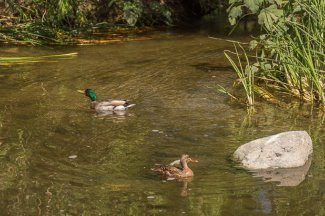
For two years, summertime kayaking on the L.A. River was offered at the Sepulveda Basin area and kayak organizers there seeing kayak opportunities in the Elysian Valley section of the river.
“The first year we had a few hundred people, but once people realized what we were doing, we sold out tours that second year,” says George Wolfe of L.A. River Expeditions. “Between our group and Paddle the L.A. River [another kayaking organization], we had close to 3,000 people kayaking on the river last summer.”
For Wolfe, exploring the Glendale Narrows section of the river will be a treat because of the moving water. “It’s going to be sportier and not just flat water,” he says describing most of the run at Sepulveda.
“This will have more rifts and rapids with more obstacles. It’s going to be a longer ride also. I think people are going to love this,” says Wolfe. “It’s going to be a lot of fun and a great way to spend a summer day.”
Wolfe’s experiences at Sepulveda Basin parallels the build-up to opening day, with community members worrying that the river program would bring in more traffic, trash and parking problems. “We did encounter a bit of NIMBY but we sought to find a way to make a solution to make everyone happy.”
The Mountain Recreation and Conservation Authority (MRCA) – the organization administering the Glendale Narrows pilot program in cooperation with city and county of Los Angeles, the Los Angeles County Flood Control District and the Army Corps of Engineers – has, in Wolfe’s opinion, been very “sensitive to the issues of safety and security [in Elysian Valley]. In the end, this program can only be a boon to the area.”
In addition to potentially more traffic in the area, Elysian Valley residents are dismayed that dog walking down by the river won’t be permitted in the recreation zone during the pilot program. “People will still be able to take their dogs alongside the bike path and into the parks,” says Fernando Gomez, chief ranger for the MRCA. “But we can’t have them bring the dogs into the water or five feet of it.”
Gomez says that the MRCA will be monitoring the recreation zone from sunup to sundown daily once it is opened to the public. One MRCA ranger as well as up to a dozen MRCA volunteers will be on patrol duty either on foot, bike or boat. “The LAPD will have the initial authority and city police will respond to any calls, but we will also be on hand to assist if necessary,” he says.

The extra security should be welcomed in the neighborhood where recently a biker was attacked on the bike path.
Still, the question remains: Will Anyone Kayak the River?
“Everyone that I know is excited about it,” says Steven Appleton, president of the Elysian Valley Riverside Neighborhood Council who, along with being a professional artist, will soon be adding kayak guide to his resume.
Appleton, along with fellow Elysian Valleyite Grove Pashley, will be leading L.A. River Safari kayak tours, an operation that will give Appleton a chance to introduce people to the history, nature and community of his neighborhood. “There are some places in the river you really have no idea you are near downtown L.A. Herons, egrets, carp jumping up. It’s mind-boggling.”
Appleton intends on employing and training local youth to help with the operation. In addition, he plans on reaching out to community and youth groups, offering them river trips at reduced rates. (Both L.A. River Expeditions and L.A. River Safari trips will run about $60-$70 per person.)
Both vendors will employ a novel way for kayakers to return to their parked cars at Rattlesnake Park. Once they are back on land at Confluence Park, participants will jump on bicycles and cruise the river route from a different perspective.
All in all, opening day of the recreation zone will write a new chapter in the continuing saga of the L.A. River.
Like many, Appleton is an optimist that a river experience can be radically energizing.
“I think once we bring people to the river and show them what it is, they will fall in love with it,” he says. “It really can be a river for all of us.”
Click here for more information about the L.A. River Pilot Recreation Zone.





Brenda Rees is a writer and resident of Eagle Rock. Martha Benedict is a photographer and resident of Montecito Heights
Reptile Hunting at Malibu Creek, SoCalWild, May 2013
It’s not every day you get to watch two grown men wrestle a young Southern Pacific rattlesnake from its hiding place underneath a pile of sticks into a Plexiglas tube.
All in the name of education – and with a certain amount of scientific machismo – Drs. Robert Espinoza and Greg Pauly held up the anxious and finally squeezed-in reptile to the gaggle of folks who had joined these two for a Lizard Walk in Malibu Creek State Park.
“Stand back and get in line,” they directed as youngsters and oldsters obeyed. After all, who wouldn’t want to touch the rattle end of a wild, just-caught rattlesnake? This was no ordinary traveling reptile show that you’d find visiting libraries or first grade classes. No, this was a nature in nature experience.
A program from the Natural History Museum, this family-friendly trek got kids squealing with delight as some adults shirked back, happy to let the little ones go first, get close and touch whatever critter was discovered. And a LOT was discovered on this half-mile trail.
In fact, the regular hikers and outdoor folk who were enjoying the trails around the popular park probably didn’t realize the reptile potential that lurked underfoot and just a stone’s throw away from their….feet. If you’re not looking for wildlife, you probably would have missed it slither, zip and zoom away.
The outdoor excursion started off on a high note: young Andrew procured a Western yellow-bellied racer snake, a reptile not often seen in the area. (“Wow, I don’t remember the last time we found one here,” said Espinoza.) In fact, fearless Andrew was the star of the morning also catching more than his share of beasties.
Other young snake wranglers-in-training were not as lucky as Andrew whose mother confessed that she probably will have to buy him a snake stick (long pole with a flipped end to catch slippery snakes) to encourage his uncanny reptile connection.
Since it was an overcast and cool morning, reptiles were not out basking – which meant more digging for lizard lookers. It seemed critters were found…well, everywhere.
Side blotched lizards were acquired from a hole near an open space; a Western skink was lifted from a pile of rocks; an extremely large Western fence lizard (male with a bright blue belly) was caught hiding under a pile of logs; and a California king snake was peacefully enjoying his stack of sticks before being presented to the group. (All reptiles were released back where they were found – much to the dismay of many youngsters who wanted to hold and/or take the treasured critters back home.)
The only common SoCal lizard not found was an alligator lizard. Newts, said our lizard leaders, used to be plentiful in the area, but aren’t typically found anymore in the Santa Monica Mountains anymore. Introduced crayfish and bullfrogs found newt eggs a delicacy. The newts have moved on.
As kids perfected the rock flipping (“Make sure you flip the rock in front of you; you don’t want some thing to run into your legs!” was the instruction that most kids forget in their zeal of discovery), parents were thrilled to have pro biologists validate their child’s fascination with reptiles (“You should see what his/her room looks like”).
And just as the group was walking back to the parking lot, there as if on cue, the rattler was discovered. Espinoza and Pauly channeled their inner Steve Irwin as they carefully grappled the annoyed snake into the show tube with rattle end exposed.
Sure the kids lined up first to touch the dry rattle (who learned it made up of hollow keratin segments), but the adults were there as well – even some adults not part of the group but who witnessed the earlier wrestling match and just had to see the temporarily restrained snake for themselves.
After the snake was released back into its home territory and the walk officially ended, many parents were still wrangling their kids who continued to search, hunt and turn over rocks and logs. “He’d stay here all day,” said Andrew’s mom, who while watching her intent and determined boy. She was probably was imagining that one day her son would be leading such an expedition of his own with a new flock of eager-eyed, reptile-crazed youngsters. Yup, it could happen…
– Story by Brenda Rees – Photographs by Martha Benedict
Walk This Way, Arroyo Monthly, April 2013
Whether competitive or social, walking brings seniors health, wealth and sunshine.
By Brenda Rees
It’s a cool brisk Saturday morning and Maggie Ritchie, 57, is warming up with the Pasadena Pacers, a group of runners who meet weekly for training and communal runs in and around the Rose Bowl and nearby Arroyo. Ritchie, however, isn’t joining the marathon, 10-mile challenge or other fast-moving groups. She’s making a 5-mile journey into the Arroyo with the walkers, a small band of Pacers who want the outdoor exercise and camaraderie without the running.
Ritchie started the exercise with her husband Dave in 2006 when he weighed 325 pounds (“We tried to get him on the Biggest Loser, but that didn’t happen”). Back then, the Sunland couple routinely walked the Rose Bowl loop “every chance we could.” Dave eventually dropped the weight (diet played a big part) and then was bit by the running bug. Today, he does Iron Man marathons among other grueling races. Ritchie, too, likes the thrill of competition, but prefers to enroll in the walking categories now found on most 5Ks, 10Ks and even marathons. “I like walking. You get to see more, check out the scenery and I love moving outside,” she says as she hikes up a dirt path to an overview of the creek bed where a few mallards splash. “I hate seeing seniors not moving. I want to keep doing this when I’m 90.”
Ritchie may get her wish. More seniors are lacing up their walking shoes to hit the sidewalks, pathways and trails – in doing so, they are potentially reducing risks of some diseases, increasing vitality and maybe even extending their lives.
Walking, as a prime source of exercise for older folk, is on an upward trend. According to a CDC National Health Survey, which compared walkers in 2005 to 2010, the number of 45-64 year old walkers increased from 55.6 to 62.2 percent. Walkers 65 and older rose from 50 percent to 53.7 percent in the same time period.
In addition, the survey also shows a steady upswing over the years of walkers with chronic conditions such as hypertension, arthritis and diabetes – all conditions that have been found to diminished symptoms with regular walking programs.
Incidentally, a recent study by professors at the University of Pittsburg showed that walking may slow the progression of Alzheimer’s disease. “Walking is one of the best forms of exercise and is what your body was designed to do,” says Dr. Andrew Weil, internationally known health expert in the field of integrative medicine.
This month, Weil kicks off National Walking Day on April 3 with his 2013 Walkabout, a 28-day campaign to encourage walking each day for 30 minutes (sign up on at weilbeing.com/2013-walkabout-signup).
Walking is the ultimate no-brainer continues Weil. “You can walk almost anywhere, any time and there is no special skill, training, or equipment needed – all you need is the right footwear,” he says (see sidebar on the best way to buy walking shoes). “Importantly for seniors, among all forms of aerobic exercise, walking carries the least risk of injury.”
While walking can be done anywhere from neighborhood parks to indoor malls, walking outdoors, however, seems to hold the most long-lasting inspiration. A recent study from International Journal of Behavioral Nutrition and Physical Activity, show that older adults who engage in physical outdoor activity—including walking – exercised longer and more often that those working out indoors. Nature trumps again.
Walking is also a brain exercise, according to Tom Strafaci, a physical therapist/personal trainer with offices in Arcadia and Pasadena, who often presents physical fitness programs to the community in conjunction with Huntington Hospital. “Eyes, ears and feet working together. Depth perception. The brain loves making those connections when we walk,” he says. “So many seniors are afraid to walk because of their balance, but it’s the best thing to do for balance.” In fact, says Strafaci, the act of walking – swinging arms, moving in a rhythm, breathing in and out – helps the brain create new pathways and connections. “When people say their minds feel clearer after a walk, there is a biological reason for it,” he says.
Motivation 101 or How To Make it a Habit
Despite the near-miraculous claims of walking – and the latest study out of Harvard Medical School which indicates that lack of physical activity kills as many people as smoking in this country – seniors still have countless reasons why they won’t embrace the exercise.
“Inertia is a powerful force, we like to continue the way that we’ve been,” explains Weil adding that mental and emotional factors often keep seniors on the couch. “If people are depressed, the last thing they feel like doing is moving, even though that activity is probably what would most benefit them. Perceived lack of time is also another excuse that prevents people from walking.”
“I think I’ve heard every excuse in the book,” agrees Dr. Alice Lacy, an Arcadia internist who primarily treats elderly patients. “’The weather is too cold,’ ‘My back hurts,’ ‘I get plenty of other exercise.’ ‘I don’t want to fall down.’ You name it, I’ve heard it.”
Lacy says she’s constantly drumming facts and exercise benefits to her senior patients – some eventually respond, some never do. Lacy talks about a diabetic patient who lost 40 pounds after starting a walking program. “She was concerned for her blood pressure and her knees hurt her so bad,” says Lacy. “We got walking poles to help give her a sense of balance and coordination. That was three years ago and she still walks – no poles anymore. And I have reduced her blood pressure medicine, too. All because of her walking.”
Lacy highly recommends reluctant walkers find a partner so walking is social as well as physical. “If someone comes and knocks on your door and says, ‘Hey, let’s go for our walk,’ you might get up off that chair,” she says.
Motivation was a little trickier for Tom Mawhinney, 83 of Eagle Rock. After his left knee was replaced more than a decade ago, his doctor told him to start using it. “I don’t like walking,” he admits even though wife Jean, 80, has been a regular walker since 1983. “She makes me feel guilty if I don’t go with her.”
Mawhinney, however, discovered that walking his quiet tree-lined Eagle Rock neighborhood certainly had its payoffs – in feline form. Now known as “the Cat Man” in his ‘hood, Mawhinney always goes on his 30-minute walk with a bag of cat treats. “I used to have five cats, now I’m down to two, maybe they’ll be more one day,” he says during a routine afternoon walk. He stops by a house on the corner. Shaking his bag of treats, he hollers, “Mimi! Mimi!” and right on cue, out comes a handsome orange and white feline looking for a prize. Cat owners smile and wave at the couple. “I don’t mind walking so much now because of the cats,” says Mawhinney. “Walking wouldn’t be as much fun without them.”
Is Walking Enough?
For all the wonders of walking, there are things it just cannot do. “Walking is a great cardiovascular exercise that takes care of senior’s endurance, but older adults need to strength train muscles,” says Elaine Cress, a professor of kinesiology and researcher in the University of Georgia Institute of Gerontology.
Indeed, the CDC in 2008 recommended that seniors pick up weights or resistance bands at least three times a week. “Walking doesn’t work the front of the leg or the bootie muscles,” says Cress who explains that as people age they lose muscle mass. Strength, along with endurance and flexibility, are keys to keeping bodies – especially seniors – working at top potential.
Cress has heard complaints from seniors when she tells them to add weights to their regiment, but she counters. “Because of longevity we now are living a full five hours a day more, we are living 29-hour-days,” she says. “You have the time. You just have to bite the bullet and find how to incorporate weights into your life. I think the greatest bargain, personally, is the YMCA.”
However seniors add weights into their day, Cress stresses not to include them in their walking. “I see walkers with ankle weights or weights strapped to arms or wrists and they are just terrible,” she says. “You can damage your knees, counter balance yourself and wreck shoulders. Don’t use them on walks. Never.”
Personal trainer Strafaci also recommends seniors shouldn’t walk with Fido. Dogs could bolt, there could be a conflict with another dog which could put an older person off-balance. “You also can’t walk effectively, moving your arms back and forth, when you are holding a leash,” he says.
Finally, even though you burn extra calories walking, walking shouldn’t be viewed as weight loss just by itself, adds Strafaci. “People shouldn’t expect to melt off weight just by walking,” he says. When people “get into the exercise habit” he says, they naturally start eating better which will ultimately drop the extra weight.
Make no mistake, stresses Strafaci. The plusses of walking are tremendous – coordination, energy and a life of less pain.
Back on the trail, Ritchie is nearing the end of her morning walk. She thinks about an upcoming race and then remembers the first time she walked in competition – she completed the Los Angeles Rock and Roll Marathon when she was 55 years old. On her birthday.
“I love having something to look forward to, like a race. Gets me motivated to keep walking,” she says. “I can’t think of a day when I didn’t enjoy my walk.”
SIDEBAR
Putting Your Best Food Forward
When it comes to selecting the right walking shoes, don’t be a Frankenstein or a Marie Antoinette. Newbies often think they need big heavy heels or an ultra-cushiony inside for their sidewalk forays. Big mistake.
According to a study by the American Podiatric Medical Association (APMA), 72 percent of Americans say that foot pain prevents them from exercising, says health expert Dr. Andrew Weil. “Without proper footwear walking can be painful, making it difficult to maintain an active lifestyle,” he says. Good shoes can help reluctant walkers stand up and start moving.
Finding the perfect shoe is all a matter of arches, explains Mike Gonzalez, manager of Run With Us, a Pasadena athletic shoe store that’s been around for 13 years. “The first thing we do is watch how a customer walks, that tells us how high or low their arches are,” he says. “People with flat feet can put extra stress on their knees which can travel to their lower back if they aren’t wearing the right shoes.”
Walking shoes need to be light and flexible – and that notion can go against the grain for some seniors who think they need sturdy, thick shoes. “Today’s shoes use materials that create a lighter shoe without losing the integrity of the structure. They reduce weight without sacrificing support.”
Take a look at the shoe in consideration. Is the heel half the size of the running shoes? Does it easily bend in the forefoot (not middle)? Does it feel light but solid? All hallmarks of a good shoe. “Most of our walkers choose running shoes because running shoes are created for so many foot types,” says Gonzalez. “They are light and help feet breathe.”
Not only do feet breathe, they can also swell up when you’re out for a 30 minute neighborhood jaunt. That’s why Gonzalez recommends folks “size it up” and buy a walking shoe that is ½ to a full size bigger than they usually wear.
Socks are also important to walkers – make sure they are synthetic says Gonzalez. Cotton will hold moisture and who wants sticky, wet feet? In addition to a wide variety of synthetic socks, the store also sells loose knit socks specifically designed for diabetics.
All in all, expect to pay $95-$150 for a good pair of walking shoes. Walking shoes, if used regularly, can last from 6 to 8 months. Gonzalez says walkers will know when it’s time to get a new pair by paying attention to their bodies. “You’ll discover a new ache or a pain that you never had before, that’s a good indication your shoes aren’t supporting you,” he says.
Wildlife – Present and Absent – at the Sepulveda Basin, SoCalWild, April 2013
About four months after the Army Corps of Engineers ripped apart 48 acres of the Sepulveda BasinWildlife Area in the San Fernando Valley, wildlife continues to surprise and amaze – even though the absence of so many birds, mammals, reptiles and amphibians still serves as a reminder that nothing in this life is ever a sure thing.
I took a recent bird walk through the North and South Reserves of the wildlife area led by Kris Ohlenkamp from the San Fernando Valley Audubon Society who, for more than 30 years, has guided monthly excursions for seasoned birders and newbies like me. (Next bird hike is slated for May 5, 2013. Click for details.)
From the moment we set foot in the North Reserve, we see birds flittering, fluttering and flapping everywhere. White crowned sparrows on the ground, yellow-rumped warblers belting out tunes on a sycamore. Is that an Allen’s or a rufous hummingbird on that branch? My fellow birders thumb through well-used books to answer each other. Half of the fun of birding, it seems, is discovering what bird it was that you actually saw or heard.
We wander through the riparian and woodland areas of this natural place that was designated in the 1970s and then later developed in the 1980s with help from Audubon and the Native Plant Society. Towering hedges of wild roses flank our pathway that runs parallel to Haskell Creek, an original tributary of the Los Angeles River.
A large “Mr. Big” birder announces, “Hey, aren’t we near where the mythical cardinal lives?” Ohlenkamp agrees but adds that it hasn’t been seen in a while, and usually folks spy that red-feathered wonder earlier in the day. In other words, don’t get your hopes up, fella.
We wander to a pond and an island where large birds preen and perch on tall trees. Red-winged blackbirds, grackles, green herons and other shorebirds cavort in the tall grasses, cattails and reeds at the pond’s edge. The cacophony of tweets, chirps, songs and trills often drowns out the sounds of the nearby freeway. IT’S LOUD. What? LOUD.
Ohlenkamp gets an osprey in his scope followed by a kestrel. Both seem to strike a pose for us as we peer at them. “Well, we are in Los Angeles after all,” someone jokes.
Then, right on cue, someone points up and gasps, “the cardinal…here!” Sure enough, high in the sycamore that deep red, pointy crest cardinal was watching us check out his bird cousins. A flurry of camera clicks and then…he was gone. (As luck would have it, Mr. Big birder failed to get a glimpse of the famed cardinal. Next time, buddy.)
Our wanderings in the North Reserve end at a darken tunnel which leads us to the South Reserve – the scene of the crime, as it were. Ohlenkamp prepares us for what we will see once we step out into the light.
The landscape change is dramatic. The near claustrophobic thickness of plant life in the north yields to an agoraphobic expansiveness of 48 acres of tree stumps, dirt mounds and wood piles. Only tall native oaks and cottonwood remain along with a stand of non-native eucalyptus. I could tell the wound is still fresh for Ohlenkamp and many local birders. It’s hard to look at the space after just experiencing a rich, noisy, lush land, only steps away.
Yes, a lack of noise. It was oddly quiet here…probably because so many birds are gone, having lost their nesting, hiding, perching and food sources. Residents and migrants will not be nesting here this year, Ohlenkamp tells us. And probably for several years to come.
“California thrashers were an abundant all-year resident of the South Reserve and they have been extirpated, just prior to their breeding season,” he says. They have not been seen here since January. The South Reserve was also nesting home to the endangered least Bell’s vireo that has gone incognito as well.
It’s hard to say specifically what else besides birds were displaced when numerous native willows, mule fat, coyote brush and elderberry trees were destroyed. No official records were kept as to a wildlife list, although an appendix to an Army Corp document lists 35 birds as common (experts say more than 200 birds species have been seen here) and only four mammals – coyote, squirrel, skunk and raccoon – but they didn’t count rabbits which we saw on our walk. No mention of reptiles, amphibians or even insects that for sure were here at one time.
Ohlenkamp points to an area for a proposed pond, lake and winter seasonal marsh, all part of the original 1981 Master Plan for the South Reserve. The 7-acre lake was previously dug but never filled with water.
In fact, it’s that original Master Plan that Audubon, along with other community groups (Sierra Club, California Native Plant Society, Sepulveda Basin Wildlife Areas Steering Committee and Encino Neighborhood Council) wants to see reinstated and used as the template to restore this section.
A meeting of those groups with the Army Corps is slated for April 23, 2013 and Ohlenkamp says he’s pretty confident that the Corps will adopt that original Master Plan. “Even so, it probably will be five years before this space is back to what it was just months ago,” he says.
Along the path to the confluence of Haskell Creek to the LA River, birders discuss the ramifications. Some think of the good that will come from this. One woman says that this tragic episode brought together community groups that normally wouldn’t know each other. That Master Plan is now high priority whereas it wasn’t just months ago.
Part of the proposed new plan would also target three species of birds (greater yellowlegs, white-faced ibis and blue-winged teal) to act as “indicator species” – canaries in the coal mine, as it were – to physically represent how the South Reserve is ecologically faring. These three birds have all been seen in the basin – as recent as this month – but not in the South Reserve. It will be a celebratory day when those flappers decide to “set up shop” and start to reclaim the area.
We head down to the merging waterways with the Sepulveda Dam framing our horizon. We watch sandpipers, killdeers and black neck stilts poking through the riverbeds. A group of coots confer with each other in the middle of the river. Three stilts rise up and zoom with break-neck precision over the water.
“Maybe it’s a good thing this happened,” one birder suggests. “Now people will pay better attention.”
Well, time is the great healer, but more than likely, time won’t erase every trace of misunderstanding and miscommunication that resulted in this man-made destruction and death of so much plant and wildlife…and maybe it shouldn’t.
– Brenda Rees, editor
– All photos by Martha Benedict (c)
Sheeper Peepers: Looking for Big Horn Sheep, SoCalWild, March 2013
Channelle Davis was trying her best, but I was getting nervous. The wildlife biologist with the Department of Fish and Wildlife was giving us newbies a crash course in how to identify big horn sheep, particularly the delicate differences between the young males and the females.
It’s all about the horn size, Channelle told us, as she posted slides up at the Forest Service Headquarters in Arcadia on a Saturday night. How far the horn curls around the animal’s head determines if it’s a class one, two, three or four. I was guessing three instead of a four, one instead of a two. Oh, how was I ever going to accurately do my job the next day? I didn’t want to fail…
Along with about a hundred or so fellow volunteers, I was getting an overview of a herd of big horned sheep that call the San Gabriel Mountains their home. This workshop would prepare us for the annual Big Horn Sheep Survey that has been taking place since the 1980s. Citizen volunteers trained in spotting and categorizing the hoofed mammal, help biologists learn more about the herd that has a mountain top view of Azusa, Rancho Cucamonga, Duarte and other eastern San Gabriel suburbs. Often helicopter counts are held in conjunction with ground counts – but not this year.
We volunteers were pumped up with information (“Rams can be as large as 300 pounds,” “They only eat grasses and shrubs”) but the most interesting facts was the herd had been as big as 700 in the 1980s. A big crash in sheep numbers from 1986-1993 brought the herd to dangerous low numbers of 100 or so. Since then, sheep population has been on the upswing every year. Last year, the estimate was 418. (2013 numbers will be soon available. Watch this spot for updates!)
The reason for the decline and upswing? Old growth and fire, we were told. In the late 80s, the hills and mountain tops were getting too thick with vegetation, making it hard for the big horns to move around, let alone reproduce and care for young. With the fire of 2003, the area was cleared out, new growth came and with that, higher numbers of sheep. As strange as it seems, fires can be great for wildlife.
We sheep spotters also learned that we may see collared sheep, big horns that are part of an on-going research project. More than 60 were collared in 2006 – about 14 still have radio-activated collars.
Before the workshop concluded, we signed up for our research group locations. Did I want to scramble over boulders, hike through streams or blaze through thickets? Naw, I wimped out and opted for the relatively “easy” location off Highway 39 near Crystal Lake. Six viewing sites were available on a three-mile paved road, not used anymore by the public. Yeah, I wasn’t ready to do the Hard-Core Get-Up-At-Crack-Of-Dawn-Loaded-Down-With-Gear-And-Hike-For-Hours route. Not this year, anyway.
Next morning, driving up to the location, I saw snow in the distant mountain tops. Little did I realize that the temperature conundrum I was about to enter. Sure it’s 80 degrees down in the basin…but up near 5,500 feet, life is completely different.
Arriving at our rendezvous point, big chunks of snow lined the side of the road. A fierce Santa Ana wind was blowing, swirling snow crystals up and around. The higher we walked up the road, the stronger the wind blew nearly knocking us off our feet.
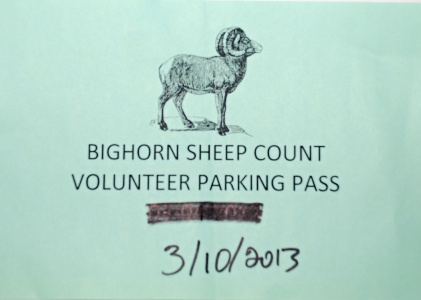
The recent snow, we were told, may give us peepers an advantage. Snow at higher elevations should bring the sheep down to hunt for food. But we soon learned that blowing, below-freezing wind would just keep the sheep in our area hunkered down and immobile. I imagine them snuggling together, reading a good book with a cup of hot chocolate. (“No scampering for us today!”)
Still, trained sheep spotters were here and we had to try. I opted to join Group Number Three about two miles up the road, a spot where historically sheep have been recorded. I stomped through snow piles in my tennis shoes to find a rocky overlook where I placed my foamy garden kneeling mat and was set for spotting action.
The wind was torrential, but I was up for the challenge. Binoculars in hand, I scanned the hills, the bushes, the brush, the erosion lines of the surrounding landscape. I looked for white rumps, long legs or anything that moved. Alas, in the hour I sat there, I only witnessed a car moving up on Highway 2.
I kept imagining the moment when I would see a small group emerge from underneath a grove of Coulter pines. I envisioned me grandiosely recording the number, accurately categorizing the males with no hesitation and then, and then, even spying a lamb. I thought if I imagined it hard enough, I could will it to happen. No such luck.
After more than an hour, I attempted to eat my lunch, but because of the bitter wind, I didn’t want to take off my gloves. I regrouped with my fellow sheep-less peepers and we finally decided to head back down.
And that’s when it happened.
Group Two was packing up their site, when one volunteer thought she’d scan the nearby hill one more time. As we approached, we heard her joy in discovering a small herd. My camera and binoculars were around my neck and, Halleluiah, I spotted them, too. Far off in the distance, they effortlessly moved over a thick rock slab and wandered between trees. Three rams, I saw, but more were out there. “I counted eight,” said someone. “I counted 10,” said another. “I just saw wild sheep!” I told myself.
I was overjoyed on the ride back down and the rest of the day. Later, I heard from Chanelle Davis that her group saw sheep right near their rendezvous location. Sheep were everywhere at her location…and no blowing snow‼! “We just looked up and there they were!” she said. “Don’t rub it in,” I told her. Of course, she had to gloat and sent me photos from her excursion. Show-off.
Still, as Chanelle and I talked, I realized that even though I didn’t hit a mother lode of sheep my first time out, the experience reinforced the notion that wildlife is everywhere around us in Southern California. Maybe as I was sitting there in the freezing wind, a sheep was observing me from a high perk. We humans just need to sit still more and observe.
Yes, there is something to be said for being in the quiet of nature, even when the wind whistles through the pine branches and stings your face. You know what nature is saying? I’ll tell you what nature is saying: “Where is your scarf, you big dope? Don’t you know it’s cold up here? What an idiot….”
That said, yeah, I probably will sign up for the survey next year. I mean, come on. Nature can’t certainly have the last laugh, can she?
To register for the next big horn sheep survey, visit here.
Record Number of Cal Sea Lions Need Help, SoCalWild, Feb. 2013
They have loose, rolling skin and their ribs show through their tiny brown bodies. There is a glaze in their large round eyes. When they flop or lay down on the cement dry areas, it’s not the normal lounging that healthy California sea lions typically do for hours on end. Even their whiskers seem droopy. These pups are sick.
What’s more is there are a record number of sick pups this year. The biggest number in 20 years. Officials at the Marine Mammal Care Center in San Pedro say that the number of emaciated and dehydrated young sea lions is at the highest it’s recorded for 20 years for this time of year. Usually in January, the center receives maybe 11 or so strandings but so far, the center has admitted more than 60…and counting. (UPDATE: As of Feb. 11, 2013 the center has received more than 100 pups.)
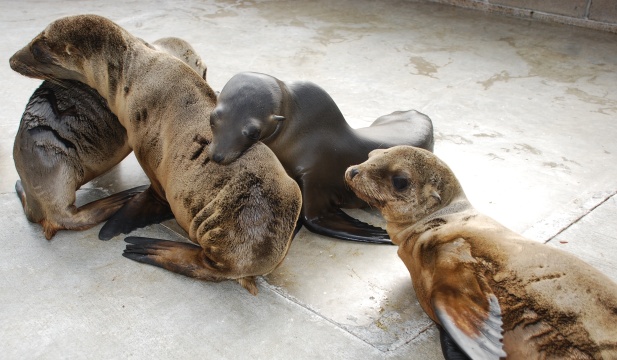 The Marine Mammal Care Center has never seen this many sick Cal seal lions at this time of year. (photo: Brenda Rees)
The Marine Mammal Care Center has never seen this many sick Cal seal lions at this time of year. (photo: Brenda Rees)
The staff, including an extensive volunteer organization, has been working overtime to care for and fatten up these normally active pinnipeds so they can return to the ocean. But the center’s enclosures are getting full and every day it seems, another thin and confused sea lion is brought in.
“We estimate that most of these pups are about 8 months old,” says David Bard, director of operations. “We really aren’t sure why we are seeing so many now. Usually January is a relatively quiet time for us. This has taken us all by surprise.”
Indeed, officials gave the go-ahead to start an extensive revamping of the center’s drainage system last month considering January is “downtime.” That’s all been put on hold since staff and volunteers are working round the clock to assess, treat and care for the skinny pups.
There are many theories as to what is causing so many malnourished young sea lions, but overall, scientists are stumped.
“We currently do not know the reasons for the poor condition of California sea lion pups,” says Sharon Melin, research biologist for NOAA currently based in Seattle, WA.
It could be a few factors or a combination. “Starving pups at this time of year usually means that the mothers are having trouble finding enough food to support the energetic cost of lactation,” says Melin. “It could also mean that mothers are dying from disease…but we do not have evidence that suggests this is occurring.”
Melin and fellow scientists are currently sampling dead and live pups to see if there are anything unusual that would explain low weights and the poor condition of the pups.
Another factor maybe the warmer-than-normal sea surface temperature that took place in Southern California in the fall of 2012. Warm temps could have relocated sea lion prey so mama sea lions were struggling to find food and produce milk. “At this time of year (February), most pups are not weaned completely and are still largely dependent on their mothers for nutrition,” she says.
Back at the noisy and bustling care center, healthier pups (ones who have been at the center the longest) are frolicking in a pool, barking and snapping at one another in true sea lion form. Others are draped protectively over their buddies as they sprawl on the sidelines. This wildly active scene is a sharp contrast to the nearby weak pups that still look, for lack of a better word, shell-shocked.
“[The sick pups]seem to be responding to the food and the medication,” says Dr. Lauren Palmer, on-staff vet, who along with Bard and the volunteers are hopeful they can weather the storm of sick pups. “So far, we have lost very few of them. That is encouraging.”
Indeed, Bard explains that the mandate of the Marine Mammal Care Center is to accept any sick or injured marine mammal found in the boundaries of Los Angeles County. “We are prepping in the back of our heads for the ‘worst case scenario’ if this condition still persists,” he says. “We’re taking it day by day.”
As a non-profit, the Marine Mammal Care Center relies on public donations for financial support. They also have a wish list of items that can be dropped off for use at the facility. Household bleach, safflower oil with vitamin E, bottled water and other items listed here are greatly appreciated.
The center is also opened for tours and school visits. Call to schedule a tour or to get more information.
Burbank Mountain Lions…One Year Later, SoCalWild, Jan. 2013
They were once malnourished, fearful and full of parasites, but now these former SoCal two mountain lion cubs have grown into strapping young cats ready for the world ahead of them, a world that doesn’t involved being poked at with sticks by strangers on the streets of Burbank.
Found in December of 2011 under a parked car in Burbank (where residents were thrusting broomsticks at them to shoo them away), this feline duo “was rescued just in the nick of time,” says curator Katelyn Cottle of Zoo to You, a conservation educational facility in Paso Robles.
The young cats were first brought to the California Wildlife Center in Calabasas for medical care and evaluation before they were transported to Zoo to You. Wildlife experts agreed that such young cats were not good candidates to be released back into the wild because they haven’t been properly trained to hunt and they’ve been overexposed to human contact. Where was their mother? Why were they alone? Hard to say…
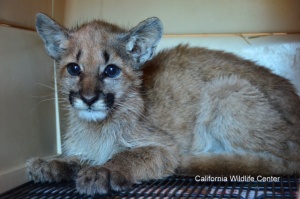 Olive and her brother Leno were rescued in the “nick of time.” Photo couresty of the California Wildlife Center.
Olive and her brother Leno were rescued in the “nick of time.” Photo couresty of the California Wildlife Center.The 3-month old cubs were only 9 and 11 pounds when they arrived at the facility a little more than a year ago. Now, they are packing in between 75 -80 pounds, a more adequate weight for carnivorous cats.
They were first named Olive and Magnolia (Burbank streets, dontcah know) until it was discovered that Magnolia was a boy. Now known as Olive and Leno (yes, after Jay Leno whose Tonight Show tapes in beautiful downtown Burbank), the not-so-cubby cats spend a good chunk of their days working with trainers and resolving trust issues. It’s hoped the duo will become traveling educational ambassadors, taking the mantel from the facilities’ two other “elderly” cougars that are 15 years old.
Training is “a long process and with large cats, we usually start when they are only a few days or weeks old,” explains Cottle. “With these cubs being three months old, we are working through a lot of fears they have – fear of being killed, being eaten, starving. These two still have that ‘fight’ in them, but we are making very good progress.”
Consider the plight of the three trainers who work with the cats – everything is positive reinforcement which means praising and acknowledging good behavior and totally ignoring bad behavior. “So when the cats, claw or bite you, you just have to ignore it. You can’t react when they do that,” says Cottle. “That can be really hard to do when they are in attack mode.” Soon, the cats will realize they aren’t “getting a rise” out of the human and decide to do something else…something that may get them a treat or other goodies.
Scientists have DNAed the duo’s mother and father as part of a small contingency of mountain lions that live in and around the Verdugo Mountains near Burbank. Camera traps in that area snap and record wildlife; researchers were excited about a video recorded only a few weeks before the cubs were discovered in Burbank. They thought the images were of the brother sister pair.
But, it turns out, that video captured yet but another pair of cubs foraging the hillsides. “Scientists were just blown away by that,” says Cottle. “It just goes to show that wildlife is right here in our own backyard.”
Olive and Leno’s journey is the subject of a documentary crew which is using the cat’s story to illustrate the bigger picture of mountain lions living in and around dense urban areas, like Los Angeles. (See sidebar on David Elkins and Elkins Eye Visuals.)
The Department of Fish and Game (DFG) estimates that there are between 4,000 – 6,000 mountain lions in California; they are not endangered, but they’re considered a “specially protected species” and cannot be hunted.
Mountain lions are the ultimate boogie-man of urban predators. They are painted as the vicious creatures that stalk the shadows for hikers on the trail, children in playgrounds, old people at the bus stop, or pampered pets in backyards.
However, a DFG record of mountain lion attacks in the state of California reveals that since 1890, only seven people were killed by mountain lions and 16 nonfatal incidents were reported. Yes, you are more likely to hit by lightning twice then be attacked by a mountain lion.
Mountain lions are not the blood-hungry cat of our collective human nightmare; in truth they are solitary hunters, elusive and shy. They don’t hang out in prides and only meet up with others of their kind for mating. They want to be left alone and far away from humans as possible.
Still urban and rural folk need constant reminders that the big cat is not their enemy. The folks at Zoo to You are sure these two mountain lions – which have garnered a lot of public sympathy and local fame – offer a unique chance for conservation education. Anyone can see the pair when they visit the center which is only a few hours away from the Los Angeles area.
Having a pair of wild cats with a dramatic backstory may soften the hardest of hearts and allow their real identity of the mountain lion to shine through the fear.
Cottle says that Zoo 2 You often brings animals to the Tonight Show to interact with Jay Leno. It would be the perfect ending to the Hollywood story if Olive and Leno could travel back to Burbank, meet their namesake and help the cause of mountain lions everywhere. “It would be just the best,” she says. “We would love to see that happen. Really. It would be just the best.”
Lettuce Office Profile, The Eastsider LA, January 2013
Michael Chung (left), Kara Bartelt and Nicolas Saez of Lettuce Office/Photo courtesy Lettuce Office
A unique project such as Occidental College’s solar array needed a unique design team, which the school found with Lettuce Office, a small firm comprised of three principals, two whom live in Highland Park.
Kara Bartelt and husband Michael Chung started Lettuce in 2004 with offices in Hollywood; they have since moved to downtown Los Angeles and added a third partner, Nico Saez. Bartelt and Chung have lived in Highland Park since 2006, having moved into the area because of “the great community and plenty of historic houses. We love seeing all the families walking their kids to school, too.”
The team jumped on the chance to create new thinking for Oxy’s installation of ground-based solar panels rather than the utilitarian designs that are typical for large scale solar projects. Bartelt, an adjunct associate professor at USC’s School of Architecture, is fascinated on the integration of technology and architecture in the environment.
“For us, this [project] was a perfect example of that blending,” she says.
First and foremost, the team wanted the design to be pleasing to the eye from whatever direction it was viewed. After the swooping curve pattern was approved, they painstakingly created intricate renderings and canvassed various neighborhoods to see how the finished product would be seen. That hard work is paying off, thinks Bartelt.

While some of the more than 5,000 panels are installed above a canopy over a campus parking lot, the most eye-catching element of the Occidental array will be the panels that are mounted two to three feet above the ground and hug the topography a hillside in a curving design based on a hysteresis loop, a mathematical expression that describes the result of an alternating magnetic field applied to ferromagnetic material.
“Just the other day, I came up Ave 49 from York and had a good view of it,” she says. “It’s not a typical array; it’s more art than array.”
Involved in the project for now three years, the team meets at the construction site every two weeks to make sure that the 20 x 30 foot panels are being installed according to plans. Joining them is Oxy’s Professor of Physics Daniel Snowden-Ifft, who has been involved in the project nearly since its beginnings.
“We have walkie talkies and go back and forth saying, ‘Tilt it to the left a bit, now up, to the right,’” says Bartelt about getting the angles just right.
Right now, the firm is active in residential and business designs as well as graphics for branding and marketing. While the Oxy solar array is scheduled to be completed this spring, Bartelt says the team would welcome more solar projects.
“It doesn’t take much to make a big impact,” she says. “I can’t wait to when that final panel is placed and it’s all done.”
Oxy Solar Array, The Eastsider LA, Jan. 2013
(Photo courtesy of Occidental College)
Occidental College prepares to plug in to solar power
By Brenda Rees
After experiencing a series of setbacks to the initial schedule, the $6.8 million 1-megawatt solar array at Occidental College continues to move ahead with the plan to have the entire project plugged-in, hooked up and generating power by the college’s Founder Day on April 20, 2013.
Construction of the ground-mounted array began about a year ago with the hopes it would have been completed by the spring. However, engineering issues and construction details have delayed the project. According to Oxy Communications Director James Tranquada, the unique design of the array and the fact that city and city planners don’t have specific standards for array projects has made for “a lot of back and forth with details we didn’t expect. There are not a lot of ground-mounted arrays in urban areas. This is completely new.”
Indeed, once completed, Oxy’s solar array will be the largest ground-mounted solar arrays in the City of Los Angeles and one of the largest arrays in the country on a small college campus.
The nearly 5,000 panel project is divided into two parts – one-third of those panels have been installed atop shade structured in a campus parking lot near what is known as Fuji Hill. (It’s anticipated that those panels will be hooked up and operational in the next month or so.)
The rest of the panels are placed nearby on a southwest-facing hillside. These panels are mounted two to three feet above the ground and will hug the topography of the slope in a curving design base on a hysteresis loop, a mathematical expression that describes the result of an alternating magnetic field applied to ferromagnetic material. (For those mathematically and/or scientifically-challenged, the project resembles either an elongated comma or a fancy paisley design.)
Either way, Oxy is taking aesthetics into account in the creation of large solar arrays; most arrays – especially the BrightSource project in the Mojave Desert – are creatively boring and very utilitarian in scope.
Once both systems are up and running, the system will provide about 11% percent of the college’s annual electrical usage and cut its electric bill by more than $200,000 a year.
The creative design for the array – envisioned by the firm Lettuce Office in collaboration with college art faculty – uses SunPower panels, known for their efficiency in the trade.
Tranquada said that the ground-mounted panels were not first on the list for Oxy. They wanted to use as much rooftop installation as possible. But with so many historic buildings with red tile (can’t install panels on that), the idea of solar had to go down-down to the ground.
More electrical news at Oxy:
Related to the solar array are new electrical metering devices recently installed on campus classrooms, dorms and other school buildings. It’s the first time the campus is looking at energy (water and electricity) usage. “We can begin to track and accumulate data on where our energy is going,” says Tranquada. “This way we can establish a baseline and encourage reduction as seems fit.”
Watch how high you crank your stereo, students! And turn off that bathroom light!
Profile of Bungalow Heaven’s Bob Kneisel, Arroyo Magazine, June 2012
A Lasting Impression
Architecture and community have been longtime teachers for Bob Kneisel, Bungalow Heaven’s longtime champion
By Brenda Rees
Walking down the street in his quiet, leafy, bungalow-laden neighborhood, Bob Kneisel stops and stoops to pull out a weed from a curbside median that is not in front of his house. He tugs up the offending dandelion-like plant and hurls it into the gutter. “I’ll come back for these with a bag,” he says as he yanks up a few more. “These weeds will get in everyone’s yard, if you don’t watch out.”
One would think that after so many years of working to establish, and then protect, Bungalow Heaven in Northeast Pasadena from the lure of fast-paced urban development that started picking up steam in the 1980s, Kneisel, 65, would take a break from hands-on involvement, but he can’t. The bond of man and Craftsman is as indelible as the ruffled brick porch columns of Kneisel’s 1912 house. “I’ll be in my house till I die,” he says matter-of-factly about his home on Mar Vista Avenue since 1986. “I can’t imagine anywhere else I’d be.”
The recent recipient of The Blinn House Foundation’s annual Robert Winter award (named for the noted Pasadena architectural historian and author) was selected because of his close association with the success story of Bungalow Heaven, the first and largest Landmark District in Pasadena, established in 1989. “Bob Kneisel made the landmark district a reality, which marked a turning point in preservation in Pasadena,” the foundation said in a statement announcing the award.
Bungalow Heaven is a little oasis in the city and is roughly situated between Washington and Orange Grove north/south bordered by Lake and Hill Avenues on the east/west with inlets to Mentor and Holliston Avenues. With front doors topping 1,300 (it originally encompassed 982 homes, but the boundaries have been extended); Bungalow Heaven makes up one of the densest concentration of Craftsman homes in the country (with many Spanish Revival, Victorians, Colonial cottages and other styles represented as well). The moniker, Bungalow Heaven, has been around since the 1970s when resident John Merritt, a staffer at Pasadena Historic Preservation and fellow Robert Winter Awardee recipient this year, coined the phrase. Merritt went on to be Executive Director of the California Preservation Foundation.
Mainly constructed between 1905 and 1925, these Arts & Crafts-style single-lot homes reflect a more organic approach to architecture that their immediate predecessors, the ornate Victorians. River rock and redwood shingles adorn low-slung roofs that shade wide front porches. Bungalows were initially constructed for working-class buyers who valued good taste. While prices have since soared for the popular style, it still attracts aficionados of good design. Creative folk, educators, horticulturists, scientists and people in the entertainment industry — straight, gay and of every ethnicity – all find their way to these picture-perfect streets. And Kneisel probably knows their names. “You may come here for the homes, but you’ll stay for the neighborhood,” he says about the close-knit community.
Indeed, there is plenty buzz in the streets about the summer Movie Nights as well as the Fourth of July parade in McDonald Park. Residents are recovering from this year’s Bungalow Heaven Home Tour which welcomed more than 1,000 visitors. In addition to these planned neighborhood events, the friendliness of the area is seen every day when young moms and toddlers meet in playgroups, children ride bikes together, couples walk their dogs or seniors enjoy a simple stroll.
Back on the sidewalk, Kneisel points out architectural details (“That’s called ‘peanut brittle,’” he says of the marriage of clinker bricks and mixed stone found in a chimney) and tells stories about unfortunate attempts at remodeling, drawn from local history. He stops at a gorgeous example of a California bungalow that would be right at home in a Greene & Greene portfolio. “Can you believe it was once stucco-ed over? Just look at it now,” he says with a touch of pride.
Farther down the street, Kneisel calls attention to a modest bungalow that was moved from the area around the Caltech campus in 1992, saving it from demolition. “Linus Pauling lived in it back in the ’20s,” he says of the two-time Nobel Prize-winner. “We have a saying, ‘Bungalow Heaven is where bungalows go when they are good.’”
There may be no one who knows these streets as intimately as Kneisel. For the past 20 years, Kneisel has been a block captain, receiving complaints and passing along communication to the residents. He is currently serving his second term as president of the Bungalow Heaven Neighborhood Association and is a regular docent for the Home Tour.
But 1985-1989 was when Kneisel really pounded the pavement of Bungalow Heaven. When a lovely two-story 1912 Craftsman bungalow on the corner of Wilson Avenue and Washington Boulevard was unceremoniously demolished to make way for, as Kneisel says, “one of the tackiest apartment houses anyone has ever seen,” he and the neighborhood decided to take action.
Petitions were circulated to rezone the area for only single family use with Kneisel leading the way as he and other concerned residents went door to door to garner support. Eventually, the city changed the zoning, a sweet victory.
With that new found high, residents decided to step further into preservation. They had saved bungalows from destruction from the outside, but could these houses be saved from themselves? Up and down the street, classic bungalows were being altered, fitted with aluminum windows or sadly stucco-ed over. Resident mulled the pros and cons of becoming a historic district. Once again, Kneisel and other residents put on their walking shoes to take the pulse of neighborhood, one by one.
Some homeowners immediately grasped that such a status would increase their property values – others, saw the designation as infringing on their rights. “There were those who said, ‘These homes are historical, they are nothing special,’” recalls Kneisel. “We had a little image problem back then.”
For a year and a half, “Conservation Plan,” was hammered out between city and homeowners. The plan is a list of what kinds of minor and major home alternations would be reviewed by city staff or commission. Kneisel was part of that initial review panel as a neighborhood representative.
“Bob was incredibly enthusiastic and he engaged a lot of people in the effort,” says Linda Dishman, executive director of the Los Angeles Conservancy, who at the time served as a senior planner for Pasadena. “There was a lot of footwork those early days and Bob never shied away from it.”
With a working Conservation Plan in hand, Kneseil and company once again knocked on doors to garner signatures to accept the regulations.
During the canvassing, it became evident that while homeowners were interested in their preserving their homes, they were also overtly concerned about their community. Traffic, rising crime, potholes. McDonald Park didn’t feel safe to many residents. “Forming a Neighborhood Association was a tremendous step,” says Kneseil who was instrumental in that creation. Not only did the organization create a bond between neighbors, it was a necessity since Pasadena required that areas seeking historic status must have an active neighborhood association.
Finally, enough property owners signed the petition for Landmark District designation by the City Council which, in 1989, made Bungalow Heaven the first neighborhood in Pasadena to be granted such a distinction. The status ensures that the neighborhood will retain its architectural integrity for generations to come.
“Bob and a handful of people really made this happen,” says Tina Miller, past president of the Bungalow Heaven Neighborhood Association, about those early canvassing days. “Bob knows the folks on the City Council, and he knows how the system works. He’s like a politician in the good sense of the word. He likes being out there, shaking hands, kissing babies and listening to what you have to say. It matters to him. He wants to get things done.”
Today, Kneisel’s activism has expanded beyond the boundaries of Bungalow Heaven, especially since that association joined in 2002 the Pasadena Neighborhood Coalition, which unites local neighborhood associations. “We offer our experience and can be a resource to those associations that are trying to do what we did back then,” he says. “We want others to benefit from our knowledge.” Kneisel served as president of that coalition for two years.
Kneisel also continues to defend individual historic buildings and neighborhoods that are being threatened. He recently got a call from other local neighborhood associations to join them to lobby on behalf of three structures around Hill Avenue and Washington Boulevard. One of them, a brick Colonial Revival building at 1313 N. Hill which houses the Shoetorium, did qualify for landmark status and is heading to City Council for a vote as of this writing.
Kneisel is a natural for the preservation spotlight, despite the fact that he never academically studied architecture or history – he worked for years as an environment economist for the South Coast Air Quality Management District.
“Bungalows were built for human scale, they aren’t mansions with high ceilings,” he says. “They are modest and easy to live in. Craftsman bungalows have lots of windows, great ventilation and integrate nature in the design so there’s a woodsy natural feeling to them.”
So how was this love match made? Growing up in Louisville, Kentucky, Kneisel remembers riding his bike in the 1950s to check out houses in the “new development.” When his history professor father took a job at Long Beach City College and moved the family west, Kneisel recalls preferring Knott’s Berry Farm to Disneyland because “it was more interesting – probably because it felt older.”
In the 1970s, when Kneisel was a grad student in Economics at UC Riverside, he became the caretaker of the eclectic Weber House in Riverside. The experience sparked his affinity for historic homes and gave him the organizational know-how to save such beloved structures from the wrecking ball.
Built between 1932 and 1938 by architect Peter J. Weber, the house’s hard-carved and hand-decorated elements combine Moorish, Craftsman and Art Deco styles. “I cut my teeth on home repair there on the Weber House,” says Kneisel, remembering the imaginative brick house on nine acres with its gas-powered refrigerator, a “challenging” electrical system and a solar water heater (installed in 1935 and still operational) with collector panels made of automobile windshields. The elaborate floor-to-ceiling bathroom mosaic, created with recycled broken tiles, is, as Kneisel says, “an amazing piece of artwork.”
Kneisel befriended Weber (“It’s not often you can meet the architect of a home you are living in”) and learned much from his early unofficial mentor in historical architecture. Weber had worked for noted designer Julia Morgan in San Francisco; later he was a chief designer at the architectural firm of G. Stanley Wilson where he planned much of Riverside’s elaborate Mission Inn. “[Weber] was a man who wasn’t afraid to do things his own way,” says Kneisel.
Throughout his two years as caretaker of the Weber House, Kneisel became involved in preserving his old dwelling; even after he moved from the area, he served on the board of the Old Riverside Foundation for Historic Preservation which ultimately saved the house from demolition. “I think I came of age about historic preservation as [the foundation] learned the ropes about saving the house,” he says. “That was my first taste of being an activist citizen.”
The Weber House still remains (it’s on the National Register of Historic Places and offers tours by appointment only), although it’s no longer surrounded by the original nine acres of orange groves. Two modern hotels now tower over the house in an odd juxtaposition of new dwarfing old.
Despite his fondness for the past, Kneisel has two feet in the present with his eyes on the future. Back on the pavement, he stops and takes in the scene before him: sparkling homes, wonderful gardens, singing birds and an incredible sense of peace that’s just seconds away from the bustle of Lake Avenue.
When Kneisel first moved into Bungalow Heaven, he saw a diamond in the rough, with homes in various needs of attention, but now, the neighborhood “feels more authentic. I love when the stucco comes off and homes change into something beautiful,” he says. “We are fortunate to live in this wonderful island, surrounded by people with common values who want to live here. That is what makes any neighborhood great.”
Joy and Fellowship Amid “Battle of the Brains,” The Tidings, March 2012
St. Lawrence Martyr and Holy Family receive top honors at Academic Decathlon
By Brenda Rees
On a recent Saturday, 1,000 kids spent their day off from school to take test and test after test. And they were happy – no, ecstatic – about doing it.
Representing 100 schools in the Los Angeles Archdiocese, these middle school students participated in the Academic Junior High Decathlon, an annual cerebral competition at the Los Angeles Sports Arena where school teams go brain-to-brain with their fellow Southern California Decathletes.
Overall top honors went to St. Lawrence Martyr (Redondo Beach) and Holy Family School (South Pasadena); these two Decathlon teams will represent the Los Angeles Archdiocese at the statewide competition to be held May 5 in Orange County. In a break from tradition, this year, the top two schools will represent the archdiocese given the enormity of the Los Angeles Archdiocese.
“The whole experience of Decathlon is a testament to Catholic education,” says Kathy Wise, head coach for St. Lawrence Martyr. “It’s an awesome experience for any school and it was fun for us to watch the neighboring tables win. Our philosophy has been to work hard, treat each other with respect and kindness and know that God and faith are in the center of all that we do.”
Wise’s two daughters graduated from the school years ago (last one is 2006), but the program still draws her back to volunteering her coaching duties – she’s been involved in Decathlon since 2004. “I really love the program and being around kids who have a joy for learning is fantastic,” she says.
Indeed with a 6:45 a.m. call, the day started early for Decathletes, but even more so for the team from Notre Dame School in Santa Barbara who set their clocks for 4 a.m. to make the trek into downtown Los Angeles. “It’s a great opportunity to show your skills and be with your friends,” says team captain Rachel Fields who has participated in now three Decathlons. “I try to tell my other teammates to do their best and not stress so much. We’re all in this together.”
All through the day-long challenge, the mood on the sports floor fluctuated between joyous jitters and infectious excitement as an estimated 3,000 spectators vigorously clapped, frantically waved signs and enthusiastically cheered.
“It’s really surreal experience,” says Gabriel Alpuerto from St. Dominic School in Eagle Rock; “It’s cool to be able to say you did it because we all like the challenge,” adds Matthew Perez from St. Philomena in Carson; “It’s a wonderful way to have fun with your friends and learn at that same time,” sums up Naomi Dupres of St. Anthony of Padua in Gardena.
After the official testing finished and with loud dance music playing, the students blew off steam with an impromptu conga line weaving through the tables; up in the bleachers, spectators started a “wave” which further fueled the party-like atmosphere on the sports floor.
Founded in 1989 by Dr. Mark Ryan who taught at St. Aloysius School in South Central L.A., the decathlon began as a small competition involving a handful of schools from the greater Los Angeles area. It has since grown to become a statewide event involving Catholic junior high students from across the United States.
The Decathlon consists of three segments – the Logic Quiz and the Super Quiz (which all 10 teammates participate) as well as individual events that include: Roman Catholic doctrine, English, Literature, Science, Mathematics, Current Events, Social Studies, and Fine Arts (Art and Music).
While final scores were being tallied, the Eucharist was celebrated on the sports floor by Msgr. Patrick Loftus who told the Decathletes that while pride is the greatest of all sins, he was giving them all a special dispensation. “Just for today, you are allowed to feel pride for what you have done today,” he said, later encouraging them to “take what you know and put it to good use…that’s a life long endeavor.”
Finally, during the awards ceremony, medals were distributed with eager students racing up to the platform to receive the well-deserved prize. They returned to their seats with hugs and smiles, everyone elevated by the day’s activities.
“I think for any school that is considering forming an Academic Decathlon team, they should come [witness part of the competition], participate in the beautiful Mass and see the joy in the student’s eyes at the awards ceremony,” says Lisa Barker, science and math teacher as well as Decathlon coach at Holy Family, whose team will be going to state. “Students will see how the kids work and support each other. It’s rewarding on so many levels.”
PHOTOS By BRENDA REES
Wild About Gardening, Arroyo Magazine, March 2012
Wynne Wilson created a wildlife refuge in the colorful garden surrounding her Altadena home.
By Brenda Rees
The destructive August fires of 2009 brought smoggy days, closed forest roads and plumes of dark purple clouds rising above the Angeles National Forest. It also displaced countless animals suddenly left without nests, burrows or holes to call home. Altadena resident Wynn Wilson was not surprised to see enormous flocks of birds arriving at her recently planted backyard garden for a cleansing dip in her newly paved creek bed. Critters of all shapes and sizes also came that year to set up temporary shelters among the coffeeberry bushes, edible currant shrubs and 900 other plant types that punctuate Wilson’s three-quarter-acre landscape. “We were happy to welcome the birds and all the other escapees,” says Wilson, a landscape designer, photographer and former longtime Art Center College of Design instructor. “I’ve always wanted my own garden to be a wildlife refuge, a place I could connect with the natural world.”
Snuggled up to a view of the rising San Gabriel Mountains, Wilson’s backyard ecosystem today splendidly sculpts a majestic scene that combines California natives with Mediterranean plantings ideal for the Southern California climate. Part arid chaparral, part shady woodlands, the expanse is more than just a fine example of an economical water-wise garden (with the garden redo, her monthly water bill went from $1,000 a month to a mere $100 to $150). This arty smart garden contains several large areas including a sunbaked salvia and California lilac garden with a stone seating circle, an updated pool and spa with custom hand-painted Malibu tiles surrounded by huge deodar cedars and privacy hedges of California lilacs. Indeed, heaping mounds of floral color abound, including more than 3,000 plantings of coral bells, a delicate but hardy plant that keeps multiplying to Wilson’s delight. “I’ve also got so many varieties of penstemons that they are cross-hybridizing into unique specimens,” she says.
The garden is open for educational tours, and Wilson and her Terra Design Company host classes and informal gatherings of green-minded gardeners. (She’s also well connected with the Theodore Payne Foundation; her garden has been showcased on TPF’s annual garden tour for the past two years.) Former students and staff at Art Center, artists, musicians and garden clients are drawn together to discuss an evergreen topic in Arroyoland — using California natives and drought-tolerant plants to create wildlife habitats as well as beautiful landscapes. “It is ironic how [our California natives] have been utilized in European gardens for over a century and are now finding new popularity here,” she says.
Wilson planted her garden in the spring of 2009; she began by removing her typical suburban lawn, scraggly azaleas and other water-hungry plants. “I hand dug it up. We removed about 95 percent of the grass. It was a long process, but the best way to do [it],” she says of forgoing chemicals or large black plastic sheets that suffocate and kill beneficial insects (like native bees) and underground critters. When doing away with huge chunks of grass, many folk opt for laying down big black plastic sheets to kill the existing grass – or they use gallons of Roundup or other chemicals. Both methods will remove grass, but are harmful to the environment. Wilson then followed guidelines set by the National Wildlife Federation (NWF) for designing a Certified Wildlife Habitat ®. She discovered it wasn’t difficult to combine those necessities with her desire to craft a garden that would be attractive in any season. The trick: Use plants with long bloom times, interesting leaf structures and sculptural qualities.
Overall, the NWF specifies four main criteria to certify a garden as a wildlife habitat. Since its inception 39 years ago, more than 146,000 locations received certification from NWF, according to Roxanne Nersesian Paul, NWF Senior Coordinator, Community & Volunteer Outreach. “Right now, California has the most habitats than any other state,” she says about the program that spans residential, school and community projects. In addition to the actual certificate, participants receive a one year free NFW membership and can opt to install an official NWF plaque in their habitat. “But those elements are minor, I think the real benefits are twofold,” says Paul. “With so much of their habitat disappearing, wildlife has a better chance to survive when we provide space for them. For people, the chance to view the wildlife up-close and share with their children is an end in itself.”
Wilson concurs adding that “The certification is more a personal accomplishment and a way of giving something back…Waking up to the sights and sounds of birds, butterflies, bees and water is a wonderful way to begin one’s day.” The garden must provide food and water sources, protective covering and safe places for wildlife to raise their young. The food and water were easy enough. Wilson installed appropriate bushes, trees and flowers (e.g., manzanitas, lavenders, poppies, sages) which soon became a wildlife smorgasbord of tempting berries, nectar, leaves and fruit. For water, she constructed a 50-foot-long man-made recirculating stream complete with 30 tons of boulders.
Creating hiding spots and wildlife nurseries involved a little more thought when it came to placement. “Shrubs that are intermingled to allow animals to escape… plants with spiny branches and/or thorns are just the thing,” says Wilson, who used wild roses, native grasses, toyon and gooseberry bushes. Scattered stones in the stream bed also provide nesting opportunities for lizards and insects. Large trees – like pines – offer great seclusion for raccoons, squirrels and birds. “The ability to invite nature in is so easy,” says Wilson about the ever-changing critter clientele. “Every winter, we are a stopover for migrating cedar waxwings. I love it when they come. We had an incredible migration of painted lady butterflies that flocked to the native [California lilac] by the thousands one year.” Walk her footpaths to glimpse Western fence lizards basking on enormous boulders. Nearby, monarch butterflies feast on California milkweed plants tucked beneath California live oak trees that are centuries old. Aerobatic dragonflies dart over bubbling waters. At night, little brown bats and great horned owls perch high in the deodar trees where they have the best views for an evening hunt.
“When you create this kind of ecosystem, everything takes care of itself pretty much,” says Wilson. Sure, she’ll do monthly deep waterings, pruning and weeding, but overall, the garden runs on its own time with no pesticides or fertilizers. Ladybugs eat aphids, possums eat the snails, hawks go after the small rodents. “Just let nature alone and it will be fine,” sums up Wilson.
Wynn Wilson of Terra Designs can be reached at Wynne@terra-designs.com. (626) 296-3773. For information about the National Wildlife Federation’s Certified Wildlife Habitat ®, visit nwf.org/gardenforwildlife or call (800) 822-9919.
PHOTOS By Wynn Wilson.
Riding the Thermal High, SoCalWild, October 2011
It’s hard to figure out which is more impressive to watch – the magnificent California condors effortlessly gliding overhead or the enraptured faces of bird lovers gathered here to spend some quality time with the largest terrestrial bird in North America.
“I have tears in my eyes!” exclaimed one delighted visitor. “This just makes my day, no my week!”
About 30 folks signed up to venture into the Bitter Creek National Wildlife Refuge (normally closed to the public) for a guided walk to see the condors in action.
Bitter Creek is located just north of the Grapevine near the towns of Taft and Maricopa in the San Joaquin Valley foothills of Kern County. Sure it’s a schlep from the Los Angeles area, but once on the small roads, it’s a kick-back ride into some mouth-dropping country. All this beauty off the 5 near the Grapevine? Who freaking knew?
The walk was organized for National Wildlife Refuge Week, held the second week in October, when such entities put out the welcome mat and do a little showing off. (Want to participate next year in these walks and other events? Pencil Oct. 7-14, 2012 in your calendar.)
On that Saturday, there was plenty of showing off by the winged wonders at Bitter Creek Refuge. After a short jaunt down from the parking lot, past an old apple orchard…
…and into Bitter Creek Canyon, walkers were stop-in-your tracks mesmerized as various condors circled above and kept the crowd’s attention for more than an hour.
Photographers were clicking away like crazy especially when numbers 216 and 452 flew directly overhead. (216 is an 11-year-old female; 452 is a 4-year-old male.)
Not to be outdone, a band of ravens pestered their winged cousins, flapping up to bother and “touch wings” with the condors. (Why do they do that? Theories were bandied about but with no clear reasoning, the only explanation was pure “short kid” annoyance.) Overall, the birds supplied a fine aerial show with no causalities.
“This historically has been a place for condor territory mainly because of the thermal air currents,” says Michael Woodbridge of the Fish and Wildlife Service. But the site also significantly marks condor history – it’s the site where the last wild female condor was trapped in 1986.
Bitter Creek was established in 1985 as one SoCal area for condor recovery; nearby Hopper MountainWildlife Refuge is another local site.
Like many wild things, at one time, condors filled the skies, invoked reverence from local Native Americans and found life pretty darn easy. Thousands of condors ranged the west coast from British Columbia to Baja, but with the advent of the Europeans in the area, the birds faced a downhill battle. They were shot at and poisoned, they collided with man-made structures and died, their once endless territories eroded to a few parcels of land.
Beginning as early as the 1950s, conservationists rallied around the bird; however, their protests often fell on deaf ears. But in 1982, when a mere 22 condors were left in the world, folks decided to reverse the trend. Now, trying to recreate a species, captive breeding programs in California, Arizona and Baja California have been successful in upping the bird’s number. From the 27 birds in the original captive flock, today nearly 400 birds have taken in the breath of life.
Here at Bitter Creek, 47 condors call the 14,000 square feet of sloping hills and deep canyon home. All birds have transmitters and are closely watched. The public isn’t allowed into their territory. “New release” condors receive supplemental feeding (aka carted in carcasses) to help them adjust to the thrill of finding large animal remains (non-native wild pigs, cattle, sheep and deer) in their territory. Gone are the days when herds of Tule elk, pronghorn or mule deer would suffice these first-rate scavengers, but with the advent of ranching and farming, the condors have found new menus. Pickins maybe slim, but there is enough natural death for the condors to survive.
Indeed, despite the joy of seeing the birds soaring in the clear sky, there is a profound melancholy. Their existence is so depended on humans, from birth to death – even living in the wild. We take eggs of wild condors and replace with captive eggs to ensure new hatchlings will be viable. We monitor their every move, especially parents in the nest. We feed them and try our dardest to keep them from ingesting lead from hunter-killed critters or micro-trash that tarnishes our wilderness areas.
Is this collective psychic guilt from what we did to them long ago? A poetic selfish dream to see them again up high? A biological determination for diversity? Whatever the reason, the move to protect and propagate self-sustaining California condors is a massive undertaking that won’t be fully realized in our lifetimes.
Woodbridge announced to the walkers that the FWS is working on a Comprehensive Conservation Plan (CCP) that will cover management of three condor-related national wildlife refuges (Bitter Creek, Blue Ridge and Hopper Mountain). In January 2012, the first draft will be issued and the public is welcomed to add their comments and suggestions.
In the meantime, the California Condor Recovery Plan has outlined goals and bench marks for a successful condor population. One of the first goals “is to have two separate groups of wild condors in Central California and Southern California of 150 each,” he says. “We have to take this program one step at a time.”
For the condors, it’s just one flap at a time as they swoop and soar on the updrafts, holding on as they glide higher. One thing for sure, the landscape would surely seem emptier and even sadder without them.
– Brenda Rees, editor
– Condor photos by Ron Merkord
Winging It: Migrating Vaux’s Swifts, SoCalWild, September, 2011
Only in the asphalt jungles of downtown Los Angeles can one witness the powerful and mouth-dropping mysteries of nature from atop a simple parking structure. And we’re not talking the leery-peeping-Tom, things-you-don’t-want-your-grandma-or kids-to-even-KNOW-about brand of wildlife. No, we’re talking authentic feathers, beaks, talons and razor sharp bird brains. Real-time 3-D wildlife.
The flight of the petite but speedy Vaux’s swifts from Southern Alaska to their Central America winter home is just as astonishing as the great migration of the wildebeests across the Serengeti-Mara plains – perhaps not as thunderous and with, thankfully for the observer, no chance of being trampled underfoot.
No, the only real danger of watching these amazing flappers take their evening roost in a single chimney of the nearby Chester Williams Building is that where there’s 14,000 birds overhead in one concentrated place, there’s bound to be some, er, um, “avarian leakage” frosting the scenery. (Forcyringoutloud, people wear a hat when you come to see them.)
Jeff Chapman, director of the Audubon Center at Debs Parks, has been tracking the movement of the birds with his fellow Auddy buddies up and down the coast. Determining when the birds will hit Los Angeles is an unknown science, but he generally expects the birds to reach their peak from the mid to late September on their southbound migration. This year is no exception with the small, cigar-shaped birds with crescent wings currently filling the sky at dusk amid a backdrop of skyscrapers, roaring helicopters and spewing busses.
Perhaps there’s a twinge of jealousy when Chapman talks about when the swifts roost at more bucolic locales. There’s Chapman Elementary School in Portland which boasts a dedicated website, volunteer swift spotters, and grassy beds for bird watchers. “Here we have the city surrounding us,” he says noting that the urban grittiness only adds to the delight of seeing the thousands of birds circling overhead in a dance of pure instinct and primal drive. “We’re in nature all the time and sometimes we just don’t see it.”
Indeed, the spectacle gives pause to any causal non-bird watcher who unsuspectingly notices the kinetic cloud overhead. “Are those bats?” asks one parking lot patron who sees Chapman and a small group of birders sitting on folding chairs with heads cocked skyward and binoculars in hand. Chapman gives him the low-down. Twice a year, Vaux’s swifts pass through Los Angeles, but it’s only been two years ago they have been found using this spot for overnight housing. Chapman heard that folks used to see them use the abandoned old Nabisco Bakery near the Loft District, but that was years ago.
“There may be other places they roost in the city. We just don’t know,” he says adding that the next big roost for the swifts on their southbound journey is in downtown San Diego. “We know that they can make it from San Francisco to Los Angeles in one day.”
When not plunging into the chimney for the night where they will cling to the walls and keep each other warm, the swifts are extremely active eaters during the daylight. Vauxies have voracious appetite for small flying insects, beetles and bugs, as they gorge themselves to keep up their strength for their travels. For anyone who’s swatted a fly or cursed a mosquito, these birds are your pals.
It’s nice to know that the swiftly-flying swifts are not technically endangered, but there is concern that many of their favorite man-made roosting centers are disappearing. With many old masonry chimneys being torn down, the birds are without adequate cover for the night and safe from predators, like the ravens that perch on the chimney top, picking off a swiftie evening snack. The birdwatchers on the parking lot roof see the ravens nonchalantly capture swifts and fly away with their prey for solitary dining.
“This is probably why swifts lay many eggs, because it helps their numbers when they migrate,” explains Chapman.
Still, it’s not hard to feel sorry for the few Vauxies that are snatched away; it’s easy to raise a shaking fist at the opportunistic ravens. After all, those black birds haven’t flown hundreds of miles in a single day – they just laze around trash cans or scoop up fallen food here on downtown’s Broadway Avenue. What do they know about sacrifice and endurance?
As the sun finally disappears and blackness settles in, the birds pick up the pace as they enter their nightly lodging. Suddenly, they swirl in unison, a giant whirlpool of feathers flapping, accompanied by small tweets and then, swoop! Down the chimney they zoom and in a flash, the sky is suddenly empty of swifts.
“People pay big money to see the whales migrate up and down our coasts,” says Chapman. “Well, here is another migration that is as equally as impressive that everyone can witness – and it doesn’t cost much at all.”
We agree. We also think that the swifts need a better creative marketing manager. After all, their cousin the swallow has songs, traditions and parades built up around their annual migration. Musicians, now is your time. We challenge you to write that inspiring song that will tell this bird’s story. Get cracking. They are only here for a few more weeks.
The Audubon Center at Debs Parks will hold two organized public viewings of the Vaux’s swifts from 6 to 7:30 on Friday Sept. 23 and Sept. 30 atop Joe’s Auto Park at 440 Broadway in Downtown Los Angeles. Parking is $3. Birdwatchers are encouraged to bring picnics, binoculars and something to sit on, plus head covering. Park on level just below the top, because if you park your car on top, it will get “painted” by bird poo. We’re not kidding.
(PHOTO BY MARTHA BENEDICT)
Midcentury Marvelous, Arroyo Magazine, Sept. 2011
I love discovering people in my neighborhood, especially if they are folks who have an artistic bent and lean toward the retro sensibilities. For this month’s Arroyo Magazine, I met Highland Park furniture designer, David Johnson of Sidecar Furniture, a local Highland Park boy who is lost in the midcentury. I enjoyed an afternoon in his studio (aka garage!) and was impressed by not only his work, but his philosophy and dedication to his art. Did I mention he does cane weaving? You don’t see that everyday! Here’s the article:
Midcentury Marvelous
David Johnson of Sidecar Furniture takes us back to a time when furniture was in a delicious groove.
By Brenda Rees
There’s an informal saying amongst designers that creating a piece of furniture is akin to making a box. A simple box? Think about it: Whether it’s a couch, chair, table or bed frame, each piece is like an open cube, either a rectangle or square. Boil it down, and any piece of furniture is a really a plain old box in disguise.
While practically anyone can slap together a box, only someone with a spark and a glint can turn that simple box into a piece of high-end functional art that can be soul-satisfying today and decades from now. Consider Highland Park furniture designer David Johnson, designer/proprietor of Sidecar Furniture, who’s continuing a Southern California tradition of handcrafting practical objects like those artisans who practiced the Arts and Crafts techniques of a century ago. Johnson, however, is drawing on the ideals of a later period — the clean lines of midcentury modernism — and propping them up with 2011 sensibilities. Sidecar’s lines echo those sleek designs and riff on modern masters of the 1950s and ’60s, sometimes giving a nod to the’70s. Johnson’s low-slung Maria chair, composed of walnut with a cane seat and back, is a tribute to any of Hans J. Wegner’s classic woven chairs. Johnson’s turntable cabinet practically jumps out of a 1960s picture postcard, when every home had a swinging Zenith record player. His simple teak cabinet brings back the Scandinavian 1950s with panel details would make Kaare Klint – the father of Danish modernism – nod in approval.
“I feel more comfortable around old than new,” says Johnson, 43, from his home studio/workshop. A California Central Valley native, he cites his inspiration from varied sources: vintage motorcycles, black-and-white TV programs like The Andy Griffith Show, grand old cars, not to mention antique furniture which he collected and sold in his late teens and early 20s. “I really like a variety of art styles, especially art nouveau, but when I sit down to design, that’s not what comes out of me. My head and hands go completely another different way.”
Setting up shop in Southern California in 2008, Johnson brought with him clients from his early days as a furniture designer in Santa Cruz and San Francisco, but Southland folks are discovering and embracing his vision. “I met David at a recent Dwell on Design show and fell in love with his stuff,” says Brian Macken of Highland Park, who commissioned Johnson to build a lanky, low-slung bamboo TV console. “It’s the only piece of hand-made furniture I have in the house, and not one day goes by without me looking at it and thinking ‘That is so beautiful.’ This piece will be with me for the rest of my life and hopefully one of my kids will take it with them.”
In addition to annual design shows and Sidecar Furniture’s online photo galleries (sidecarfurniture.com), Johnson’s pieces, which range in price from $600 for a stool to $7,500 for the TV console, are showcased at WhyrHymer gallery in Hollywood. “David takes traditions and turns them on its head,” says owner Brandon Morrison, also a furniture designer. “What I really like is his caning; it’s something that’s not easy to do, and it complements his designs in a contemporary way. It’s just beautiful to look at.”
Indeed, Johnson’s weaving prowess — an homage to midcentury techniques — adds another layer to his furniture pieces, distinguishing them from a lot of other designers. A quick lesson: Very popular in 17th-century England, woven cane furniture was once favored in conservatories and dining rooms of the wealthy. Rattan saw its American heyday in the late 1800s, used in settees, rocking chairs and cabinets. Weaving experienced its last wave in the chair design during the 1960s and ’70s. The four traditional weaving patterns include: the Danish cord pattern which uses tightly compressed paper or cane (the outer layer of the rattan palm); the sea grass pattern (popular for baskets); the rush pattern (typically done with cattails, paper rush or Danish cord); and the Shaker tape-and-wood splint, an over/under pattern used on early American and Shaker chairs.)
For all, weaving is a labor intensive process, says Johnson, who learned the basics from Jim’s Widess’ book The Complete Guide to Chair Caning. “I think the reason why [weaving] appealed to me is that I wanted my [furniture] to be a mixed media,” says Johnson. “This gives my work another level that you don’t see every day. It’s another voice.”
In addition to creating stools, chairs and door designs that feature woven elements, Johnson restores damaged woven furniture, sad pieces that all come to him with a story. “We had a full dining room set with 10 chairs from the 1950s, classic woven seats in need of restoration because we were hosting Thanksgiving that year at our house,” says Robert Puertas of Irvine. The chairs were stricken with frazzled and fragmented strands, and damaged and broken backs.
“Most of them you couldn’t sit in. We were going to tell people to not BYO beer but BYO chair,” says Puertas, who met Johnson at a design show. Johnson came to his house, picked up the patients and in two weeks, returned them all in fine form. “Honest to goodness, they look practically new,” Puertas says. “He duplicated the pattern and did a beautiful job.”
(This fall, Johnson will be teaching his first-ever Danish cord-weaving class at Pasadena City College as part of its Extended Learning offerings. At presstime, the course was tentatively scheduled for Saturdays from 10 a.m. to noon, from Sept. 24 through Oct. 15.)
Johnson’s path to furniture design began at Cabrillo College in Santa Cruz County, where he studied art history before enrolling in the College of the Redwoods Fine Woodworking Program in Fort Bragg. Founded by Swedish furniture- maker James Krenov, who studied under the master woodworker Carl Malmsten, the school, says Johnson, reflects a distinct European influence on its courses, teaching methods and direction — lessons that are engrained in Johnson’s work today. “We were instructed to slow everything down, pay attention to every move and detail,” he explains. “No short-cuts, no going quick or punching it up. Slow it all down and pay attention to balance, form and proportion as well as color and texture of the wood. Let nothing escape your eye.” Indeed, an intricate TV console can take as long as three months to complete.
After completing the intensive nine-month program, Johnson moved to Santa Cruz and joined an woodworking arts collective where he continued to develop his own style (“It was an idyllic setting overlooking a graveyard!”). From there, he took on a stint in San Francisco at a cabinet shop (“A great education in dealing with clients, sub-contractors, the practical stuff”) and another art collective, where Sidecar Furniture was eventually born. Along the way, he kept refining and honing his craft, inspired in part by the life work of woodworker extraordinaire Sam Maloof.
“While Maloof’s designs were – and are – widely copied, I think how he worked and developed his techniques most strike me,” says Johnson. “Maloof had really only a handful of techniques, but it’s how he played with them, enjoyed them and expanded on them — that’s how he was able to develop his own language with such artistry. That’s the Maloof that impresses me, and that’s what I am trying to follow with my art as well.”
“Blue Whale Summer,” SoCalWild, August, 2011
I had the most wonderful opportunity to board a whale watching vessel one morning out of Long Beach with staff and biologists from the Aquarium of the Pacific. We were on search for those lovely leviathans of the deep, our summer visitors, the blue whales. Along with photographer friend, Martha Benedict, we captured what it was like to be on a watery expedition. Here’s our featured post for SoCalWild.
Blue Whale Summer
The tail. Everybody loves “the tail.”
It’s the collective gasp from the crowd aboard any whale watching vessel when the observed whale decides it’s time to forgo the surface and dive deeper. Up its body arches and then, just before the hulking cetacean plunges downward, the fluke emerges from the water, dripping, waving, announcing its presence in a majestic display of form and beauty.
Here in Southern California, whale watching is a 12 month event since certain times of the year brings certain whales to our waters. Summertime, however, has proven especially delicious for whale watchers because the blues have come closer. For the past seven years, the giant blue whales have altered their normal feeding areas and opted to move closer to the coastline, making it easier for whale watching boats to bring folks out to them.
Why did they move closer? A yummier brand of their preferred prey, the shrimp-like krill, here? More predators out in those wilder waters? Scientists aren’t sure, but what they do know is that the summer of 2011 is setting up to be one of the most spectacular summers ever to observe the blue whale, The Largest Creature Ever To Live On The Face of Earth (cue: music sting).
On a recent whale watching trip out of Long Beach, whale watchers were treated to a rare sight – a mother and an estimated 4 to 5-month old calf, resting, feeding and frolicking in the waters only 7 miles from shore. On deck were staffers from the nearby Aquarium of the Pacific who were patiently answering questions about the blues, but who were also on board as part of an ongoing scientific observation about the whales.
Mother and baby. Notice the mom’s spine. She’s losing weight since she is nursing her baby with her super-rich, 35-50 percent milk fat. By contrast, human mom’s milk is a mere 2 percent.
For three years the Aquarium has partnered with Cascadia Research Collective based in Olympia, Washington, providing biologists with data, photos and notes regarding the endangered blue whales that make Southern California their home for the summer months. “We’re out here on their daily whale watching trips, twice a day,” says Kera Mathes, the aquarium’s boat program coordinator who’s handy with a camera, has an eye for the whales and was instrumental in getting the partnership off the ground.
Mathes directed a nearby intern with a clipboard how to chart the data from this sighting – how long the pair were above water, what they were doing, estimates on size and if these whales have been previously recorded. Cascadia has a huge data bank of blue whales from up and down the coastline and what Mathes and company see out here will be added to that information.
Currently, about 2-3,000 blue whales are thought to be in the Pacific waters, but relatively little is known about these mysterious swimmers, despite the fact that they are The Biggest Thing Ever On This Planet (cue: a higher musical sting). It’s not known exactly where they go in the wintertime and their migration paths are very much a blue whale secret.
Back on the boat, after the cow and her calf was spotted, the captain turned the engines off allowing us humans could hear the blow of the blue whale, that powerful breathe of air that translates into a 30-foot plume of mist.
Admire from a distance. Lots of bacteria in that spray.
But today was a trifecta for whale watchers. Not only was a cow/calf pair spotted, but the baby dived, revealing its fluke, another very rare occurrence indeed which elicited big sighs and low cries from all on deck.
Rounding out the “Did I Really Just See That?” the pair was seen lunge feeding at the surface which gave those on deck a good view of huge pleats under their mouths. (Lunge feeding is when whales on the surface open their mouths wide and take in prey and water; then they close their mouths and filter out the prey using their ginormous tongues to squeeze the water through their baleen plates. All that’s left in their mouths is one big tasty gulp.)
Opening up…..
…and rolling over with a flipper wave.
It’s hard not to get emotional when you see one of these creatures up close; equally, it’s hard not to feel a little perturbed by local cargo ships that are infringing on the whale’s krill-eating territory and baby-raising nurseries. Since the whales have “relocated” their feeding grounds, the ships have not altered their shipping lanes. “That’s why this research we are doing with Cascadia is so important,” says Mathes. “We will have evidence and data that shows we need to move the ships a mile or two away from the area to keep them safe.”
No blue whale/cargo boat accidents have occurred this year – so far.
On the ride back to port, a pod of 100 common dolphins swam merrily alongside the vessel – another glorious sight. But then, once in the harbor, discarded plastic bags, soda bottles and streaks of oil on the waters’ surface disrupted those good images. (Oh, come on guys! Really??) But interruptions aside, the image of the tail, the baby tail, the lunge feeding and the two great creatures living in our waters is a great motivator for change. Because, really, If We Humans Are Not Going To Change Things Now, Then When? (Cue: indecisive music sting).
For more information about whale watching cruises offered daily by the Aquarium of the Pacific and Harbor Breeze Cruises click here. Trips depart daily at 11:30 a.m. and 3 p.m. Combo tickets, which include a whale cruise and aquarium admission, are available on site at the aquarium; admission is $63.95 for adults, $55.95 for seniors and $39.95 for children.
– Story by Brenda Rees; photos by Martha Benedict
Short URL: http://www.socalwild.com/?p=668
Galco’s First Ever Soda Tasting, Press Release, Article, July, 2011
As the penultimate soda pop store in the entire world – yes, I will make that claim! – Galco’s of Highland Park is one of those stores you love to visit and love to love. Heart, soul, a good story, good people and good sodas…it’s all here. When the Friends of the Southwest Museum Coalition asked if I could help them promote the first ever soda tasting at the famed location, I jumped at the chance. Here’s the press release and a subsequent article that appeared in the July issue of the Boulevard Sentinel:
World Renowned Galco’s Soda Pop Stop Hosts First Ever “Summer Soda Tasting” Benefit Event on July 24, 2011
Live Music, Auction and An Appearance by Humorist Charles Phoenix
What better way to celebrate summer than enjoying a classic soda with the “King of Pop?”
Old favorites, new offerings and a few surprises will be on tap at Galco’s Soda Pop Stop’s first-ever Summer Soda Tasting event at 5-8 p.m. on Sunday July 24 at the historic Highland Park locale.
Hosted by Galco’s owner, John Nese, aka the “King of Pop,” the event will feature a myriad of soda samples, live music, a silent auction, and an appearance by retro humorist Charles Phoenix who will be mixing up “poptails,” kid-friendly cocktails made with soda. Phoenix will be serving up three different creations: “The Galco,” “The Southwest” and “The Highland Park.”
The event benefits the Friends of the Southwest Museum Coalition, an organization that works to preserve Los Angeles’ first museum.
Sodas selections will be various flavors (some new) from Hanks, Fentimans, Bundaberg, Waialua Soda Works and Red Ribbon. In addition to soda tastings, the Galco’s store will be open so people can stock up on any soda, candy, beer, wine. Proceeds from all store sales at the event will also be donated to the Friends of the Southwest Museum by Galco’s.
Advance tickets for this first ever Soda Tasting are $12 and can be purchased at Galco’s or online at www.friendsofthesouthwestmuseum.com. Day-of tickets at the event will be $15.
Galco’s is located at 5702 York Boulevard, Highland Park, 90042. For more information, call (323) 255-7115 .
Galco’s First Ever Soda Tasting Party is benefit for Southwest Museum
July 24 event offers soda, music and fun for all ages
By Brenda Rees
Wine and craft beer tastings are so passé, but a soda tasting? Now, that’s new and different! Many people and groups have approached John Nese, the owner of Galco’s Soda Pop Shop, with the intent on having a shindig at the historic Highland Park locale.
Nese, however, has always resisted. “I have refused soda sampling for years because I have told customers that it’s more fun for you to buy the sodas here and then do it at home,” he says.
Months ago, however, Nese was finally convinced to open his really-one-of-a-kind store for the first-ever public soda sampling extravaganza. Set to take place the evening of Sunday July 24, the “Summer Soda Tasting” invites soda lovers of all ages to drop by anytime from 5-8 p.m. and try out some unique brands, experience new flavors and taste some new surprises.
In addition, participants can enjoy music, ante up for a silent auction and are encouraged to stock up on sodas, candies, etc., as the store will be open because all proceeds from the purchases will be part of the fundraising benefit for the Friends of the Southwest Museum Coalition.
Another special event highlight includes an appearance by King of Retro, humorist Charles Phoenix, who will be mixing and serving up his new culinary creation – “poptails” – crazy and fun soda combinations topped off with candy garnishes.
What made Nese change his mind?
“This soda sampling is for a good cause because it’s going to benefit the community. The profits from tickets for the evening, including the sales at the store, will go the Friends of the Southwest Museum,” he says. “Because we want our museum to be a reality, not locked in some storage shed. We want to be able to have a living, breathing museum in our area once again.”
Nese and organizers are planning the evening to be a community-building experience “where soda and retro-loving folks, who might not know the details of the closing of the Southwest Museum, can learn about the issues surrounding L.A.’s oldest and first museum,” says Nicole Possert representative of the Friends of the Southwest Museum.
Built in 1914, the Southwest was originally located in downtown Los Angeles in 1907, but moved to its permanent Mt. Washington home through the tireless work of historian, journalist and Native American booster, Charles Lummis. Working with city leaders of the day, Lummis directed the construction and completion of the stunning building which was designed by noted architects Sumner P. Hunt and Silas R. Burns.
For years, the museum welcomed serious scholars of the American Southwest, schoolchildren and the community, inviting everyone to learn about the life, times, art and culture of all the peoples of the Southwest. One of the largest and most important in the United States, the museum features rare collections of Native American basketry, ceramics, dress and ceremonial artifacts. The museum also has a vast and significant collection of Spanish and Mexican American artifacts and objects important to the development of the Southwest in the early 20th century.
The Southwest Museum board started having operational difficulties in the 2000s, and decided to merge with Autry’s Museum of the American West in 2003. In 2005, Autry closed the exhibitions and greatly limited public access. And finally in 2009, the museum was officially closed with the Autry using the site to warehouse and preserve the Southwest Museum Collection while developing a plan to soon move the massive collection to a storage facility in Burbank.
Residents have been vocal about the loss of the Southwest Museum to a larger entity, forming the Friends of the Southwest Museum Coalition to advocate that the museum once again return and re-open on its home atop the hill in Mt. Washington.
As of this writing, the fate of the museum is still being decided. Last month, members of the Coalition attended City Council hearings in which the Autry proposed a project that essentially relocates the functions of the Southwest Museum to Griffith Park. The City approved the project despite concerns raised by Coalition members, which now are contemplating legal action. This latest chapter has elevated the issue again but greater public awareness is needed.
In addition to being a fundraiser for the Friends of the Southwest Museum, the Summer Soda Tasting is a way for Nese to tip his hat to certain respected soda brands that have been part of the store’s offerings since the soda pop niche began taking off in the 1990s.
Nese gets excited when he talks about these sodas that the public will be sampling: Hanks from Philadelphia (“We were the first store West of Chicago to carry them”), high-end Fentimans from England and Red Ribbon from Pennsylvania, a company that still uses the old-fashioned pin-point carbonated method that was the norm for soda production from 1920s to mid-1960s (“It’s all done with dry ice, that’s the way it was done back then and this makes a distinct unique tasting soda”).
The Aussie soda Bundaberg will also be poured as well as samples of Waialua Soda Works that operates out of Hawaii. Representatives from all the soda brands will be on hand to answer questions, listen and talk with soda aficionados. Of course, sampling sodas and rubbing elbows with the King of Pop, John Nese, promises to be a rare treat indeed.
Being a little coy, Nese and Possert also suggest that participants should expect soda surprises that may involve not-yet-on-the-market flavors…or even brands. “You don’t want to miss this event,” says Possert a little mysteriously.
The store will be opened for sales that evening, so soda lovers can stock up on any items from drinks to old-fashioned candy – all proceeds will also go to the Friends of the Southwest Museum.
In addition, community and local businesses have donated items for a silent auction for the festive evening. Of particular note is a 2 ½ foot wide handmade piece of knitted art from Mt. Washington artist Lauri Mraz. “Southwest Museum, Empty,” depicts in knitted form a somewhat deflated building, which Mraz says is a political statement.
“So many people don’t realize that the museum is closed. They show up and expecting it to be opened and it’s not,” she says. This artwork “is a symbol of what we are missing in our community and the tragic nature of what has happened to the oldest museum in Los Angeles.”
Mraz looks forward to attending the Summer Soda Tasting evening. “It is going to be a great event and it’s going to draw a lot of people. I have a feeling it’s going to be a happening spot that Sunday night!”
Tickets for Galco’s Summer Soda Tasting Event on Sunday, July 24, 2011.
Advance tickets for this first ever Galco’s Summer Soda Tasting are $12 and can be purchased at Galco’s or online at www.friendsofthesouthwestmuseum.com. Day-of tickets at the event will be $15; ticket sales are limited. Buy now and don’t be disappointed.
Summer Soda Tasting takes place from 6-8 p.m. Drop by anytime for sampling, conversation and festivities. Families, couples and groups are welcomed.
Galco’s is located at 5702 York Boulevard, Highland Park, 90042. For more information, call (323) 255-7115.
“The Bugman of Mt. Washington,” SoCalWild, June, 2011
When I stumbled upon David Marlos’ wonderful website, “What’s That Bug?”, I didn’t realize that Marlos’ was a neighbor. Only after I submitted a query about identifying a group of bees that every morning clung to a single lavender stalk, did I discover that Marlos lived practically right down the street from my Eagle Rock home. I was happy to profile him in a recent post on SoCalWild.
Here’s the article:
The Bugman of Mt. Washington
The Bugman has a list of top SoCal bugs that he wants to see one of these days: the long-horned California prionus beetle, the luxurious ceanothus silk moth and the lovely Pacific green sphinx moth. He’s also itching to see the rain beetle in action. “The males are the only ones that fly and the females are 8-10 feet underground,” he says. “They mate only during the winter rains in the early morning or late twilight hours.”
Alas, for the Bugman: most of the bugs he sees daily come across to him via emails – usually in the arena of 140-200 per day. As the driving force behind the internet sensation website “What’s That Bug?” the Bugman response to queries from all over the country from folks who have snapped an unidentifiable bug and whose curiosity demands answers.
The Bugman is a nom de plume of David Marlos, a resident of the Mt. Washington area of North East Los Angeles, who has no background in entomology but who does possess a passion for creepy crawlies; thanks to the plethora of insects that inhabit the world, Marlos has managed for the last decade to carve out a secret second life as the Bugman.
As a full-time instructor of photography at Los Angeles Community College in their media arts department and occasional part time teacher at Art Center College of Design, Marlos has infused his wit and boundless enthusiasm into the website for more than a decade.
Because of the success of the popular website – which drew 2 million people last year from 219 countries – Marlos has just published his first book, The Curious World of Bugs: The Bugman’s Guide to the Mysterious and Remarkable Lives of Things That Crawl from Penguin Group publishing.
Marlos will be at L.A.’s Theodore Payne Foundation on Saturday, May 28 discussing his book as well as riffing on insects and sharing buggy tales.
“The book is done in the spirit of ‘What’s That Bug?’ but a little more organized,” he says calling it a Farmer’s Almanac-style book that contains short stories, tidbits and facts. Unlike the website though, there are no photos – just wonderful vintage line-drawings of insects which elevates the book into an artistic celebration of the science of insects.
The Curious World of Bugs is garnering some great reviews: Good Reads says the book “celebrates bugs for what they truly are: strange, mysterious, cute, beautiful, and occasionally disturbing…[it] offers a glimpse into the magical world of bugs that bite, infest, fascinate, repulse, and inform us all.”
Marlos got his first taste of entomological writing back in the 1990s when he helped his friend Lisa Anne Auerbach by writing a regular column about bugs for her zine, American Homebody. “People always want to find out what kind of bug they have discovered in the bathroom, outdoors, etc.” he says. “As a child growing up in Ohio, I had – and still do — a great fascination with insects.”
The ‘zine moved online in 1998, but over the months it was apparent that Marlos’ column struck a chord with readers. People were sending digital pictures of strange and interesting bugs, insects they found in their homes, while on vacation, hiking or just down the street. Everyone wanted to know “what’s that bug?” and Marlos became the self-proclaimed insect expert.
Overwhelmed with the requests, Marlos reached out to the real experts in the field who could help him identify and give information about the critters people have discovered, including flies, wasps, beetles, caterpillars, scorpions, spiders, etc. Marlos quickly learned that the insect world is a complex, specific and almost magical in its depth and breath.
In 2002, “What’s That Bug?” branched out on its own as a unique website with 15,000 posts under its belt and an ability to translate queries from 50 languages, including Arabic and Japanese. Accolades include Yahoo Pick of the week in 2003, USA Today Hotsite in 2004, Earthlink Weird Web in 2006, Real Simple Magazine in 2006, Sunset Magazine in 2007, and a lecture at the Getty in 2008. Google the word “Bug” and the first listing will be “What’s That Bug?”
Marlos is proud that the site is child-friendly even with a section on Bug Love (photos of mating bugs accompanied by the occasional double entendre) and the sometimes-disturbing Carnage section (photos of squashed bugs).
The Bugman is a strong supporter of not killing bugs. “People react fast and don’t realize that just about every bug they encounter is perfectly harmless and not worth killing,” says Marlos. The website, while it celebrates bugs, understands that there are those out there who shriek from them. To that end, Marlos uses the website as a platform to preach tolerance and encourage readers to look more objectively at bugs as natural engineering marvels.
All in all, teacher by day, Bugman by early morning, Marlos sees the world of insects both scientific and artistic. He can rattle off facts and figures about the iron cross blister beetle but also wax poetic about the charmed life of the Brunner’s mantid, a mantid species of in Texas that have evolved to only be female, no males. They reproduce by cloning, of all things.
As it goes, Marlos owes a lot to bugs; they have given him a second “glamorous” life as well as a deep appreciation for the natural world. “It’s all about the interconnectivity of all things on this planet. We can’t eliminate one species without affecting others,” he says. “We can appreciate these lower beasts and, in the process, get a bigger picture of the world around us.”
“The Legend of the Red Dog of Eagle Rock,” April, 2011
Our regional paper, the Boulevard Sentinel, contains news stories, events, local happenings and stories. Here’s an article I did for them about a very special canine.
The Legend of The Red Dog of Eagle Rock
By Brenda Rees
For many years, Eagle Rock residents who live in the hills above the Eagle Rock Mall have embraced, worried about, talked and watched over, fed and finally rescued a homeless dog that had become a fixture on the winding narrow streets overlooking the 2 Freeway.
But this story is more than just a simple dog tale, it’s how the heart of a neighborhood worked together to save the soul of a discarded dog – a canine that, through the years, developed a legendary status among residents who affectionately refer to the critter as simply The Red Dog.
No one knows for sure how The Red Dog came to wander the neighborhood; stories circulate that a couple was seen placing the auburn puppy near the electrical towers that are perched high on the hills near the intersection of Lawndale Drive and Round Top Drive. Did a kindly coyote mother pity the little pup and take her as one of her own? How did this dog endure in area for so many years, escaping dog catchers, eschewing run-ins with coyotes and surviving only on the kindness of humans who regularly placed food on their doorsteps for the timid beast?
Ask anyone in the area – and neighborhoods beyond – and they will tell their memories of The Red Dog hiding in bushes, hanging out in backyards, playing with other dogs, eating alongside cats and sometimes laying down in the middle of the street, blocking amused drivers who really couldn’t be angry. This was just The Red Dog’s way.
Still, the pooch was a loner. No one could get close to it, not even new homeowner Lynne DeMarco who in 2002 took special interest in the dog; her day was not complete until she had a glimpse of The Red Dog. Not alone in this routine, Lynne met most of her new neighbors through The Red Dog, including Candy and Don who loved to put out huge bones for him. The Red Dog was their common denominator; everyone was upset when he was gone for a spell of days and all rejoiced when once again he was spotted.
Woven into the fabric of the neighborhood, The Red Dog continued his wanderings until last year when everything changed. Lynne and neighbors were alarmed when L.A. Animal Control trucks started driving through the area looking for The Red Dog. Someone said he killed a puppy, but none of these neighbors could believe that such a shy creature (who was fairly well-fed) was capable of what a hungry coyote could do in a matter of seconds. After many attempts, the dog catchers left empty-handed.
Then the hot days of Summer 2010 came and Lynne realized she hadn’t seen The Red Dog in weeks. Shirley Hawkins, a concerned neighbor – who also fed the dog – told Lynne to check online at the nearby animal shelter. Sure enough, Lynne found a picture of a sadder than usual Red Dog that was caged, lonely and confused. She had to get him out of there, quick. With help from her friend Ana Debasa who runs an animal rescue called One Dog Rescue, Lynn was able to secure the dog’s release…but there was the bigger question looming: Where does he go? Where does he belong? It was time The Red Dog found a more permanent home.
Using the power of the Internet, Lynne blasted email to thousands of people — friends, clients from her nearby fitness studio and acquaintances — to enlist their help in finding a place for the canine. To Lynne’s surprise, many had memories of The Red Dog – people from Glendale, Glassell Park, Mt. Washington. They wanted to help.
Someone suggested they send The Red Dog to Pete Rodrigues who specializes in training difficult dogs. Pete’s company, K-9 101 Consulting (www.k9-101consulting.com) was in Santa Paula where he trains and boards dogs at his facility. An unknown to these Eagle Rock residents, Pete was the only shot Lynne, Shirley, Candy, Don and all the neighbors had to rescue and rehabilitate The Red Dog. They had to take it.
Lynne and Shirley met Pete at the county vet’s office in downtown L.A. where The Red Dog was taken to be neutered before his release. Handing over The Red Dog to a complete stranger felt odd for both Lynne and Shirley, and at first, Pete’s techniques seemed harsh. The Red Dog had never been on a leash before, cried when he was pulled, and was so resistant that he needed a sedative to eventually get him into Pete’s car.
Lynn and Shirley followed Pete to Santa Paula to see where The Red Dog would call home, albeit a supposed temporary one, for the first time in his life. Once there, they met Pete’s wife and young daughter and saw happy dogs who were under Pete’s tutelage. The vibe was good; Lynne and Shirley left happy with their decision.
To cover the cost of The Red Dog’s schooling, Lynne once again contacted her online network – and raised more than $2,000, a sum that even today makes her cry with joy. So many people wanted to help, neighbors dropped notes in her mailbox, clients stopped her after classes, everyone was relieved that The Red Dog was finally off the streets and somewhere safe.
Lynne kept in touch with Pete who provided glowing progress reports. After three months of training, The Red Dog was finally deemed adoptable. He could walk on a leash, sit next to people, beg for treats and, most important, ask for pets. Lynne broadcasted the message: The Red Dog wants a home! Unfortunately, no one stepped forward and Lynne was once again worried about The Red Dog’s fate.
Lynne didn’t have to worry long, since Pete said his family had come to love The Red Dog and they would welcome him as part of their pack. Still, if someone wanted to adopt him, someone from the old neighborhood, Pete would be open. To this date, that hasn’t happened.
Overjoyed, Lynne, Shirley and the other helpful neighbors breathed a sigh of relief – today, they miss seeing The Red Dog on their streets but they know he’s living a happy dog’s life. Through the years, Lynne and Shirley realize how important neighbors are to one another, how working together they showed compassion and care for another living thing.
Lynne, Shirley and other neighbors are planning a trip this month to visit The Red Dog at his new home with Pete at new and bigger location in Camarillo. They can’t wait to see how this once painfully shy dog has transformed into a beloved family pet. They promise to bring all the well-wishes of his Eagle Rock family with them – a neighborhood that cared for a discarded and homeless dog, a canine that continues his legendary story about the power of love and friendship.
(If you wish to make a donation to K-9 101 Consulting for Pete’s canine rehabilitation programs, please visit www.k9-101consulting.com and follow the PayPal link for instructions on how to donate online.)
New gig, new title, new website
After months of prepping, I have officially launched this month my new wildlife website, Southern California Wildlife, or SoCalWild for short.
The website is a mixture of news, information, resources and original content all about the diversity of wildlife we have here in the Greater Los Angeles area. From dolphins to desert tortoises, from falcons to mountain lions, the vast array of critters that will be explored is practically endless!
As editor, I am always looking for good wildlife news whether it’s from pr people, scientists or field researchers. I am also on the lookout for good writers who can contribute original posts and photos!
Stay tuned as SoCalWild grows!
In Memory of Jeff, The Tidings, March 31, 2011
Talking with Joe Domand about the loss of his 22-year-old son Jeff to a car accident was difficult — what parent doesn’t have such fears? Still, Joe and wife Rita, originally from Haiti, decided to turn their grief into a memorial of life for the people of their homeland by sponsoring a school in a rural area. The best turn: the school is located in the house where Joe and his 16 siblings grew up in. Talk about giving folk the “shirt off your own back…”
Here’s the story:
In memory of Jeff
A parents’ grief turns into helping hands for their Haiti homeland
By Brenda Rees
Having your child die tragically at a young age is a defining moment for a parent. Anger, sorrow and fear mix together into a personal sense of loss that is permanent, unyielding. The strength and determination to go on with life after such an emotionally painful devastation can evade some parents for weeks, months and even years; some may never find their way.
Joe and Rita Domond, parishioners at Our Lady of Assumption in Claremont, know those murky waters of grief all too well, but they eventually found a way to honor the memory of their eldest son Jeff, a graduate from Damien High School and a senior at Cal State Fullerton, who was killed at the age of 22 in a car accident.
“He died on Labor Day weekend in 2004,” says Joe about those difficult days. “It was so hard for us to cope with the loss, and after a while, we realized that the best way to handle this was to keep his name alive. We needed to find a way to make that happen.”
It took about a year for the Domonds to come up with the right platform to honor Jeff, turning their attention back to their native Haiti and the many forgotten children and citizens who reside in the rural areas of that Caribbean country.
Both Joe and Rita immigrated to the United States in the 1970s, and both kept strong ties with their native land. As one of 17 children, Joe grew up in Marbial, an area in southeastern Haiti known for its many rivers and farms. Growing up, he remembers the poverty of the area, but says he was fortunate to have received schooling with help from the local parish priest. “The priest gave me opportunities and got me into the right schools,” he says. “He helped to change my life.”
Now, the Domonds are changing lives again in Joe’s old community. Organizing the Jeff Cherubin Domond Foundation as a non-profit in 2005, the Domonds have established and funded a parish school which originally welcomed 15 students, but now counts its enrollment at 84. They didn’t look too far to find the school building – they transformed Joe’s old house, the place he was born and raised, into classrooms that have been similarly transforming children into students of the world.
Every year since its inception, the school has added a new grade so students will progress together all the way through graduation. The Foundation pays for not only the teachers’ salaries, but also covers the cost of uniforms, books, papers and other necessities. In addition, the Foundation has built new classrooms to accommodate the growing numbers of students.
Establishing a school was only the first goal of the Foundation, says Joe. The Foundation also educates adults on basic life skills and four times a year brings doctors, nurses and dentists into the area. This June, Joe will return again to his homeland, accompanied by medical team. “There are no doctors in the area, and the only healthcare is done by the nuns, but they aren’t RNs,” explains Joe. Children and adults line up at the local church for routine physicals, dental work and simple medical supplies.
“I remember this one woman was so excited [about receiving treatment] she jumped up and gave me a big hug,” says Hugh Menton, a fellow parishioner who joined the Domands back to Haiti a few years ago as an assistant dental hygienist. “People were very pleasant to me and that even though they didn’t have much, they weren’t living in squalor or desperation. But you could tell they were living a hard life out there in the middle of nowhere.”
Indeed, one major problem living on the outskirts of civilization is the lack of potable water. And with last year’s earthquake nearly destroying Haiti’s capital city Port-au-Prince and the subsequent outbreak of cholera, Joe realized that Marbial needed a better supply of clean water. (That earthquake struck far enough away from Marbial so the community didn’t experience any destruction – but, like most rural areas, these communities are seeing more family members moving away from the rubble of the cities and back to reclaim their lives in a simpler locale.)
Now, the Foundation has another goal of clean water and Joe is working to bring sand water filters into every possible place in the Marbial area. He works collaboratively with the parish to install and maintain the filters which cost about $100 each. “We are first bringing them to the school, churches and then we will go to the family levels,” he says. “Everyone needs clean drinking water.”
When Joe is not in Haiti – he usually goes four times a year – he is back in Claremont as the only employee of the non-profit organization. He’s long retired from his previous life in finances and real estate, but today he works probably harder at this than any other endeavor.
“The Foundation has grown so fast and it takes so much time to put all of this together, especially the medical trips,” he says. (Medical personnel pay their own transportation.) “Our original idea was we would just start a kindergarten, but we have moved so far ahead of that in such a short time.”
Many fellow parishioners at OLA, like Menton, met Joe and learned about the Foundation through the “Just Faith” program. “It’s all about the church’s social teachings, especially about poverty in the world,” says Menton who recalls Joe talking about his work in Haiti, but in a very low-key manner. “He was very humble about it,” he says. After the 30-week program, many of the “Just Faith” participants decided to help Joe’s Foundation through contributions, hands-on assistance and fundraising. That continues to this day.
Once a year, a fellow parishioner opens up her home and has a fundraiser with dinner, dancing and a raffle. Joe shows slides and talks about the work that’s being done in Haiti. The faces of the people, his people, and the children give him hope for the future – and helps soothe the pain that still lives in his heart with his son’s early death.
“Jeff was a people person and he loved little children,” says Joe. “He loved it when nieces and nephews would come over to our house. They loved him, too. I know he would be pleased that his name is helping these children so far away.”
“I know Jeff is still with us and that his name is still alive to us,” he continues.” But the work we do is not about him, but it’s about how helping others achieve a better life is bringing Christ alive in the world. We are all called to this work every day of our lives.”
To find out more about the Jeff Cherubin Domond Foundation, visit www.jeffcdomondfoundation.org.
Remembering Scott and Jean Adam, The Tidings, March 4, 2011
An American couple on a dream trip — sail the world’s seas, meet new people, share their faith in a friendly not pushy manner, experience all that life has offer. In late February, 2011, this Santa Monica couple was found shot to death after U.S. forces boarded their hijacked vessel.
Here’s the emotional story that I did for the Catholic weekly publication, the Tidings:
Remembering Scott and Jean Adam
Friends recall gentle, down-to-earth people who wanted to combine their love of sailing with their faith.
By Brenda Rees
Nearly two weeks since the death of Scott and Jean Adam, the memories and inspiration of this gregarious sailing couple is strong in the hearts and minds of those who consider the husband and wife as dear friends, fellow parishioners, and inspirational Christians.
The Adams, who for the past seven years have been on an around-the-world-boating adventure and acting as “friendship missionaries,” were taken hostage by pirates off the coast of Oman in the Indian Ocean; they were found shot to death after U.S. forces boarded their hijacked vessel. Traveling with them were friends Phyllis Macay and Bob Riggle of Seattle who were also killed.
Funeral services are pending at St. Monica Church in Santa Monica where the Adams were parishioners.
“There’s a definite emptiness here. When someone’s gone that’s when you realize how many people they touched by their presence,” says Ed Archer, who conducted the St. Monica’s choir that Jean sang at regularly for many years.
Many recall the gentle but outgoing Jean, a 66-year-old retired dentist and Scott, a 30-year veteran of the entertainment industry who, with a spiritual awakening late in life, took to studying at Fuller Seminary in Pasadena where he received two degrees: Masters of Divinity and Theology. Both had been previously married; both shared a love of sailing and both had a deep spiritual side.
Scott and Jean were married at St. Monica’s in the late 1990s and were, as Archer recalls, active participants: along with being in the choir, Jean was involved with small faith groups and Scott assisted with liturgies and even helped establish the fledging liturgical dance ministry group, Flight.
Archer remembers the generosity of the Adams who joined him and other adult chaperones in 2000 to bring 35 high-schoolers to sing at St. Peter’s Basilica in Rome. “They really wanted the opportunity for the kids to travel and sing,” says Archer who added that personally, the Adams were financially responsible for eight students to make that trip. They also secured donations so six others could go as well.
When the word came down of the Adams’ deaths at the hands of the pirates, Archer and members of the choir gathered in prayer. “We were feeling all kinds of emotions, anger, sadness, devastation,” he says. “What was especially hard was to see all the idiotic things people were posting online about Jean and Scott, how they were trespassing or pushing religion on others. They couldn’t be farther from the truth.”
Indeed, the couple’s goal in traveling the world from aboard their 58-foot custom-built yacht, dubbed the Quest, was two-part: combine their love of adventure with their faith. Jean’s postings on their website (www.svquest.com), is a cheery colorful travelogue featuring photos, small stories, snippets of sailing experiences as well as their desire to distribute bibles – but only to those who ask for them. The couple started their six-month on and six-month off pattern of exotic travel followed by docking back in Los Angeles in 2005. Over the years, they visited hundreds of places including numerous tiny islands in the South Pacific, discovering small villages, churches, hospitals and schools.
Bibles weren’t the only things the couple handed out. In one instance, they gave up some of their gasoline so locals could fuel their lights for an evening soccer game. Someone requested crayons and pencils, so both Jean and Scott ransacked their boat to find every available writing instrument possible. Sometimes they would speak at local Christian churches followed by dinner with the villagers and perhaps time enjoying local music, dance or other customs.
“What they were doing was ‘light evangelization,’” says Jim Muneno, St. Monica’s parishioner who, for 12 years, was in the same Faith Sharing Group with Jean. “Their intent was not to convert, but to spread the Word of God in whatever way they could.”
“It’s ironic because their mission was pretty low-key and only their friends and family knew what they were doing,” he continues. “Now, the whole world knows what they were doing. They never wanted to be famous or well-known but now, in a way, they are.”
For Muneno, the Adams’ deaths was particularly trying. “I had just written a song, ‘Thank You Jesus’ because our family has gone through some hard times and God had given us guidance and help along the way. On the day I went into the recording studio, I found out they [Jean and Scott] were killed. How could I record that song? We prayed for them but those prayers weren’t answered. It really is a challenge and we continue to struggle with it, but it hasn’t made us pull away from our faith.”
Muneno is not alone in his struggles. Dan Carlock sailed with the couple on two voyages, having met them originally at St. Monica’s, and he wonders how to reconcile the Christian ideal of forgiveness and yet demand that some sort of justice be done. “I don’t want people to sit back and not do anything about this; I don’t want what happened to Scott and Jean happen to any more people,” he says.
“I think of them as second parents,” he explains. “I admired how very low-key and in a down to earth way they supported the Catholic and Christian faith as they traveled from island to island,” he says. “I miss them terribly.”
Maureen Martorano counted Jean as one of her best friends, both met at St. Monica’s choir practices. “She was so much fun, great sense of humor and always upbeat,” she says. “[She and Scott] were the kind of people who took control of their lives and didn’t wait for things to happen. They went out and made things happen.”
Martorano said she last saw her friend at Christmastime when she came to visit her Faith Sharing Group. “She was so full of life and excited and some of us were worried for her because we knew the area they wanted to sail into. She told us to ‘Just pray for me, OK?’ I really loved her as a friend and I’m sad to not have her around. But now, we have another saint in heaven.”
For many of the Adams’ friends who are grieving with loss, the reality of heaven after death – as well as memories of happier times – are what they turn to for comfort.
“I am extremely grateful to God that I could serve these two great people,” says Msgr. Lloyd Torgerson, pastor at St. Monica’s. “Jean was my dentist for many years and I have always found her to be a gracious woman. Scott was my friend and a blessing to our community. He was alive and joyful and wanted to continue his studies and gain a deeper appreciation for the life of Jesus Christ.”
“I really do believe they have won the crown for being good and faithful servants,” he continues. “They have given us an example of how to follow Jesus Christ. But I want to add, that to be people of peace, we must work to end violence in this world. Whenever that violence is.”
At the family’s request, anyone who would like to send cards may do so in care of St. Monica Church, 725 California Avenue, Santa Monica, CA, 90403. Further, if anyone wishes to make a donation on behalf of Jean and Scott Adam, the family has asked that memorial gifts be given for the St. Monica Catholic Church Music Program.
SIDEBAR
Read at a recent prayer service at St. Monica’s for Scott and Jean Adams
“There is nothing that can replace the absence of someone dear to us, and one should not even attempt to do so. One must simply hold out and endure it. At first that sounds very hard, but at the same time it is also a great comfort. For to the extent the emptiness truly remains unfilled one remains connected to the other person through it. It is wrong to say that God fills the emptiness. God in no way fills it but much more leaves it precisely unfilled and thus helps us preserve — even in pain — the authentic relationship. Furthermore, the more beautiful and full the remembrances, the more difficult the separation. But gratitude transforms the torment of memory into silent joy. One bears what was lovely in the past not as a thorn but as a precious gift deep within, a hidden treasure of which one can always be certain.”
— Dietrich Bonhoeffer
Objects of Desire, Arroyo Magazine, November 2010
“Eight Ideas for Updating Your Kitchen.” All of the stuff I researched and wrote about…I could never, ever, ever afford. I can’t even afford to dream about them!
The article:
Objects of Desire
8 Ideas for Updating Your Kitchen
From undulating kitchen islands to a ventilation hood that produces a symphony of light, these creations will pepper your kitchen with 21st-century style.
By Brenda Rees
As the hub and heart of the home, the kitchen is where things happen. And with the holidays upon us, having a kitchen space worthy of entertaining is on our to-do list. You don’t need a complete remodel to create a kitchen that is comforting, stylish and chic; sometimes modest changes can bring out your room’s true identity as the center of the known party universe.
Mosaic Kitchen Sinks
Smooth, shiny, dreamy….there are plenty of ways to describe Linkasink’s line of artisan kitchen sinks. Bring out the thesaurus as you admire these hefty sinks constructed with heavy gauge, hand-hammered copper or stainless steel with a satin-nickel finish. Inside is a mesmerizing sunburst mosaic of small stainless steel tiles. Be careful when you’re near these burnished beauties — their gleaming resplendence can be hypnotic and you might find yourself staring and smiling at them for hours. $5,800 to $6,900.
Mission Tile West, 853 Mission St., South Pasadena, (626) 799-4595, and George’s Kitchen and Bath Showroom, 99 Palmetto Dr., Pasadena, (626) 792-5547; linkasink.com.
Lumen Colored Ventilation Hood
Miele’s Lumen is one very stylish slim-line stainless-steel ventilation hood. Leave it to German engineers to create this kitchen necessity with multicolored LED light bands artfully integrated into the edge of the canopy. You can program your hood to rotate through standard preset colors of white, green, red and blue, but the real fun happens when you set the canopy to flash through all the transitional colors in the human viewing spectrum (that’s 196,000, if you’re counting). Color changeover can be set at one-minute or 15-minute intervals; or you can freeze it to illuminate a favorite color or mood of the moment. We dare your toaster to do that. $3,000.
Snyder Diamond, 432 S. Arroyo Parkway, Pasadena, (626) 795-8080, mieleusa.com.
Dune Islands
Pedini takes the ho-hum kitchen island and tarts it up with its Dune line of fantastic parabolas that you haven’t seen since sixth-grade geometry. With 360-degree accessibility, these kitchen islands — in various shapes: Peninsula, Atoll and Boomerang — are definitely for the swinging Jetsons-loving crowd. Form indeed follows function here: These islands contain plenty of space for storage, sink, cooktop and dishwasher. Have your guests pull up a bar stool, shake up a martini and pretend it’s 1960 all over again. Prices vary.
Pedini L.A., 801 N. Fairfax Ave., Los Angeles, (323) 658-8801, pediniusa.com.
Puget Sound Style
These lovely hand-blown art glass pendant fixtures from WAC Lighting cast a gentle glow over your kitchen. Chose from three stunning designs in the Puget Sound Collection: Red Rock (vibrant amber, terra cotta and sunrise yellow), Moss (brilliant lush green hues of a deciduous forest) and Seraphim (an elegant tone-on-tone motif). Not only are these babies beautiful, they are energy efficient (they use compact fluorescents) and eco-friendly as well (the family-owned manufacturing facility believes in zero landfill practices). Hang. Light. Enjoy. $399-$660.
WAC Lighting, (800) 526-2588, waclighting.com.
Integrated Door Fronts
“The kitchen can be like another room in the house,” says Pasadena designer Kristina Urbanas Spencer, who recently remodeled her kitchen with integrated door fronts, a.k.a. appliance cabinetry. “The new trend in kitchen design moves away from the industrial restaurant-style stainless steel world and brings it into a place of comfort and style.” Spencer’s refrigerator and dishwasher were incorporated into the cabinetry remodel; appliances were specifically ordered so their fronts would match the new cabinetry and blend into a seamless whole. “Before, we wanted to show off our appliances, now we want to conceal them,” she says. “This design harkens back to the retro-styles of the 1950s — seamless and sleek.” Prices vary.
Precision Krafts, Burbank, (818) 953-7343, precisionkrafts.com.
Semi-Precious Stone Surfaces
Amethyst, wild agate, labradorite…they’re not just for earrings or necklaces anymore. The folks at Cosentino, a Spanish manufacturer of natural quartz surfaces, are thinking outside the jewelry box with their Prexury Collection, a line of surfacing materials that combines semi-precious stones, petrified wood and fossils with state-of-the-art technology. The result? Awesome-looking slabs. With 12 color options ranging from smoky quartz to red jasper, these smooth and elegant rock pieces can transform countertops and walls into works of works of art from nature. Imagine prepping a simple dinner of macaroni and cheese atop a semi-translucent carnelian surface….pure decadence! $380 -$440 per square foot.
Visit prexury.com.
The Penguin Machine
This handsome flightless bird hides a secret deep down inside its gleaming body — it’s really a homemade seltzer and soda-making machine from SodaStream. About the size of a coffeemaker, the Penguin effortlessly transforms ordinary H20 into sparkling water in just seconds. Because the bird doesn’t require batteries or electricity (it works with carbonaters), there are no messy cords to detract from its regal bearing as it stands guard on your countertop, bar area, patio, yacht or ice floe. $199 and up.
Williams Sonoma, The Commons, 142 S. Lake Ave., Pasadena (626) 795-5045. sodastream.com.
Arwa Twinflex Kitchen Faucet
Introduce a twisting serpent into your kitchen with the Arwa-Twinflex faucet. This chrome-finished faucet has a colorful sheath and head that can turn 360 degrees, helping you direct water where it’s needed. You can fill a pot, wash the lettuce, spray the annoying cat. You get the picture. Made of PVC, the faucet sheath is strong enough to hold any position until you move it. Geek alert: The faucet also regulates temperature (no more scalding water), sets limits on water flow and cleans and saves water with its patented Trigon mixing technology. Faucets are available in orange, blue, beige-gray and black, with sheaths easily interchangeable. Just like a snake shedding its skin… $980.
Order online at geminibkp.com.
Theater for Rocket Scientists – Arroyo Monthly, October 2010
Photo by John Weiner, Caltech
For this latest issue of the Arroyo Mag. I enjoyed meeting Brian Brophy, theater director at Caltech. Aw, theater people! Energy, wit and experience….gotta love ’em!
Here’s the entire story:
Theater among atomic researchers
Heading up Caltech’s Theater Arts program, Brian Brophy sees theater as a vehicle for social, economic and political change – not to mention, being a good time for all.
By Brenda Rees
In a land where formulaic equations, quantum physics and molecular biology are rather common place and expected, Brian Brophy is kindly shaking up the status quo with a little Bertolt Brecht, a touch of Greek drama and a slice of musical theater thrown in for good measure.
As director of Theater Arts at Caltech (TACIT), Brophy is charged with offering a keen balance of arts to the mighty academic institution’s student body, a class of undergraduates and graduates who probably feel more comfortable around complex chemical reactions, engineering and the far reaches of outer space than how to effectively deliver a soliloquy under bright stage lights to a full house.
“We have arguably some of the smartest – and stressed out – students in the world here,” says Brophy who’s been at the helm at Caltech officially for two years after a previous part-time year. As with Caltech’s other creative offerings of music and art, theater, says Brophy, provides students with opportunities so they can “get out of their own heads for a few hours, flex their artistic muscles and create a social network with people they might not normally meet on campus or in classrooms.”
Indeed, TACIT’s productions invite not only students, but alumnae, faculty and staff at nearby JPL to participate in the theatrical process from cold reading a script, set building, costume creation to opening night jitters. Brophy has shepherded various productions from the well-known (Brecht’s Life of Galileo) to the brand-spanking new (George Moran’s play of the first female rocket scientist, Rocket Girl).
“The theater program was a great outlet for my artistic abilities,” says Cecilia Yu, a recent Caltech grad who acted in six TACIT productions and even directed a one-man show. Now, armed with degrees in Environmental Science and Business and working in the Boston area, Yu credits the program and Brophy for helping her to “be more confident with public speaking and relating to people more. At the end of the day, theater helps us humans understand each other better.”
It’s not the first time Brophy has heard about the power of theater to enhance and change lives – not to mention, his own.
For example, before coming to Caltech, Brophy, on a Fulbright Scholarship, was living, lecturing and leading workshops in India on how theater can affect social change, an idea he previously studied under Brazilian theater practitioner Augusto Boal, author of the book and movement, “Theater of the Oppressed.”
“A lot of the time, our internal oppression are housed in the outside world, but we’ve internalized them, sometimes so much we don’t even know they’re there,” he explains. “But when you externalize them on the stage, put them up there for everyone to see, well, you begin to understand what’s going on much more clearly.”
At the Peace Research Center in Varanasi at Banaras Hindu University (BHU), Brophy’s students examined political and cultural oppressions like the poor treatment of women (especially female university students) and economic disparity. Given the spotlight, these topics challenged students to re-think their own attitudes and behaviors.
“Certain people get preferential treatment and you can call it caste-based or class-based, but it’s comes down to money and power,” says Brophy. “We’d look at different scenarios and ask, ‘How would you dismantle this? What other options do you have?’ Let’s re-think or re-play different responses to possible intractable social oppressions.”
Of course, Brophy’s experience in India wasn’t his first time he introduced young students to the concept of transfomative theater. His first experience was back in the 1990s after he established himself as an actor of note, having spent 25 years with the acclaimed Actor’s Gang and also enjoying roles on television (Star Trek: The Next Generation and Max Headroom) and in major feature films (The Shawshank Redemption and The Player).
But the bright lights of Hollywood glitz wasn’t enough for Brophy, who grew up on the outskirts of Chicago and in Montana. “In the late 90s, I was getting bored of doing television, it wasn’t exciting for me,” he admits. With grants from the City of Los Angeles Department of Cultural Affairs and the California Art Council, he started working with at-risk teen groups teaching them about the ins and outs of the trade – and learning from them as well.
Brophy’s earliest endeavor was with the Shadow Klan, an inner city group of teenagers who wanted to write, act and direct their own plays. “I got really close to those kids,” he says about the eight years he spent watching these students grow as human beings. “Here I was, this dorky white guy who wanted to hang out with them, who was interested in them and their lives,” he says with a laugh.
Brophy and the teens worked on a variety of plays that dealt with gang violence, domestic abuse, the untold and unglamorous history of California and more. “They really taught me how to listen,” he says. “Really listen to someone’s dreams. I’m still in touch with many of them today.”
Eventually, Brophy’s talented crew were invited to perform at the International Youth Theater Festival in Mostar, Bosnia where the group received an award for their multicultural and social-consciousness production that involved a series of violent slaps between cast members. “It was physical and visceral, starting out as funny but ending up as something profound,” he says.
Energized, Brophy continued working with youth groups and students of all ages facilitating workshops, directing and teaching at Southland colleges and universities.
With the City of Riverside and UC Riverside, Brophy directed and co-created Eastside Story, an original play that picked up on the real-life violence that was taking place at local high schools between African Americans and Hispanics – a play that was performed by students from those very same schools. Once again, Brophy saw how theater broke down walls of distrust among groups. “When people of different backgrounds have the chance to mingle and work with one another, peace can happen,” he says. “I’ve seen it happen time and time again.”
Comfortable working with hard-edged inner-city youth as well as reserved braniacs, Brophy is now determined to make theater relevant at Caltech. For all the lofty “do-good” goals of theater, he maintains that whether it’s done by street kids or professionals, plays have to be, first and foremost, entertaining. “I don’t want to be lectured, I don’t want to be told what to think. I want to be entertained. To laugh and be moved to tears,” he says. “There’s nothing better than a good cry, is there?”
Brophy adds that theater, while on the surface can be just a safe place for students to blow off steam, it can also be a stepping stone to life in the spotlight, scientific or otherwise.
“Hopefully, we are creating leaders who can go out into the world and be Big Picture People, people who can communicate, be aware of others and comfortable in social situations” he says. “Theater, performance, social networking….what we are offering them is the opportunity to be fuller, more interesting and captivating people who can go out there and change the world. And yes, let’s face it, people who are also very good at dinner parties.”
On Nov. 5, 6 and 7, TACIT will present “Big Love” by Chuck Mee, a remake of one of the oldest plays in Western literature, “The Suppliant Maidens” (463 B.C.). For more information and tickets, call (626) XXX-XXXX.
Friends of the Gamble House Lecture Series, 2010-2011
For more than five years, I have spearheaded the public relations for the annual Friends of the Gamble House lecture series. These popular series feature well-known experts discussing art, architecture, history, gardening and more. The accompanying tours give the public a sneak peek into rarely-seen homes (Frank Lloyd Wright’s La Miniatura), neighborhoods (Eichler communities in the San Fernando Valley) and backyards (Heather Lenkin’s stunning personal gardens.)
This year, I contributed an article to the Quarterly Magazine about two of the FOGH lectures. Here’s what I wrote:
An Architectural Smorgasbord: The Gamble House Lecture Series Features Australian Bungalows and the Modern Marvels of Joseph Eichler’s Suburban Track Homes
By Brenda Rees
Spanning a wide range of architectural topics and themes, the popular Sidney D. Gamble Lecture Series, sponsored by the Friends of the Gamble House (FoGH), is offering two upcoming spring lectures that will enlighten and entertain architectural lovers of all levels.
First up is an examination of how the simple California bungalow made its way across the Pacific Ocean to reach Australia. “The Transcontinental Bungalow: From Australia to Pasadena” will be examined by Pasadena resident, author and art historian Erika Esau on Saturday, March 12, 2011.
If you travel to the big urban areas of Australia, you will no doubt see homes that have a familiar look to them. Not quite Arts and Crafts, these houses were designed by architects who were greatly influenced by the Craftsmen ideal that was all the rage in Southern California in the late 1800s and early 1900s.
“I also saw travel posters promoting the new Australian town of Canberra; the look and feel of it was like a California fruit box label and I realized that there were more connections than at first thought,” says Esau, a Southern California native, who spent 15 years teaching art history in Australia.
Wanting to understand how this large continent – with ties to England – could be so influenced by America’s West Coast, Esau came back to the States and, at the Huntington Library, started researching the connections between Australia and California, especially the architectural similarities.
Esau discovered that well-known Australian architects – including Sydney resident James Peddle – were very taken by the Bungalow style, which they learned about via the Internet of the day – trade journals, and architectural magazines. Photos from Sunset Magazine, Craftsman and Pacific Engineering depicting the “new Pacific style” were being circulated to a wide global audience; Australians embraced the style because this architecture shared not only a similar climate, but an attitude and “a new way of living on the Pacific Rim that broke from conventional thinking,” she says.
Of course, the Craftsman style was modified went it came to Australia. “There, they don’t have the wood that was readily available here, so you will find many of these ‘California bungalow’ homes made out of brick,” says Esau. Also the bungalow ideal began as a country summer home rather than a permanent urban house, so many of the homes were smaller than a typical California home.
The bungalow scene did spread to urban areas, and flourished in Australia up until the Great Depression. Overall, Esau was captivated by how Southern California, which up until that time was only known for feeding off other architectural styles, would come to be known as the originator of a certain stylistic direction during the 1910-1920s. “This was the beginning of people looking to the West Coast as the source for all things new and lively,” she sums up.
Modern Living in the Valley
The final lecture the Friends of the Gamble House lecture series takes place May 13 when writer David Weinstein presents a “behind the scenes” look at how famed real estate developer Joseph Eichler created quintessential residential subdivisions in the 1950s.
“Joseph Eichler and His Architects: The Men Behind Eichler Homes,” is an overview of the people who worked with Eichler to create the distinctive Mid-Century modern tract housing that became synonymous with the laid-back Californian lifestyle. (A complementary tour of Eichler’s Balboa Highland community in Granada Hills is slated for Saturday, May 14.)
“The focus of the lecture will be on not just the style of these designs, but the personalities that created them,” adds Weinstein, a regular contributor to CA Modern, a magazine published by the Eichler Network.
A real estate developer active between 1950 and 1974, Eichler oversaw the construction of more than 11,000 homes in California along with 3 homes in Chestnut Ridge, NY. Many of these homes are grouped in communities; in Southern California, Eichler communities can be found in Orange, Thousand Oaks and Granada Hills.
As a social progressive of his day, Eichler wanted to create planned inclusive communities that would feature open spaces, parks and community centers; neighborhoods that would welcome anyone regardless of race or religion – a view that set Eichler apart from some of his contemporaries.
Eichler hired the famed architect Bob Anshen and partner Steven Allen to design the first prototype homes in 1949. These men, according to Weinstein, had strong personalities that influenced their work and working relationships which would, eventually lead to a break with Eichler, but not before they created an amazing body of architectural designs.
“Anshen was a short man and even though he wasn’t handsome, he lit up a room whenever he walked in,” says Weinstein. Conversely, Allen was tall and quiet – just the right temperament to work with the charismatic Anshen.
Eichler also employed other well-known architects to work on his residential developments – the San Francisco firm of Claude Oakland and the L.A. firm of Jones & Emmons. Eichler continued working on his dream of utopian-esque communities until his death in 1974.
Today, Eichler homes are seeing a revival of interest from many generations that embraces the simple beauty, clean lines and clever openness that these Mid Century modern homes offer.
“They really are works of art,” contends Weinstein about Eichlers. “It’s the subtle touches that make them so special,” he says. “Especially the colors of the wood which can light up room with a cool look. These homes were not pretentious or showy and there was no wasted space. They were elegant, thoughtful living.”
The Friends of the Gamble House Lecture Series at a Glance
- The Transcontinental Bungalow: From Pasadena to Australia
4 p.m., March 12, 2011 at the Art Center College of Design, 1700 Lida St., Pasadena. Free to FOGH members, $12 public.
- Joseph Eichler and His Architects: The Men Behind Eichler Homes ~
7:30 p.m., Friday, May 13, 2011 at the Art Center College of Design, 1700 Lida St., Pasadena. Free to FOGH members, $12 public.
A complementary tour of Eichler homes in Balboa Highlands in Granada Hills is offered from 10 a.m. – 4p.m on Saturday, May 14, 2011. Tickets are $35 FOGH members and $45 public.
Reservations are required for all lectures and tour: (626) 793-3334, ext. 52.
My Daughter the Tortoise: Green Prints, Fall 2010
Heard of Green Prints? It’s a fine little literary mag that’s aptly called “The Weeder’s Digest” because it contains nifty and touching stories about the true world of gardening.
I submitted a story to them about, oh, five, six years ago. They liked it, bought it and sent me a check. Now, in this fall’s issue…I finally see the story, “My Daughter, the Tortoise” appear in print. Well worth the wait!

Here is the story:
My Daughter the Tortoise
By Brenda Rees
We’ve babysat kids and took care of neighbor’s cats, but when Janna called one late September evening asking if we’d watch Rocky for a few weeks while she was out of town, there was no hesitation in response: Yes!
As a 19-year-old desert tortoise, Rocky had been a contender for our permanent backyard pet, but once my husband and I realized that such beasts live to well in their 100s…well…we just couldn’t make the commitment, no matter how darn cute they are – and desert tortoises are absolutely delightful, especially when they wag those chubby little tails.
Still, if we couldn’t be fulltime parents, we were more than happy to take care of Rocky as a part-time pet.
Before Rocky’s visit, I checked out a desert tortoise website and discovered, to my dismay, that many of the plants in our Los Angeles backyard were deemed poisonous to the reptiles – namely agapanthus and scheffleras. I mentioned this to Janna who nonchalantly replied, “Oh I don’t think he’ll be interested in them.”
Wellllll…okay…I just didn’t want to find a stiff Rocky one morning whilst watering the Mexican sage and buddleia. Still, Janna raised Rocky and six of his brothers legally from eggs. She was the source. She should know her clutch.
Upon his arrival, Rocky popped out of his carrying cage ready for exploration, taking off like a shot. He snooped under tomato plants, crunched through plectranthus, dug around the jades. He was in heaven. Janna said, “A new environment should stimulate him. Maybe it will make him smarter.”
We found a shady place for a water bowl and food plate. Where would Rocky sleep at nights? “He’ll find a spot,” reassured Janna. “He’ll make a burrow somewhere safe.”
Watching Rocky slowly and methodically troop about, I found myself grinning on the inside. It’s one thing to watch birds flitter back and forth from seed socks and birdfeeders, but a tortoise invokes mediation and reflection. Rocky forced me to slow down.
Still, I worried about those poisonous plants. Every morning once the sun warmed our Southern Californian grass, I rejoiced and gave a sigh of relief when I saw the shuddering fuchsias spew out one pleased-looking reptile. He certainly was being stimulated…you can tell by the twinkle in his beady – and I do mean beady — little eyes.
Topping it off, Rocky had the nail-biting habit of burrowing down among the agapanthus and scheffleras. There were many other locales for a perfectly fine burrow, still he choose the most toxic environment possible. Eeerk! Would one of the leaves tempt him? Maybe just a nibble? Just how deadly could they be??
In order to keep Rocky’s mind off those plants, I enticed him daily with some of a tortoise’s irresistible foods – rose petals and hibiscus. Walking my daughter from her new kindergarten, we would find bright red and yellow hibiscus blossoms to bring home. Katie squealed with delight when Rocky eagerly chomped the tasty buds from her hands.
Katie loved showing off Rocky to her friends. She liked picking him up and putting him behind the jade, letting him walk over her feet. He was a wonderful small living “dinosaur.”
While the home front was magical, the academic world was problematic. Katie was attending an inner-city kindergarten that served plenty of bright kids, but also kids with issues – kids from poor, broken homes.
I cringed sometimes as I walked by classrooms, observing some students struggling with internal demons, acting out and crying out for attention. With breakfasts of cookies and tortilla chips, these kids were literally spinning out of control. They spat at their teachers, punched smaller kids and walked out of classrooms for hours at a time.
Even though they were few, they were there.
Then, I had heard rumors that students in a neighboring kindergarten class were suspended for verbally harassing and threatening another kindergartener. Obscenities and violence. I felt as if the school was poison. It made me sick.
Still, when my husband and I approached Katie with the idea of switching schools, she burst into tears, announcing that she “loved her school! I love my friends! I love my teacher!” She wanted to stay.
I tossed and turned that night, wondering how to protect my daughter from the obscenities and violence of not only her school, but the world. It seemed as if she wanted to burrow right down there among the poison…
I sat up in bed.
Katie was Rocky. She loved the freedom of kindergarten, she relished in the joy of learning and despite the few bad influences around her, she was determined to thrive and survive, just as Rocky did in our backyard of what I mistakenly referred to as “poison.”
When Janna picked Rocky up later in the month, she was thrilled to see a confident, spunky tortoise. Hibernation was coming soon, so we’d have to wait until spring to once again open up our backyard tortoise sitting service. “I’m so glad I can count on you,” she told us and she carried Rocky into her car.
As she drove off, I was sad to see Rocky go, but thankful that he reminded me about the nature of the world. We can’t hide from all the poison that’s out there, but we can be smart, find good friends and alliances, and keep our hearts in the right place.
Now when I send Katie off to school, I imagine her with an invisible armor of love, a shell of common sense and faith that will keep her safe. And maybe it won’t protect her from all the poison out there, but it will give her the strength and courage to do what’s right.
Just like we fed Rocky rose petals and hibiscus, Jim and I strive to keep Katie well-nourished spiritually and physically. We want her out in the warmth of sun, exploring this life, as she charts her own course among the nooks and crannies, underbrush and shrubs, rocks and holes.
Let her be a tortoise, I tell myself. It’s a fine thing to be.
###
“A Tuition Math Tutorial,” “Kiddie Object Roundup,” Arroyo Monthly, September 2010
How often does this happen? September’s Arroyo Monthly Magazine has not one, but two of my articles! One is a roundup of popular must-have items for kids while the other one is an indepth look at how parents are coping with the high cost of private schools in this dismal economy.
Here’s the school story:
A tuition math tutorial:
One plus one plus one plus… Parents of private school students find help for the headache of relentlessly rising bills in a grim economy.
By Brenda Rees
Last year at my daughter’s school, St. Philip the Apostle in Pasadena, parents were buzzing about the big-ticket raffle prize at the annual dinner dance and auction. Was it the kind of temptation offered in years past, like a new car? Ample vacay time in some exotic condo? One of those fancy pedigree pooches?
Nope. It was a year’s free tuition — four of the most wonderful words parents of private school students can hear these days.
Chet Crane, head of school at Maranatha High School in Pasadena, says that during the last school year, he witnessed “a big spike in requests for tuition assistance — about a 5 to 10 percent increase.” Last year, Maranatha awarded about $1.2 million in financial aid. “It’s a real challenge to meet everyone’s needs, because there is only so much money to go around.”
Indeed, never before has sending your child to a private school been more of a privilege. In today’s miserable economy, committing to a private school education can be akin to tying a heavy weight around your neck for the next 13 years and throwing yourself into the rushing river of the Great Financial Unknown.
Even in flusher times, many parents moved to more desirable school districts for their kids, but these days, some have been forced to take on a second (and perhaps third) job or hit up the grandparents to support junior’s academic aspirations.
It’s daunting for parents to realize that, despite all these sacrifices, they will see tuition increase practically every year. At private schools across the board, these increases are mainly to cover rising teachers’ salaries and health care costs. Most schools try to limit these tuition hikes to the modest 3 to 5 percent range, but when you’re talking about an annual tab that can range from $5,000 to $16,000 a year, those small increases can quickly add up… and sap bank accounts.
So what happens if dad gets downsized or mom is laid off? What can parents do if they want to continue down the independent school route?
“Don’t wait until it’s too late,” advises Dr. Richard Gray, president of LaSalle High School. “Talk to the school and let them know what’s going on; we want to work with you.”
Gray says that private schools, mindful of the pressures on parents, are extending more financial aid than ever before; last year, his school awarded $1.1 million from an emergency fund specifically designed to deal with these kinds of economic hardships. “We hadn’t had to tap into that fund in years, until about two years ago,” he says.
It’s a pressing problem across the country. According to the National Association of Independent Schools, in the 2001-02 school year, only 15.6 percent of students received financial aid; during the 2009-10 school year, the percentage of students on aid jumped to 21.6.
But is all this assistance available only to parents of kids who are already enrolled? At some schools — like High Point Academy in Pasadena — yes, but others also offer help for incoming families. And lest you think that ability to pay is a criterion for admission, most private schools keep their financial aid committees completely separate from admissions committees; schools say they look at personalities and academic achievements — not the size of the parents’ purse — when screening candidates.
At High Point Academy, Headmaster John Higgins has seen tuition assistance ebb and flow over the years. “We have had families on financial aid for perhaps a few months [because] a parent lost a job and then a few months later, they’re back at work,” he says. “But then we have other families who have been drawing aid in fifth, sixth, seventh and even eighth grades.”
Such arrangements are kept private, so participating families needn’t worry about any social stigma. But that didn’t make it much easier for Cynthia A., who says she had to swallow her pride to ask for aid. With two kids in a Pasadena private school, Cynthia and her husband, once prosperous in their own businesses, found themselves hitting hard times during the past school year. They changed careers and made other financial adjustments, but money was still tight.
“It was a teacher who knew what was going on with us who suggested we look into financial aid,” explains Cynthia. “I never even considered it [and] it was almost too embarrassing to admit we needed help. The school walked us through the process and it all worked out. I was surprised at how generous they were to us. They really came through.”
Despite doling more out in tuition assistance, private schools say the general socioeconomic makeup of their student bodies has remained fairly constant, perhaps indicating how vulnerable people can be even higher up the economic ladder. In addition to tapping emergency funds, some schools are asking their alumni to kick in more toward the health of their alma maters. Gray says a new LaSalle campaign, Keeping Our Promise, invites alumni to sponsor a specific student who needs financial help. For the program’s first school year, alumni have pledged more than $100,000.
And extended family members — particularly grandparents — are pitching in to help with tuition as well, says Diane LaSalle, admissions coordinator at Pasadena Waldorf School. “Grandparents are usually overjoyed to be asked,” she says. “They feel like they are contributing in a very significant way to their grandchildren; I’ve seen this make families even closer.”
Despite the dismal economy, private schools are doing their best to maintain the status quo and holding their own overall. It’s a juggling act to pay the bills, work with struggling parents and maximize fundraising efforts to keep the wheels of education greased and humming.
So perhaps it shouldn’t be surprising that an uncertain future is always in the back of many educators’ minds. “You know what concerns me most?” says Principal Jennifer Ramirez of St. Philip the Apostle. “What if things get worse? We’re able to keep up now with the way things are going, but what happens if more families lose jobs, the economy gets stuck or keeps sinking? We can’t do much more than we are doing now. What then? Do we lay off teachers? Deplete programs?
“Those are things I don’t even want to think about — and I hope I don’t have to.”
And here’s the kiddie roundup piece:
Playtime Finessed: Cure the “Back to School” Blues
After the long, lazy days of summer, September schedules can be oh-so-difficult. Groggy mornings, burnt coffee and grouchy carpools. It’s time to get back into the swing of things and remind the kids – and yourself – that schooltime doesn’t mean the end of playtime. You just have to do your homework first and put the Wii in storage.
Automoblox
The classic wooden car is cleverly reinvented for a new generation with the high-quality Automoblox series of cars, hot rods, and assorted vehicles. Part building blocks, part puzzle, Automoblox cars have interchangeable elements, shooting play potential up to a gazillion points. Tear apart the car, fidget around with the pieces and then reassemble. Voila! A brand new means of transportation that glides across the floor, just waiting for its next incarnation. Individual cars range from $10-$45.
Available at Swain’s ToyFun, 537 N. Glendale Ave., Glendale. Call (818) 243-3129.
Precious Pollabies
Move over American Girl – there’s a new doll in town. Precious Pollabies are collectible soft dolls based on the characters of a children storybook Grandpa’s Treasure Box – the Adventures of Bobo & Tashi. Youngsters can recreate or make up new journeys for the globetrotting twin sisters Bobo and Tashi. Each Precious Pollabie comes with her own embroidered carrying pouch and an artist-signed certificate of authenticity. $45 dolls, $18.95 book.
Available at Huntington Library and Gardens, 1151 Oxford Road, San Marino. Call (626) 405-2142.
Beatrix Wheelie Bag
Is it a traveling suitcase? School backpack? Overnight bag to grandma’s? Whatever your kid decides, this practical and fun wheelie bag is big enough to hold all the treasures – and, yes, school books – your kid can pack away. Choose between images of hungry Dieter Monkey or growling Percival Dinosaur. Made of heavy-duty nylon over a sturdy metal frame. Greenies, take note: these wheelies are PVC-free, lead-free and phthalate-free. $103.50.
Available at Vroman’s Bookstore, 695 E. Colorado Blvd., Pasadena. Call (626) 449-5320.
Silver Bullet RC Mini-Helicopter
The Silver Bullet mini remote control helicopter is just the ticket for kids who yearn to be in the pilot’s seat, but who still might need a booster seat in the car. Easy to maneuver and quickly rechargeable, these indoor ‘copters can fly up to 100 feet away from the remote and feature built-in LED strobes for night flights and landings. For all the inevitable bang-ups and crash landings, you’ll want to opt for a warranty policy for replacement parts. Believe us, it’s money well spent. $29.99, 2 for $50. One year warranty $3.99.
Available at Brookstone at the Paseo, 340 E. Colorado Boulevard, Pasadena. Call (626) 568-1410 or visit www.brookstone.com.
Ultimate Gum Kit
Chemistry lesson + culinary desire = a wicked fun taste treat. Fess up, who really knows how gum is made? Well, the mystery will be solved after the kids get their hands on the Ultimate Gum Kit which contains everything they need to make mountains of homemade gum. Your inventive little chefs can mix up to 15 different flavors and name their experiments accordingly. Monster Mastication? Blasting Blueberry Bubbles? Chewbacca Chew? You get the idea…$31.99.
Available at San Marino Toy and Book Shoppe, 2424 Huntington Drive., San Marino. Call (626) 309-0222.
EZ Roller
Imagine the Big Wheels of the 70s getting a extreme makeover and you’re beginning to get the picture of this super stealth awesome riding machine. Equal parts scooter, bike and luge, the EZ Roller doesn’t require messy chains or batteries, just good ol’ fashion kid power to made this vehicle skedaddle and streak across the playground. Riders claim they feel as if they are gliding like snakes as they silently speed up, twist and turn on a micro-dime. Dang, you’ll wish they came in adult sizes. $110.
Available at the Dinosaur Store, 1510 Mission St., South Pasadena. Call (626) 441-2767.
Calico Critters – Cloverleaf Manor
As the Mc Mansion of the tot set, this top-of-the-line playhouse from Calico Critters is an impressive structure that boasts nine rooms on three stories, a balcony and rooftop patio, not to mention a light-up chandelier that can be placed in any room. Out of the box, it comes a blank slate without furniture or figurines; you’ll have to supply your own posse, interior decorator and landscaper. It’s big – three feet across and nearly two feet tall – but it conveniently folds up for easy storage. Still, with all the imaginative play possibilities, who’d ever want to close it?
Available at Dollmaker’s Kattywompus, 412 S. Myrtle Ave., Monrovia. Call (626) 357-1091.
My Pet Night Lamp
No one will be afraid of the dark when a refined pink Siamese cat or a friendly blue dachshund is standing guard emitting a soft incandescent light that’s technically-proven to scare away monsters, nightmares and crying spells. My Pet Night Lamps are glowing molded plastic statuary that are both arty and functional. They’re perfect for 3 a.m. diaper changes in the baby’s room or for the older kid who would welcome a colorful nighttime companion, but doesn’t want to publicly admit it. $60.
Available at Giggle, 517 S. Lake, Pasadena. Call (626) 744-0233 or visit www.giggle.com.



